
WINE TRAVEL FOOD year 24 - number 155 - july-august 2022 - gamberorosso.it Orange is the new BLACK MATELICA MOUNTAIN BREEZE COPENHAGEN DREAM SALENTO SUMMER VIBES
Editorial News

The Wine to Buy Seasonal Cocktail World Tour
A magic night in New York celebrating Berlucchi as Winery of the Year Ribolla di Oslavia in the orange wine realm Matelica, the Verdicchio born in the mountains in a corner of le Marche rich with biodiversity

Lecce-Otranto Gallipoli. The salento New Wave amid sustainability and taste, the sea, gardens and solidarity
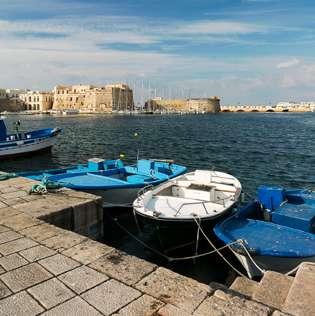
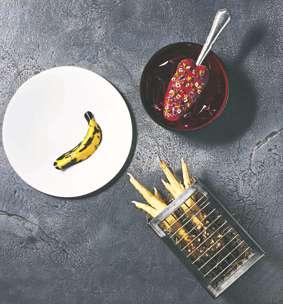
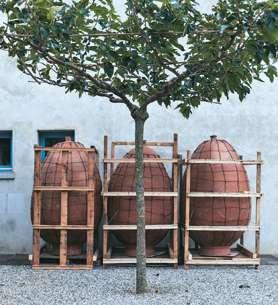
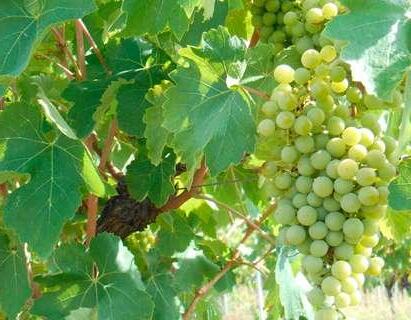

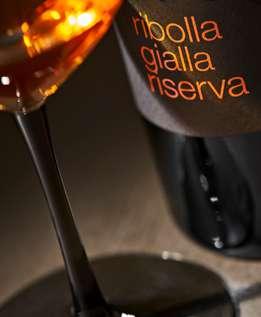
The Great North by bike from Copenhagen food labs to smørrebrød and oysters with a view of the fjords
Recipes: Chiara Pavan&Francesco Brutto Tasting Notes World Wines
5 6 10 12 16 42 46 60 S OM MA R I O WINE TRAVEL FOOD year 24 number 155 july-august 2022 gamberorosso.it Orange is the new BLACK MATELICA MOUNTAIN BREEZE COPENHAGEN DREAM SALENTO SUMMER VIBES
72 88 100 106 108 16 100 72 60 88 46


Orange is the new path
In the summer of 2022 it is increasingly difficult to find a white wine that has not been macerated for at least two weeks in terracotta amphorae from Georgia, sanc tified by the bearded sommelier on duty, donning at least two tattoos. It is difficult not to find at least one muddy, cloudy white sold by the glass, which inspires fear but also a certain respect in the customer on duty. It is practically impossible not to find a macerated white among the small artisan wineries. It is even more difficult not to find them among the ranges of the more structured wineries, which have taken advantage of the wake launched by the smaller wineries. This is the current state and, considering the excess and clichés raised, the situation is increasingly fascinating and competitive. The return of maceration on whites is the constant of the last 15 years in the world of wine. A rediscovery that began as an enhancement of an ancient taste, of a viticultural tradition of the past, when our grandparents kept the must of white wines in contact with the skins for days, and which has now gradually become a global fashion, em braced by celebrity winemakers and wineries with millions of bottles. Maceration on whites first of all annihilated the dogma of colour, as taught by the various sommelier courses. The clear and paper coloured whites have left room for intense hues, even cloudy ones, which often make the small im perfection a stylistic trait. The bitter taste of the maceration of white grapes has been valued as an avant-garde element by the dining industry which was the first to strongly advocate orange wines, also thanks to their ability to pair with food, but above all for their ability to surprise, to break up, to question certainties. Orange wines have become a strong element of rupture and at the same time of identity, for the community of enthusiasts who have found themselves tasting new registers. An excess of maceration homologates the wines, say some famous winemakers. Very true, but isn’t that exactly what happens with an intensive use of selected yeasts or high-roasted small oak barrels? We wanted to dedicate the cover of this summer issue to the place where the best orange wines in the world are produced: Oslavia, in Friuli, a few kilometres from Slovenia. Few doubts about this. We did it to underline how much macerated whites, when well made, are extraordinarily capable of reading the territory and the reference grapes, in this case ribolla. On the other hand, as the local farmers say, “all the flavour of ribolla is in the skins, what’s the point of removing them?” We pay homage to a beautiful territory and to characters such as Josko Gravner, who inspired a path that is increasingly travelled today, although not always understood in its deepest message.


5 GAMBERO ROSSO MAY-JUNE 2022
Lorenzo Ruggeri
Food and
wine
tour on the Amalfi Coast: consolidations and news

In the province of Salerno, the Amalfi Coast extends for just 42 kilometres, from Punta Cam panella to Vietri sul Mare, how ever condensing an unspecified amount of photo-worthy scen ery, beaches and coves, historic villages, gastronomic riches. And a summer tour on the Amalfi Coast cannot fail to take into account refreshment breaks that live up to the local tradition. In addition to established ad dresses (and recently affected by restyling and chef changes) such as Il Convento in Cetara, Il Faro di Capo d’Orso in Maiori, the Santa Rosa Monastery in Conca dei Marini, there are also interesting new features. We re port them all in a precious map useful to organise your food and wine itinerary.
Food and wine tourism in Italy. Strengths and weaknesses
There are clear signs of a recovery after a difficult two-year period. This is the most comforting and awaited data of the Report on Italian Eno-gastronomic Tourism drawn up by Roberta Garibaldi, which annually publishes an es sential guide for the world of sector tourism, recording the needs, po tential and weaknesses of a very significant sector for the national economy. What does the 2022 report tell us?
1 In 2021, about 13% of bookings made on the TripAdvisor portal with Italy as a destination concerned food and wine-themed propos als
2 The wine-themed proposals were the best-selling, 6% of book ings concerned tastings and cellar tours. Tuscany and Piedmont in the lead
3 There are 129 museums of taste in Italy, more than in any other European country. The diffusion is widespread, and affects 18 regions out of 20. However, a museum of national importance on the French model is missing.
4 Only 36 museums out of 129 have their own website and the possibility of a “virtual visit” is almost always absent
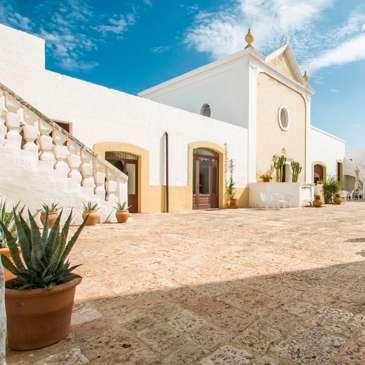
5 The number of farm holiday venues is growing: Tuscany has the highest concentration of “agriturismo” farms, followed by Trentino. The biggest growth, however, was recorded in Campania
6 Breweries are starting to make their way into the world of food and wine tourism. The leading region is Lombardy
JULY-AUGUST 2022 6 GAMBERO ROSSO NEWS
Sake is also produced in Italy. On the Po river delta

Sake and Italy are words that refer to two worlds very distant from each other, but which are finding points of conver gence. The Japanese alcoholic beverage, obtained from a fermentation process that involves rice, water and particular enzymes (koji spores) is now also pop ular in the Italian peninsula, driven by the spread of Asian gastronomy. In Emilia-Romagna, Stefano Albertin and his wife Barbara, after years of study and testing, produced the first Italian sake with IGP rice from the Po river delta. It is called Pila and takes the name of the homonymous town at the mouth of the Po river. «The beverage is made starting from Carnaroli quality rice grown locally» explains Albertin «which is naturally bleached and re fined, and to which we add hops of American origin but grown on the Venetian hills, all fermented for two months and finally made slightly sparkling.» The result is a product with truly unique or ganoleptic characteristics that go from the floral scent of hops to the flavour of rice that closes the tasting. The alcohol content does not exceed 10 degrees, the serving temperature is about 9 degrees C and that is naturally gluten-free. Production, at the moment, is very limited, but will increase, given the growth of interest in the product.
Tommaso Costa
Farewell Robert Wirth. Mourning the loss in the world of hospitality

Robert Wirth passed away at the age of 72. A life worthy of a novel. Fifth generation of a dynasty of Swiss-German hoteliers - his father Oscar ran the Eden hotel before arriving at the Hassler - he won his role in the family business by taking over the shares of his brother upon the death of his mother in 2001, becoming sole owner of the Hassler ho tel, of which he was general manager since the early 1980s. A five-star luxury hotel in the centre of Rome, itself an emblem of elegance and exclusivity, a favourite destination for the international jet set, from the Kennedys to the Grimaldis, from movie stars to pop stars. Deep deaf from birth - as told in the biogra phy “Silence was my first playmate” - despite his disability, he managed to conquer his role in the world of international hotels. Four degrees, three languages spoken despite the difficulties and a boundless love for the Eter nal City, are the numerous acknowledgements and certificates of esteem obtained in the course of his career. He was also responsible for the birth of the Imàgo restaurant, today led by Andrea Antonini, for years under the direction of Francesco Apreda.
Antonella De Santis
Record auction for the cellar of the Prince of Luxembourg
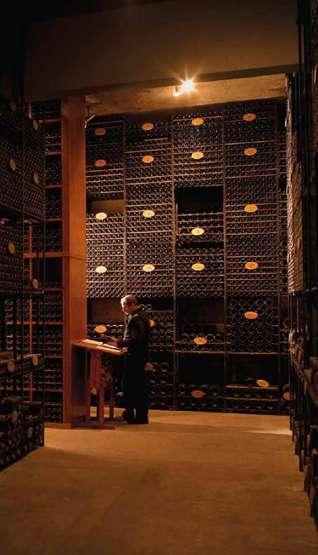
It will go down in history as one of the most important auctions for the quanti ty of wine coming from a single proper ty - 4,200 bottles - and for a charitable cause. Sold on 21 May at Sotheby’s the auction totaled 6.2 million dollars (4.9 million pounds). Under the hammer, wines from the personal collection of Prince Robert of Luxembourg, CEO and President of the Domaines Clar ence Dillon empire of Bordeaux (which also includes Château Haut-Brion and Château Quintus). The proceeds will go to the PolG Foundation (which address es medical research), founded by the Prince himself together with Princess Julie. The figures of the same are mind-boggling: of the 181 lots (4,200 bottles of rare wines overall), 86% reached prices above the high esti mates.
Loredana Sottile
JULY-AUGUST 2022 7 GAMBERO ROSSO NEWS
1

Vinegar in Mantua is a tradition with ancient origins and that has always been handed down from father to son. Acetificio Mengazzoli is a historic company that was founded in 1962, from the dream of Giorgio and Car la Mengazzoli to continue the Italian art of producing vinegar and spread it around the world. Their children Cesare and Elda then promoted the diversification of production, undertaking a growth path that combined attention to raw materials and the use of increasingly modern equipment, without sacrificing anything to the wealth of their parents’ experience. Tradition and innovation are perfectly combined in this family business.
«Our research work is continuous and over the years has led us to ex plore, know and welcome different fermentation methods, traditions and ingredients of fermented products around the
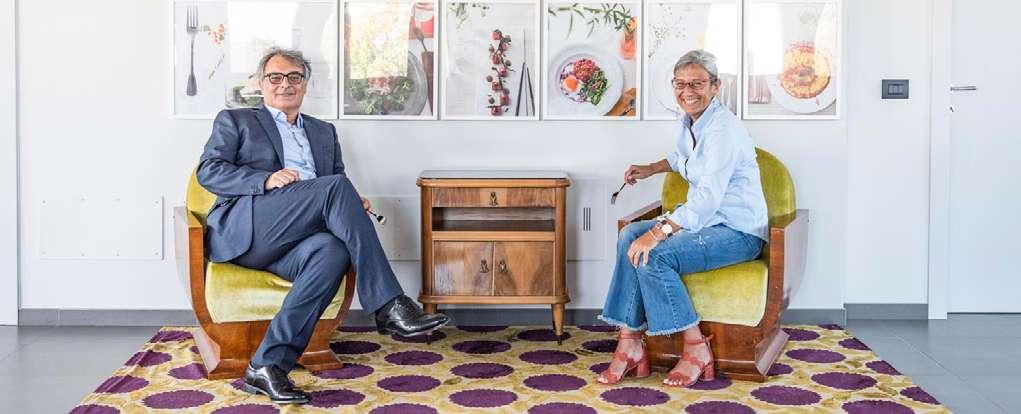
world. The pleasure of discovering and experimenting with new flavours and fragrances, and then blending them with our tradition and new production tech niques, is what drives us every day to innovate, giving life to new products,» underline Cesare and Elda Men gazzoli.
Thanks to this research, between past, present and fu ture, unique products have been created such as Ap ple Balsamic Vinegar, Mostagri, Agresto di Mantova,
Young and pop soul
The Acidulati Wo’t (World of taste) project was born from the study of different gas tronomic cultures around the world, from Asia to Latin America. A product line con sisting of six references: rice, honey, malt, date, banana and pineapple. These are not flavoured “vinegars,” but rather condiments obtained from the fermentation of the raw ingredient, without the addition of aromas and sugars, and obtained after years of study and selection of yeasts to maintain delicate but unique and well-defined aromas and flavours. They contain a bittersweet soul, preserve the flavours and co lours of the lands from which they draw inspiration and can season, liven up, com plement or simply harmonise dishes. They can enhance traditional cuisine and can inspire the dishes of those who love to experiment and invent.
Pop and traditional, the Mantua (and Modena) vinegar created by the Mengazzoli family
JULY-AUGUST 2O22 8 GAMBERO ROSSO GAMBERO ROSSO X ACETIFICIO MENGAZZOLI
1. Cesare and Elda Mengazzoli
2. The complete line of Wo’T Acidulates

3. The Agresto di Mantova
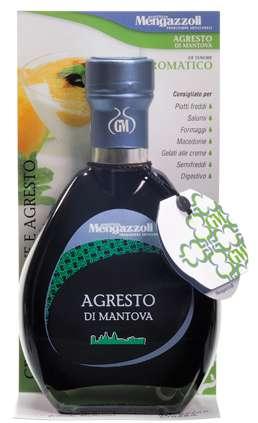
“Parpaccio” vinegar to be grated, Wo’t Acidulates, balsamic creams made with Balsamic Vinegar of Modena, studied in the early ‘90s with a team of international chefs. Yes, even Balsamic Vinegar of Modena: in the process of expansion Mengazzoli has also opened a factory in the homeland of one of the most established vin egars in the world, where it produces all the differ ent types of the range. «The constant attention to the market has continu ously stimulated us to provide consumers with prod
Traditions starts with the Gonzaga Agresto di Mantova is a dense and aromatic condiment obtained from the juice of unripe grapes, typical of Mantua cuisine starting from the Gonzaga court, as evidenced in the volume “L’Arte di Ben Cucinare” published in 1662 by Bar tolomeo Stefani, head cook at the Duchy of Mantua. Excellent as a condiment, due to its sweet and fruity taste, it goes perfectly with cold dishes such as cured meats and cheeses, but also with fruit salads, gelato creams and parfaits. Fur thermore, it can be consumed at the end of the meal as a digestive. Currently Mengazzoli is the only Italian company that distributes this veritable gastronom ic “gem,” also produced in a limited edition: the “Dimenticato dal 1972” is an Agresto still preserved in wooden barrels from the year 1972.
ucts characterised by high quality and health standards, with an ever-increasing attention to sustainability, also promoting organic
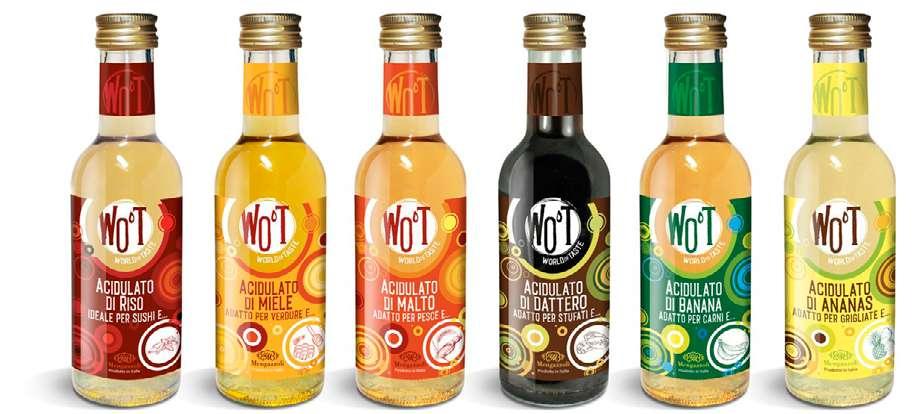
Acetificio
Mengazzoli – Levata di Curtatone (MN) – via della Costituzione, 41/43 037647444 – mengazzoli.it – f@Mengazzoli – $acetificiomengazzoli
2 3 JULY-AUGUST 2O22 9 GAMBERO ROSSO GAMBERO ROSSO X ACETIFICIO MENGAZZOLI
ITALO CESCON Madre 2019

Ormelle (TV) www.cesconitalo.it average retail price: 25 euros
We point out a unique white wine from the Veneto region. Domenico, Gloria and Graziella Cescon have managed to greatly develop the winery founded by their father, Italo, after World War II, while remaining closely linked to the principles that have characterized it from the very beginning: identity and pleasantness. Just a few vineyards along the Piave have grown today to more than 100 hectares and management has converted to organic. Production is divided along two lines: their historic Il Tralcetto selections and their premium wines, where the link between the vineyard and cultivar is expressed with depth and character. The leader of this new path is certainly the Madre, a Manzoni Bianco. The grapes are fermented in concrete vats and then in big cask, the wine is kept on itss lees at least for 6 months. The 2019 vintage put in a performance for the ages. As a non-filtered wine, it’s slightly cloudy in appearance, while the nose proves vibrant, tropical, redolent of citrus and fresh flowers. In the mouth it’s explosive, generous and perfectly supported by an acidity that lengthens the palate. The finish displays an energetic vibes and a deep sapidity. This is a truly versatile and food-friendly wine, we strongly suggest it to pair with a red shrimps tempura o some fried chicken wings with a lemon twist.

THE WINE TO BUY
JULY-AUGUST 2022 10 GAMBERO ROSSO NEWS

SEASONAL COCKTAIL
LILI MARLENE
3 cl Ketel One Vodka infused with Armellina
3 cl Homemade Sake and Apricot liqueur
2 cl Lemon juice
2 cl Corn osmosis
1 Spoon apricot jam
1 cl Pasteurised egg white


From the cocktail list that Mad has dedicated to the last 100 years of cinema history, comes a tribute to Marlene Dietrich. The cocktail is fresh and fruity, with apricot as the protagonist: “The pulp of the fresh fruit is combined with sake to create a homemade liqueur; corn kernels are macerated in vodka, lending to the distillate hints of almond and vanilla that broaden the aromatic bouquet of the drink.» Corn syrup is the curious note, with lemon juice offsetting the sweetness. Paired with the dish of Mad’s chef Francesco Montemurro: soy glazed tataki tuna with aubergines au naturale, roasted apricots and popped quinoa.
THE BARMAN : Simone Pifferi, born in 1991, from the province of Reggio Emilia, embarks on the bartending route on the Romagna Riviera as soon as he turns eighteen. He then moves between discos and pubs in the Modena area, becoming bar manager of Habanero and Bottega 39 and gaining flair experience at Vanilla Club in Jesolo. He is Gin David brand ambassador and participates in various competitions, winning second place at AIBES 2018 national team and becoming bartender of the year for the Emilia Romagna region in 2019. At Mad he puts his passion for food pairing into play, working in synergy with chef Francesco Montemurro.
 SEASONAL COCKTAIL by Paola Mencarelli
Simone Pifferi, Mad Cocktail & Cucina, Riccione
by Paola Mencarelli
SEASONAL COCKTAIL by Paola Mencarelli
Simone Pifferi, Mad Cocktail & Cucina, Riccione
by Paola Mencarelli
12 GAMBERO ROSSO MARCH-APRIL 2022 SPIRITS
Glass: Savage Champagne Coup Technique: Dry Shake, Shake & Double Strain Garnish: Garnish: Designed edible wafer

13
Those wines born from the wind The Vènt project by Toblino
“No wind is favourable to the sailor who does not know which port he wants to land at,” reads an aphorism by philosopher Lucius Annaeus Seneca. For those with clear ideas, however, that wind can be an extra ally to reach goals. The Vènt project by Cantina Toblino was born from this assumption. The Trentino wine compa ny has always made sustainability its mantra. Located in the heart of the Valle dei Laghi, in a unique area, nestled between the Dolomites, Lake Garda and the enchanting city of Trento. Beauty that leaves no way out: protecting it is the only possible way. This is, in fact, the path chosen by Cantina Toblino which with the Vènt Project shows once again its environmental responsibility. The goal is to tell the genius loci of this area, where the vines have been cultivated for cen turies on fields torn from the mountain, far from any form of intensive cultivation and where the winds play an essential role.
To territoriality and the effect of the winds, there is add ed the choice of employing terracotta amphorae for the fermentation and maturation of the white types,


Hosteria Toblino
Thanks to its picture perfect landscape and the many outdoor activities available, Cantina Toblino is one of the natural destinations for wine tourism. There are many travel packages for wine lovers, sports fans and nature lovers. A stop at Hosteria Toblino is a must, the place that, thanks to the skillful guidance of Franco Zanella and the inspiration of chef Sebastian Sar torelli, allows the opportunity to taste excellent wines paired with delicious dishes - from lake fish to black truffles, from Rendena breed meats with herb canederli dumplings - revisited in a gourmet key. The Hosteria is open all year round.
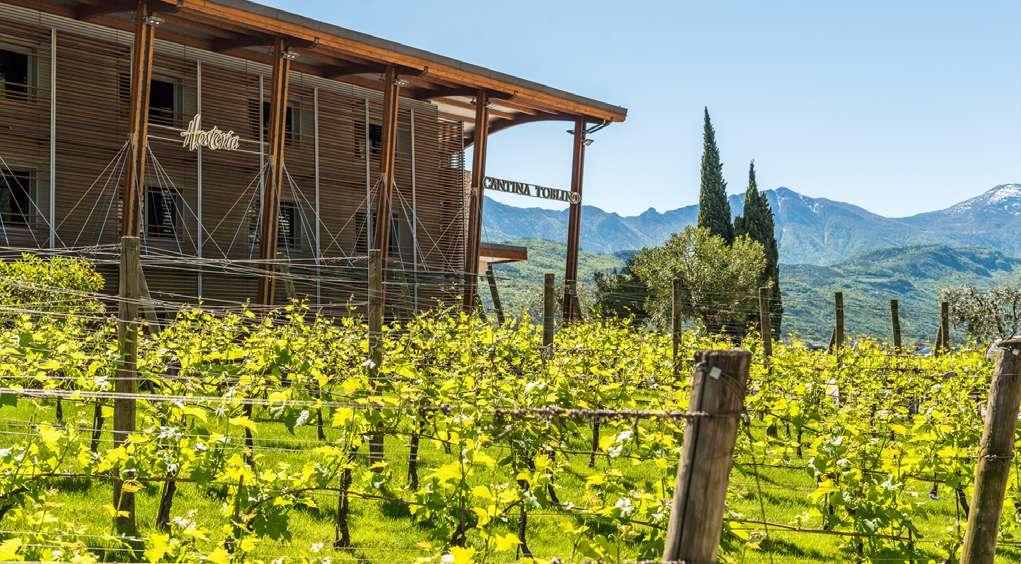
JULY-AUGUST 2O22 14 GAMBERO ROSSO GAMBERO ROSSO X TOBLINO
Foll ‘19 lo Chardonnay della Valle dei Laghi Foll is an intense and persistent wind that blows over the Trentino Valleys. But Foll is also the name of this Chardonnay, which is part of the Vènt line and which recalls the persistence and intensity of the wind by the same name. What makes this wine unique is the wine making process, which involves the division of the must between steel, terracotta amphorae and small barrels, before assembly and final ageing in steel and, then, in the bottle. The result is a straw yellow wine with golden reflections, which on the nose is refined and elegant, with pleasant fruity scents that com bine floral notes of jasmine and lily of the valley. In the mouth it’s delicate and then opens and fills the palate with all its complexity and vivacity. Per fect for the whole meal, it ex presses its best with white fish carpaccio and crustacean cru ditée, but also with white meats and fresh and medi um-aged cheeses. gionatura.
thanks to the teamwork between winemakers and agronomists of the cellar and consultant Luca D’Atto ma. The project, in particular, involves 40 hectares of organic farming relying on the Diocesan Institute and which are managed directly by Toblino srl, the winery’s farm. A true open-air laboratory, which is added to the 850 hectares of vineyards cared for by over 600 wine makers and which constitute the cooperative soul of Toblino.
At the moment there are six wines in the Vènt line: Foll, a complex Chardonnay that’s lively and elegant; Las, a round, full-bodied and tenacious Lagrein; Praàl, an in credibly harmonious Pinot Bianco; Da Fòra, an intrigu



ing and fragrant Manzoni Bianco; Baticòr, an elegant, delicate and refined Pinot Noir; Largiller, produced from the only native Trentino white nosiola grapes; Vènt extra brut, mountain bubbles born chardonnay and pinot noir grapes.
As proof of the environmental commitment of the Toblino cooperative, as the only Italian winery in the Eurac-Impetus project, a program launched by the European Union which over the next four years will involve seven bioclimatic areas, including the Valle dei Laghi, with the goal of testing new grape varieties and cultivation meth ods to tackle climate change.
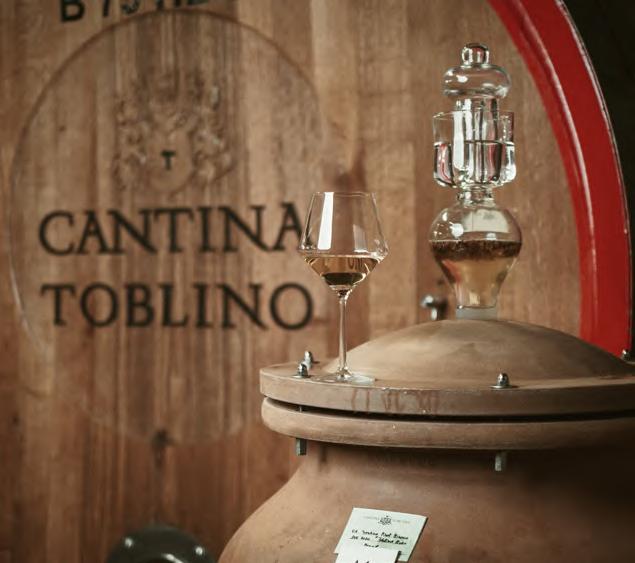
JULY-AUGUST 2O22 15 GAMBERO ROSSO GAMBERO ROSSO X TOBLINO
Toblino - Madruzzo (TN) - fraz. Sarche - via Longa, 1 - 0461564168 - toblino.it
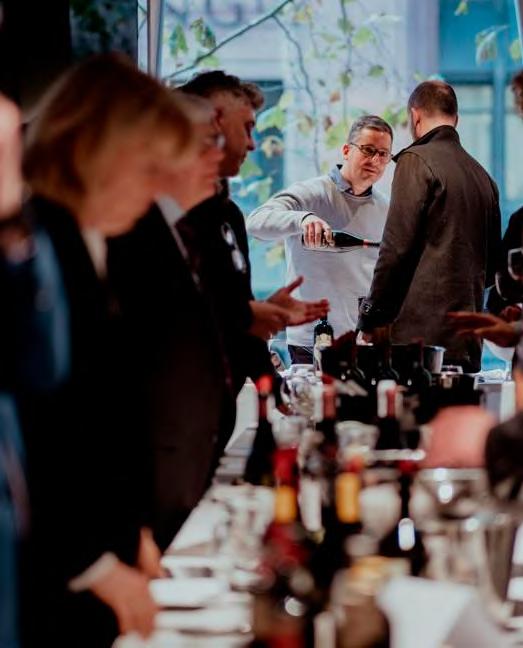
NEW WORLD VITICULTURE MEETS ITALIAN WINES

Three stages in Oceania for Gambero Rosso, between Italian grapes and great rugby stars who have become wine importers. Less fruit bombs and greater acidity: Australia and New Zealand are changing their palate and are looking to the beautiful country with increasing interest. Even by imitating its productions, as in the case of Prosecco
by Marco Sabellico
The Top Italian Wines Road show is back in Sydney after a 3-year hiatus. The recep tion was nothing short of ex ceptional. The Gambero Rosso event was held at the central Doltone House in Sydney, opposite the spectacu lar Hyde Park of the capital of New South Wales. In the evocative Grand Ballroom, the 52 producers received an uninterrupted flow of aficionados and wine professionals throughout the afternoon. Participants were able to taste over 150 top labels of Italian oenology. As we have often seen in international tours of recent months, Gambero Rosso and Italian producers for many cities is the first important post-pandemic wine event, and the joy of returning to events of this level multiplies the pleasure to reconnect in person with the protagonists of the Italian wine scene. On the other hand, considering the whole of 2021, the export of Italian wine to Aus tralia has significantly increased even compared to the pre-Covid period, passing from 65 to 74.5 million euros. In the first two
The farther you travel, the closer you are. 15 thousand kilometres from Italy, 9 hour time difference, and the world in between. Yet, Italian dining in Sydney is one of the best and most vivacious in the world. During our tasting event, we announced our Top Italian Restaurants in Sydney. Here’re the winners:
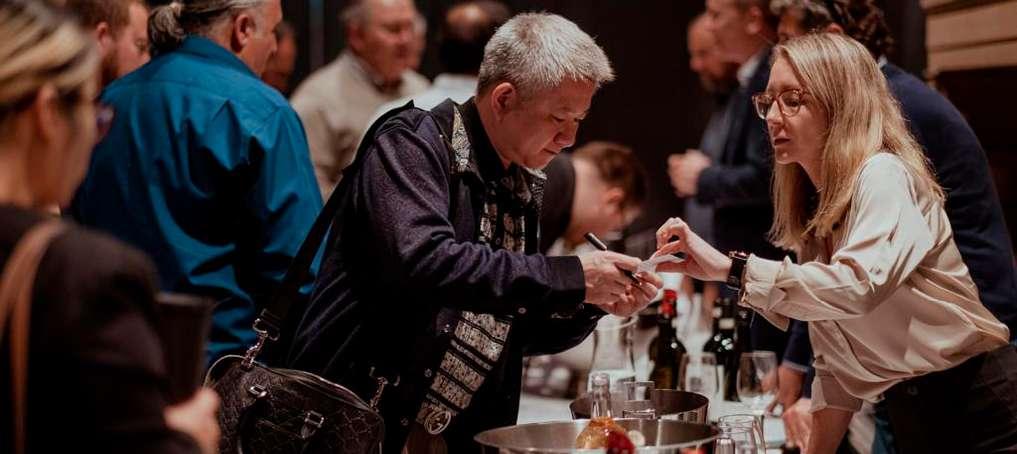


Pendolino - 1 fork
Olio - 1 fork
Marta - 1 fork
A’ mare - 2 forks
Leo - 1 fork
Ormeggio at the Spit - 2 forks
Pilu at Freshwater - 2 forks
LuMi - 3 forks
Al Taglio - 3 slices
Paski vineria Popolare - 2 bottles
JULY-AUGUST 2022 18 GAMBERO ROSSO EVENTS
TOP ITALIAN RESTAURANTS IN SYDNEY
months of 2022, Italy exported over 2.1 million litres of wines and musts to Australia, substantially stable quantities compared to the 2.2 mil lion in the first two months of 2021. Considering the values, according to Istat data, the amounts are increas ing and go from 9.75 million in the two months of 2021 to 10.1 million in 2022.
WHERE AUSTRALIAN WINEGROWING IS HEADED
Looking at Australia in reverse - from the point of view of a producing coun try - these have certainly not been easy years. The Australian wine sec tor, in fact, had to deal with a diffi cult geo-political situation, caught between health emergencies and the lockdowns and frictions with the Chinese government which imposed excise duties over 100% higher than Aussie wines, effectively eliminating Australian exports overnight. From conversations with importers and from the feedback with specialised
TOP ITALIAN RESTAURANTS IN MELBOURNE
There is so much Italian rhythm in Melbourne’s dining scene, a veritable paradise for gourmands. We are spoiled for choice with mini-bistros, haute cuisine restaurants, and many delightful wine bars. Not to mention the extraordinary performers of the traditional Neapolitan pizza art. Here’re the winners:



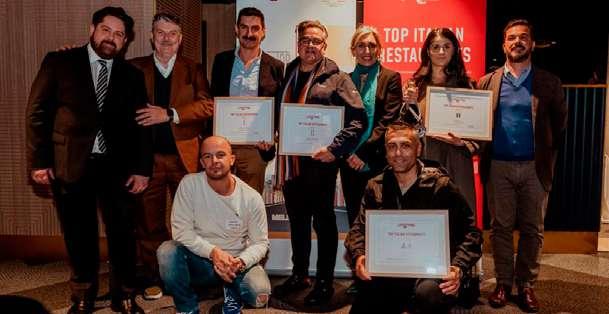
Trattoria Emilia - 1 fork
Tipo 00 - 2 forks
Agostino - 2 bottles
Grossi Florentino - 2 forks
Osteria Ilaria - 2 forks
400 Gradi - 2 slices D.O.C Pizza & Mozzarella Bar - 2 slices
TOP ITALIAN RESTAURANTS IN AUCKLAND
Immersed in the magical atmosphere of the queen of regattas, with a spectacular view of the bay of the city, 30 prestigious Italian wineries presented their wines to the Kiwis (this is how the inhabitants of New Zealand are proudly called) who came in large numbers to the event. A lot of attention and participation also in the masterclassesconducted by Marco Sabellico and Giuseppe Carrus - a real journey into Italian wine. Last but not least, the celebrations for the Top Italian Restaurants in the city: six awardwinning restaurants, led by Poderi Crisci, Pasta and Cuore and Farina, awarded respectively with Due Forchette (the firsts two) and Due Spicchi.
JULY-AUGUST 2022 19 GAMBERO ROSSO WORLDTOUR
sites, a drop of 97% in value and 93% in volume is evident. Added to this is the congestion of international ports and the multiplication of shipping rates, which end up creating a sort of perfect storm for one of the global players in the wine trade. The wine sector is re acting vigorously to this, but exports to other Asian destinations only par tially compensate for this moment of crisis. Singapore (+108%), Hong Kong (+45%), Taiwan (+65%) and Thailand (+31%) are rapidly growing markets, especially in the role of hub, or as a stage of more complex triangulations towards Mainland China. But it will take years to return to the status quo of a leading sector of the Australian econ omy.
On the other hand, the domestic mar ket is growing and the imports of Ital ian wine too, in the wake of a trend that sees the birth of new Italian restaurants and the consumption of our wines in constant rise. And then… perhaps the time of “fruit bombs,” wines that are soft and rich in fruit but not too acidic and tannic, at least for the most educated palates, seems to be ending. This is evident by the growing success of Italian grape varieties in Aus tralian vineyards. Arneis, montepulcia no, nebbiolo, barbera, fiano, sangiovese, dolcetto, nero d’Avola and more recent ly, alas, glera are giving good results in Australia, and the hectares of vineyards planted with these grapes are growing. “These are vines that resist warm climates well, give more acidic and vertical wines, perhaps not too similar to the Italian ones” says Matt Irwin of Trembath & Taylor, an important import and distribution company “but they represent a new chal lenge for a country of young winemaking tradition like Australia.” Consumers are always looking for the new, and this then ends up paving the way for the original Made in Italy.
“Australians are looking for new stimuli and authentic flavours,” says Matt Sec chiero, owner of Gusto in Ettalong Beach “authentic Italian regional cuisine, combined with Italian wines is the novel ty.”
“Italian wine exerts a growing fascination on Australians” tells us Daniel Marcella, who, with his Italian Wine Society, deals with the import, distribution and training around Italian wine, which he also offers directly to individuals through numerous wine clubs. “They ask us for presence, storytelling and a lot of training, as well as good wines,” con cludes Daniel.
COMPETITION FROM LARGE CHAINS AND AUSSIE “PROSECCO”

We also had confirmation of the good moment our “down under” oenolo
gy is experiencing at the Melbourne event on May 25, in the halls of Q Events by Metropolis, in the central Queen Street of the state capital of Victoria. Here too the usual script of the Gambero Rosso Top Italian Wines Roadshow unfolded throughout the day (12 pm - 8.30 pm). The stations of the 50 producers were very crowd ed, first by the operators and then by wine lovers, the three Masterclasses (held by yours truly and by Giuseppe Carrus) also in this case “all sold out” with about sixty participants each.
“The export of wine to Australia is in huge growth” told us Hanna Pappa lardo , Consul General of Italy, who attended the event and the awarding of the best restaurants in the guide Top Italian Restaurants in the World, “this year we have seen +17% increase, with a turnover of 121 million dollars,
The Villa Sandi Best Contemporary Wine List Award in Melbourne goes to Agostino! Wine lovers shouldn’t miss Agostino in Carlton. Hop in for some Italian wine-related shopping or take your time and taste some wine to pair with a range of Italian regional dishes, from burrata & peppers to bigoli pasta with duck ragù. For an enhanced wine experience, don’t miss dinner in the bluestone cellar.

JULY-AUGUST 2022 20 GAMBERO ROSSO EVENTS
with prospects for further growth in 2022.”
“Even those like me who represent in ternational cuisines other than Italian,” told us Masahiko Iga , sommelier of Ishiguza in Melbourne, “find inspira tion in Italian wines, which are truly food friendly and allow us new flavour pairings, in my case with Japanese cui sine. It is a key element for their suc cess.”
“The scenario is positive and will con tinue to be so in the next few years” maintains Aldo di Filippo , manager of Ethica Wines for the Pacific area, “but there are also critical elements. There are not only specialised import ers, in recent years the big chains of bottle stores and liquor stores, real gi ants of distribution, have started an ag gressive pricing policy and labels with their own brand (Buyer’s Own Brands) which in the long run lowers the value of the wines and with an offer focused on the low range does not favour the higher level producers. For this reason, events such as the one hosted by Gam bero Rosso, which is accompanied by an internationally renowned Wine Guide, are essential for consumer education. A classic example is the attitude towards Prosecco, which they often import by entering into contracts that effectively bind the producer, then giving ample space to the Australian Prosecco which excels in sales and on the shelves.” One of the problems is the use of the Pro secco appellation, which is legal for Australian glera-based wines sold in Australia, which however damages our exports even if their sale is pro hibited in Europe. A knot that will have to be resolved at EU level.
FIRST TIME IN NEW ZEALAND

The last stop of our trip to Oceania was New Zealand, where Gambe ro Rosso and the Top Italian Wines

by Michela, shows a great character, with brave choices and a lot of research between Italy and Australia. Bravi!
Roadshow with its producers landed for the first time... We didn’t use this maritime verb at random: the event of 29 May was held in a very presti gious venue, among the most beau tiful ever used by Gambero Rosso around the world: the great hall of the Royal New Zealand Yacht Squad ron, the most famous nautical club in the world, the one that organises, and has won several times, the fa mous America’s Cup. Here among a thousand trophies, burgees and flags, at the foot of the majestic America’s Cup, with a beautiful view of Auck land Bay where hundreds of sailing boats practise every day, our produc ers were kept busy all day by a very large audience. It was the first time
that an event of this size had been or ganised, and as in neighbouring Aus tralia, everyone’s expectations were very high. Great participation also in the Masterclasses, fundamental to tell the scenario of contemporary Italian wine to an attentive and ex pert audience, accustomed to drink ing great wines, especially from New Zealand, of course, but which are among the best in the world especial ly when it comes to typologies and terroirs of extraordinary vocation such as Sauvignon Blanc from Marl borough or Pinot Noir from Central Otago. It was an exciting day for the really friendly welcome and for the great interest in our products. Today Italian wine in New Zealand
JULY-AUGUST 2022 21 GAMBERO ROSSO WORLDTOUR
IThe Villa Sandi Best Contemporary Wine List Award in Sydney goes to LuMi! Simply one of the most stimulating, creative and original gastronomic experiences present in our guide. Federico Zanellato and Michela Boncagni’s restaurant is always in constant evolution, innovating by drawing on the best local producers, with an eye to sustainability, very clean flavours, sharp and incisive contrasts. There is room for experimentation and contamination, from Japan to Australia, with excellent technical bases. The wine list, designed
is worth 11.6 million euros (2021 data), an increase compared to 2020, when it did not exceed 8.5 million euros.
“Relations between our two countries have always been excellent,” recalled Nicola Comi , Deputy Head of Mis sion of the Italian Embassy repre senting the Ambassador, who came specifically from the capital Wel lington to deliver the Awards of the Top Italian Restaurants in the World guide. The crowded Masterclasses once again acted as a cultural glue to the event and recalled how at the origin of New Zealand wine histo ry, between 1895 and 1909 there was the important figure of Romeo Bragato, oenologist and agronomist trained at the Oenological School of Conegliano, who has set the conditions, with his stud ies on the different terroirs and the most suitable grapes, for the birth of a flourishing viticulture.

“A very important event that we have been long waiting for,” Roberta Sal amon of the Italian Chamber of Commerce in New Zealand told us, “which cemented the success of Made in Italy in this country that has always been very close to us”. “A great event also for the Italian community in New Zealand, which is numerous and atten tive in keeping contact with the moth erland,” added Chiara Corbello of Ondazzurra, a radio that broadcasts in Italian and which dedicated ample space to the event. “Thanks for the invitation to the event,” Marty Pickering , winemaker of the prestigious Stonyridge Vineyard, a winery on the nearby island of Waiheke, also told us, “The wines were a revelation! My consumption of Italian wine will increase significantly!” Among the participants in the event is also Antonio Crisci
The Villa Sandi Best Contemporary Wine List Award in Auckland goes to Baduzzi! Italian-style dishes, and Italian wine all in one in a setting that resembles a vintage bar. Baduzzi delivers an authentic taste of Italian-style dishes, by offering a diverse selection of wines that range from the north to the south of Italy.
from Poderi Crisci in Waiheke, where he also has an excellent restaurant offering flavours of the Italian South.
FROM RUGBY STAR TO ITALIAN WINE IMPORTER: THE STORY OF JOHN KIRWAN
And to conclude, after mentioning sailing, another national glory, Rugby, could not be missing from the event. Among those present we found - as an importer of Italian wines - none other than John Kirwan , legend of international rugby, world champion with All Blacks in 1987 and Italian champion with Benetton Treviso in 1989, as well as coach of the Italian national team from 2002 to 2005. “I lived in Treviso, I love Italian wine and
so I decided to import it into our coun try,” he told us. John’s import compa ny is called JK.14, and he runs it with his daughter Francesca . They import wines from all over Italy and have a certain ambition: “We want to become the largest importer of Italian wine in New Zealand,” Francesca confides in perfect Italian. “The only problem for me now is practice...” Yes, because Francesca is for the third time na tional champion of Beach Volleyball. Good sports blood. “Thanks again to Gambero Rosso for this beautiful event which is crucial in promoting Italian food and wine culture, which we all love very much. Come back soon!” John and Francesca told us. It’s hard to decline such an invitation...

JULY-AUGUST 2022 22 GAMBERO ROSSO EVENTS
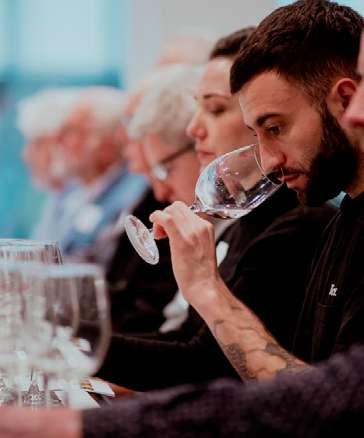
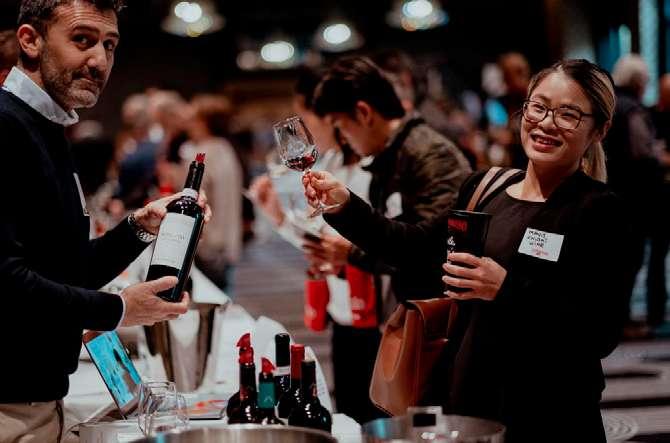
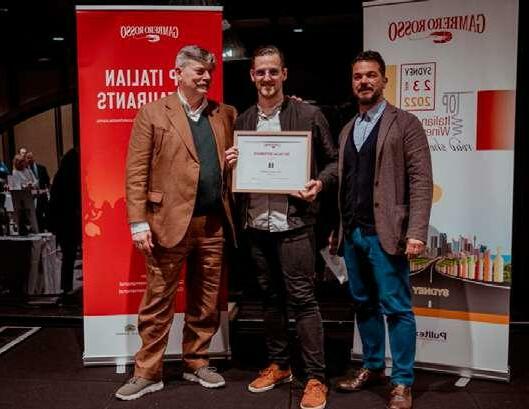
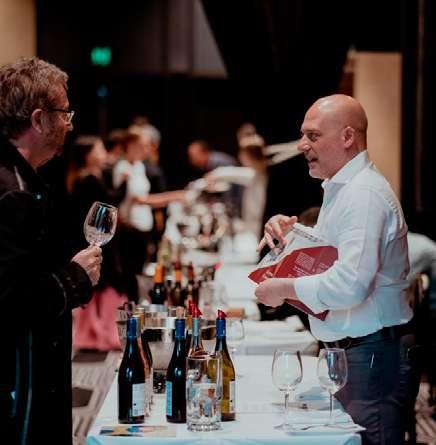
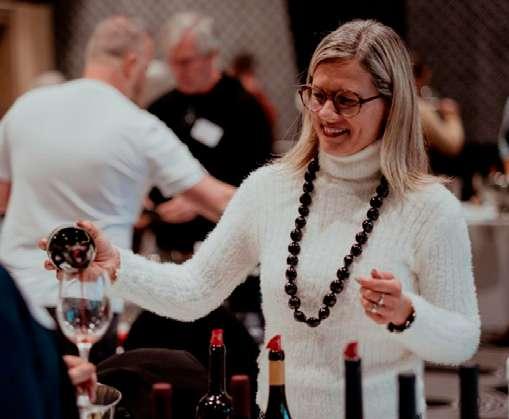

JULY-AUGUST 2022 23 GAMBERO ROSSO WORLDTOUR
SYDNEY
PHOTOGALLERY


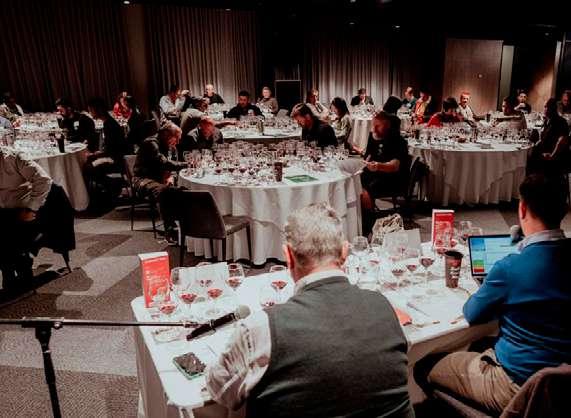

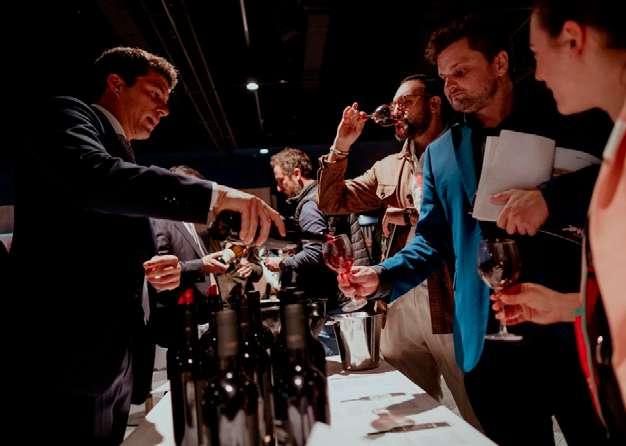
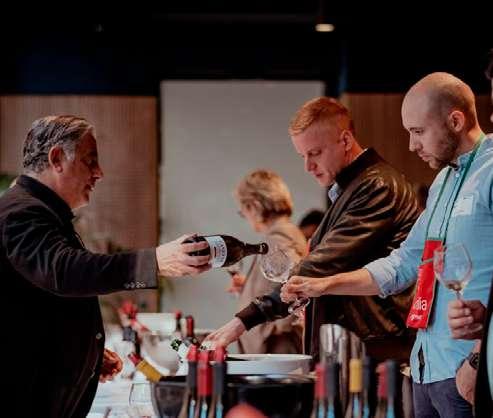
JULY-AUGUST 2022 24 GAMBERO ROSSO EVENTS
MELBOURNE
PHOTOGALLERY
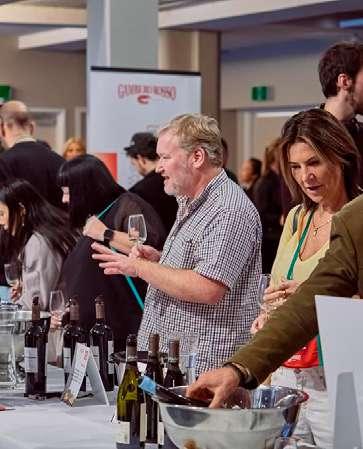
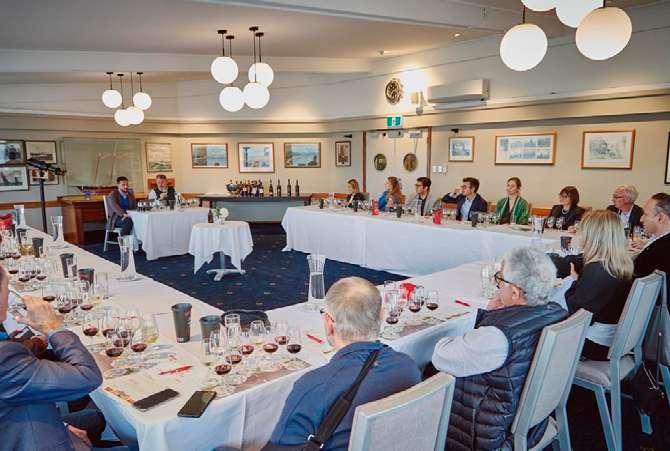



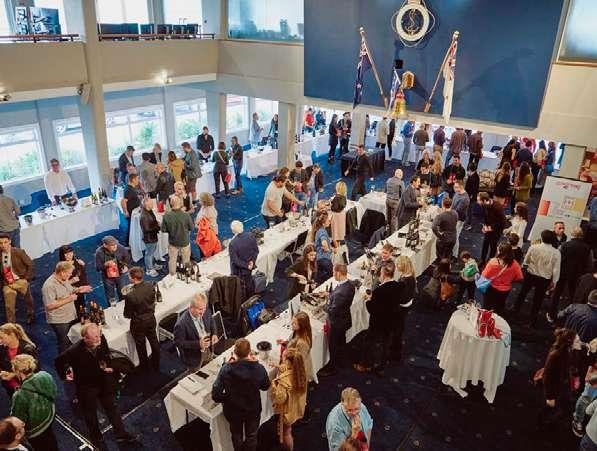
JULY-AUGUST 2022 25 GAMBERO ROSSO WORLDTOUR
AUCKLAND
PHOTOGALLERY
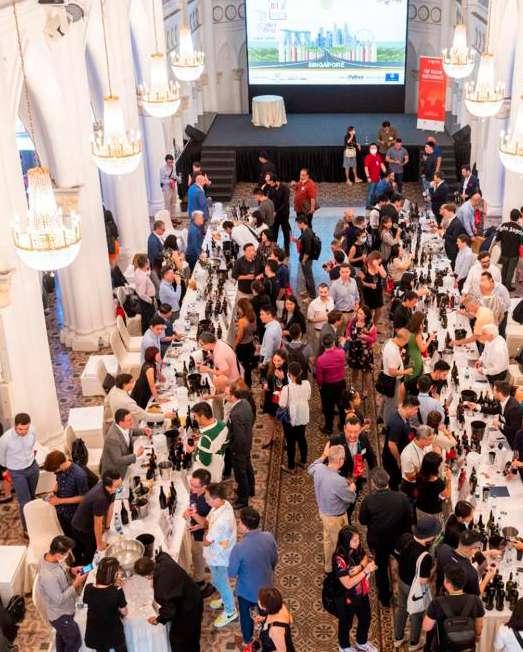
GAMBERO ROSSO IN ASIA. TIME FOR ITALIAN WINE TO REPOSITION
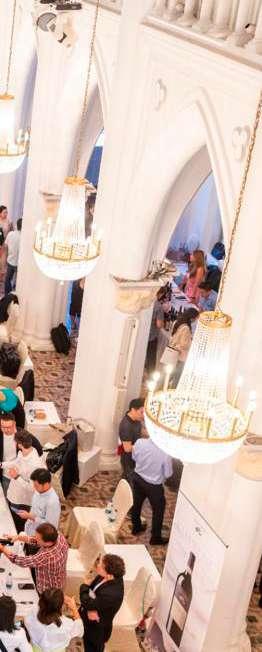
After the collapse of Australian imports, it is the right time for Italy to make its way into the Asian market. Starting with Singapore, the emerging commercial hub that is overshadowing Hong Kong. great reception for the Top Italian Wines Roadshow also in Vietnam, where the economic boom pushes the consumption of wine. Now we need events and training
by Marco Sabellico
Gambero Rosso is back in Asia. And from one of the main gateways: Singapore. The strategic role of this Asian city-nation is undeniable, as an important commercial hub for the re-exports of a good portion of the wine that transits the country. The main des tinations are Japan, Malaysia, Main land China, Thailand, Hong Kong and Taiwan. “It is a fundamental market today for the control of Southeast Asia,” Jessica Anne Tan, SingaPoured journalist told us, “especially now that the Hong Kong star seems to fade and trade tensions with China have put a decisive player like Aus tralia on difficulty in this area.”
SINGAPORE: ITALY TAKES SPACE BETWEEN FRANCE AND AUSTRALIA
On June 1st, the Top Italian Wines Roadshow stopped off at the now tra ditional venue for our events, the beau
tiful and historic Chijmes Hall complex in the heart of the capital. From morn ing until evening, hundreds of opera tors, sommeliers and wine enthusiasts from Singapore’s affluent communi ty flocked to the gothic chapel of the historic complex on central Victoria Street to welcome over fifty Italian producers. The Italian ambassador, Mario Vattani, inaugurated the event in the capital of the former British col ony. “Singapore is a rich market, a nerve centre of international finance. There is a sophisticated public here who is fascinat ed by Made in Italy, from fashion to cars, not to mention the food and wine sector. A constant presence is essential, and quality events such as the ones hosted by Gam bero Rosso only strengthen our image and our exports,” said the Italian diplo mat during the opening ceremony and awarding of the Top Italian Restaurants guide’s prizes.
“For Italy there is ample room for growth”,
Arjen

an important import company, told us “the market is traditionally dominated by France, while for Australia, especial ly after the closure of imports from Chi na, it’s really tough. In this context, the success of Italian restaurants, the desire for new proposals and biodiversity rep resented by Italian wines is an irresist ible attraction for a cultured and atten tive public like that of Singapore.” This
HOW MUCH IS ITALIAN EXPORT TO SINGAPORE WORTH
The emerging Asian hub, Singa pore, has totalled a net growth in 2021 in regards the purchase of Made in Italy wine, which went from 15.2 in 2020 to 20.5 million euros. The increase in volume was also good, from 1.7 million li tres to 2.1 million litres.

JULY-AUGUST 2022 28 GAMBERO ROSSO EVENTS
Blom of Cornerstone Wines,
The Italian food scene in Singapore is on fire. During our event we ex tended the awards to the Top Ital ian Restaurants in town. Here’re the winners:

Buona Terra - 3 forks
Braci - 3 forks
Art - 2 forks
Guccio - 2 forks
Solo - 1 fork
Garibaldi - 3 bottles
Bar Cicheti - 2 bottles

Amò - 2 slices
TOP ITALIAN RESTAURANTS IN SINGAPORE

explains the good performances in recent years - for the first time in 2021 we exceeded the threshold of 20 million dollars in turnover - which have not been affected by the pandemic, but rather have given the opportunity to bring our wines closer to an ever-grow ing audience of important enthusiasts.
The same enthusiasts who filled the three masterclasses held by yours tru ly and by Giuseppe Carrus, which al lowed a large number of professionals
in the sector to deepen their knowl edge of typical Italian terroir and grape varieties. “The new generations are looking for wines less linked to the most famous areas of production and, above all, they drink for the pleasure of sharing and not to demonstrate social status. An interpretation that allows Italian wine to reposition on the market, avoiding direct competition with French wines and pro pose itself in a new guise, where the per ceived quality is mostly based on the di versity of the offer. And we know well that
The Villa Sandi Best Cotemporary Wine List Award in Singapore goes to Bar Chicheti!
Embedded in Singapore’s foodie paradise Keong Saik Road, Bar Cicheti resembles an Italian trattoria featuring a modern and elegant design. The dark wood square dining tables give the restaurant a chic yet rustic appearance, and the approximately 40 seats a cozy and welcoming feel ing. Handmade pasta dishes made with seasonal and imported ingredi ents, along with a carefully selected wine list. Wide range of classic Ital ian labels and natural wines neatly listed. A good place for wine geeks.
this is our strong point”, Michelangelo Berretta of the Italian Wine Club tells us. “In short, the novelty of post-Covid Sin gapore is this: what’s different is attractive and not frightening.”
VIETNAM: ECONOMIC BOOM AND CURIOSITY DRIVE CONSUMPTION
On June 3rd, however, it was the turn of Ho Chi Minh, ancient Saigon, which saw the highly anticipated return of Gambe ro Rosso to Vietnam after the years of the pandemic. The location chosen was the prestigious and central Hotel Rex with its large halls. The previous event in Hanoi in 2017 was a great success, and the producers of the Roadshow were ready to explore the country fur ther before the pandemic began. Today Vietnam has a population of around 100 million and a booming econ omy. With 60% of the active population and an average age of about 30, it is now one of the most promising destinations for our exports, and plays a key role in the economy of Asean, the association of 11 Southeast Asian nations.
JULY-AUGUST 2022 29 GAMBERO ROSSO WORLDTOUR
The usual script of the Roadshow events was repeated from 11 am to 5 pm, with walkaround tastings, Top Italian Restaurants Award cere mony, masterclasses, meetings with operators and enthusiasts. “This is proving to be a fundamental market in Asia for our country” confirmed Enrico Padula, Consul General of Italy in Ho Chi Minh, during the opening cere mony “Vietnam has proved extraordi narily resilient during the pandemic, which has not affected the economic performance of this rapidly growing economy.”
In fact, in the country, we too have seen vigorous growth, which for our sector means the opening of new hotels and restaurants, an incredible growth in the tourism sector with all its related activities, constant increases in con sumption. In a market that has al ways been dominated by national beer, there is a rapid increase in wine consumption, and with regard to this the greater economic availabil ity and the curiosity of young people towards more sophisticated products is moving up the average price of im ported wines, with great attention to Italian products.
“Vietnamese cuisine is sophisticated and


ITALIAN WINE IN VIETNAM
Exports of Italian wine to Vietnam totalled 12.8 million euros in 2021, an increase compared to 11 million in 2020. According to Istat data, vol umes also increased to 3.2 million litres, a sharp increase compared to the 2.2 million of the previous year. In the first two months of 2022, Italy recorded a wine export of al most 2 million euros to Vietnam, for 389,000 litres.
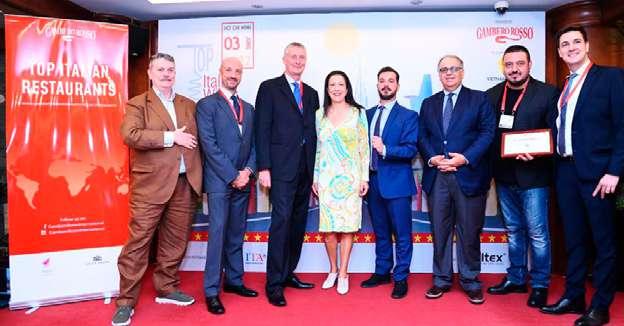
TOP ITALIAN RESTAURANTS IN HO CHI MINH CITY
Here’re the Top Italian Restaurants in Ho Chi Minh City! During our tasting event we awarded the historical Italian Restaurant Pendolasco by Carlo Anzon with one fork, while The Long @ Times Square achieved 1 slice as top pizzeria in town. Our list includes Opera (1 fork), and Basilico (1 fork). Plus a novelty: soon Da Vittorio opens in the city, another location of the famous restaurant of the Cerea brothers.
rich” said Dennis Tran, journalist and wine expert who assisted yours truly and Carrus in the three very crowd ed Masterclasses “and the pairing with wine is nothing new. There has been an important knowledge and consumption of French wine since the days of the col onies, but today we are very open to the new, which is represented by Italian wine. Especially the whites have been the surprise of recent years, with constantly increasing consumption, in a market that has always been more attentive to red wines.”
“Vietnam, and Saigon in particular, are our new bet” told us Matteo Fontana, executive chef who is due to open Da Vittorio in Saigon in the Times Square Building “Shanghai has been a great suc cess and with the Cerea family it seemed natural to focus on Ho Chi Minh… I can already tell you that the desire for Italy is great here…”. “Traditionally fine din
ing in Vietnam is either Vietnamese or French” confirms Sakal Phoeung, owner and executive chef of Le P’tit Saigon and Le Corto Wine Dining “but the curiosity for Italian wines is important, and consequently we are expanding the ‘tricolour offer on our wine lists.”
There are risks of uncontrolled growth, and importers often choose to promote their ownbrand, low-cost product lines. “This does not favour those who import high quality and focus on top producers such as those reported by Gambero Ros so” says Lien Do, brand manager of The Warehouse importer, one of the most important players in the sector “but with new markets in tumultuous growth is an inevitable phenomenon. Only consumer education can reduce the phenomenon.” And that’s what Vietnam is working on. Guaranteed by Gambe ro Rosso and… Dennis Tran!
JULY-AUGUST 2022 30 GAMBERO ROSSO EVENTS





Worldtour CALENDAR 2022/2023 23 SAO PAULO - Brazil trebicchieri GamberoRossoInternational YOUR PASSION IS OUR INSPIRATION www.gamberorossointernational.com Top Italian Wines Roadshow OCTOBER 15-16 ROME - Italy trebicchieri 2023 premiere NOVEMBER 13-20 USA/CARIBBEAN WINE SEA WORLD CRUISE Top Italian Wines Roadshow 28 SEOUL - Korea 25 TOKYO - Japan 2022 2023 trebicchieri MARCH 01 LOS ANGELES - USA 03 SAN FRANCISCO - USA trebicchieri 10 CHICAGO - USA trebicchieri 08 NEW YORK - USA trebicchieri Top Italian Wines Roadshow JANUARY 26 CAPE TOWN - South Africa ZURICH - Switzerland Vini d'Italia 23 LONDON - U.K. trebicchieri 14 PARIS - France trebicchieri - Vinexpo Special 18 DUSSELDORF - Germany trebicchieri - Prowein Special 16 MUNICH - Germany trebicchieri trebicchieri - Vinitaly Special APRIL 02-05 VERONA - Italy 18 MIAMI - USA Top Italian Wines Roadshow 25 MEXICO CITY - Mexico Top Italian Wines Roadshow 20 AUSTIN - USA Top Italian Wines Roadshow 23-25 SINGAPORE trebicchieri - Vinexpo Special 18 MELBOURNE - Australia Top Italian Wines Roadshow 27 BOGOTÁ - Colombia Top Italian Wines Roadshow HO CHI MINH - Vietnam Top Italian Wines Roadshow DECEMBER 01 03 NEW DELHI - India trebicchieri Explorer - Vinexpo Special trebicchieri trebicchieri 30 STOCKHOLM - Sweden FEBRUARY 01 OSLO - Norway 03 COPENHAGEN - Denmark Vini d'Italia PRAGUE - Czech Republic Vini d'Italia Top Italian Wines Roadshow MAY 16 SYDNEY - Australia MONTREAL - Canada trebicchieri TORONTO - Canada trebicchieri trebicchieri JUNE VANCOUVER - Canada 21 MIAMI - USA Italian Wines 2023 Worldtour CALENDAR 2022/2023 23 SAO PAULO - Brazil trebicchieri Top Italian Wines Roadshow OCTOBER 15-16 ROME - Italy trebicchieri 2023 premiere NOVEMBER 13-20 USA/CARIBBEAN WINE SEA WORLD CRUISE Top Italian Wines Roadshow 28 SEOUL - Korea 25 TOKYO - Japan 2022 2023 MARCH 01 LOS ANGELES USA Top Italian Wines Roadshow JANUARY 26 CAPE TOWN - South Africa ZURICH - Switzerland Vini d'Italia 23 LONDON - U.K. trebicchieri 14 PARIS - France trebicchieri - Vinexpo Special trebicchieri - Vinitaly Special APRIL 02-05 VERONA - Italy 18 MIAMI - USA Top Italian Wines Roadshow 25 MEXICO CITY - Mexico Top Italian Wines Roadshow 20 AUSTIN - USA Top Italian Wines Roadshow 23-25 SINGAPORE trebicchieri - Vinexpo Special 18 MELBOURNE - Australia Top Italian Wines Roadshow 27 BOGOTÁ - Colombia Top Italian Wines Roadshow HO CHI MINH - Vietnam Top Italian Wines Roadshow DECEMBER 01 03 NEW DELHI - India trebicchieri Explorer - Vinexpo Special trebicchieri trebicchieri 30 STOCKHOLM - Sweden FEBRUARY 01 OSLO - Norway 03 COPENHAGEN - Denmark Vini d'Italia PRAGUE - Czech Republic Vini d'Italia Top Italian Wines Roadshow MAY 16 SYDNEY - Australia JUNE 21 MIAMI - USA Italian Wines 2023 Worldtour CALENDAR 2022/2023 23 SAO PAULO - Brazil trebicchieri Top Italian Wines Roadshow OCTOBER 15-16 ROME - Italy trebicchieri 2023 premiere NOVEMBER 13-20 USA/CARIBBEAN WINE SEA WORLD CRUISE Top Italian Wines Roadshow 28 SEOUL - Korea 25 TOKYO - Japan 2022 2023 MARCH 01 LOS ANGELES USA Top Italian Wines Roadshow JANUARY 26 CAPE TOWN - South Africa ZURICH - Switzerland Vini d'Italia 23 LONDON - U.K. trebicchieri 14 PARIS - France trebicchieri - Vinexpo Special trebicchieri - Vinitaly Special APRIL 02-05 VERONA - Italy 18 MIAMI - USA Top Italian Wines Roadshow 25 MEXICO CITY - Mexico Top Italian Wines Roadshow 20 AUSTIN - USA Top Italian Wines Roadshow 23-25 SINGAPORE trebicchieri - Vinexpo Special 18 MELBOURNE - Australia Top Italian Wines Roadshow 27 BOGOTÁ - Colombia Top Italian Wines Roadshow HO CHI MINH - Vietnam Top Italian Wines Roadshow DECEMBER 01 03 NEW DELHI - India trebicchieri Explorer - Vinexpo Special trebicchieri trebicchieri 30 STOCKHOLM - Sweden FEBRUARY 01 OSLO - Norway 03 COPENHAGEN - Denmark Vini d'Italia PRAGUE - Czech Republic Vini d'Italia Top Italian Wines Roadshow MAY 16 SYDNEY - Australia JUNE 21 MIAMI - USA Italian Wines 2023 Worldtour CALENDAR 2022/2023 23 SAO PAULO - Brazil trebicchieri GamberoRossoInternational YOUR PASSION IS OUR INSPIRATION www.gamberorossointernational.com Top Italian Wines Roadshow OCTOBER 15-16 ROME - Italy trebicchieri 2023 premiere NOVEMBER 13-20 USA/CARIBBEAN WINE SEA WORLD CRUISE Top Italian Wines Roadshow 28 SEOUL - Korea 25 TOKYO - Japan 2022 2023 trebicchieri MARCH 01 LOS ANGELES - USA 03 SAN FRANCISCO - USA trebicchieri 10 CHICAGO - USA trebicchieri 08 NEW YORK - USA trebicchieri Top Italian Wines Roadshow JANUARY 26 CAPE TOWN - South Africa ZURICH - Switzerland Vini d'Italia 23 LONDON - U.K. trebicchieri 14 PARIS - France trebicchieri - Vinexpo Special 18 DUSSELDORF - Germany trebicchieri - Prowein Special 16 MUNICH - Germany trebicchieri trebicchieri - Vinitaly Special APRIL 02-05 VERONA - Italy 18 MIAMI - USA Top Italian Wines Roadshow 25 MEXICO CITY - Mexico Top Italian Wines Roadshow 20 AUSTIN - USA Top Italian Wines Roadshow 23-25 SINGAPORE trebicchieri - Vinexpo Special 18 MELBOURNE - Australia Top Italian Wines Roadshow 27 BOGOTÁ - Colombia Top Italian Wines Roadshow HO CHI MINH - Vietnam Top Italian Wines Roadshow DECEMBER 01 03 NEW DELHI - India trebicchieri Explorer - Vinexpo Special trebicchieri trebicchieri 30 STOCKHOLM - Sweden FEBRUARY 01 OSLO - Norway 03 COPENHAGEN - Denmark Vini d'Italia PRAGUE - Czech Republic Vini d'Italia Top Italian Wines Roadshow MAY 16 SYDNEY - Australia MONTREAL - Canada trebicchieri TORONTO - Canada trebicchieri trebicchieri JUNE VANCOUVER - Canada 21 MIAMI - USA Italian Wines 2023 Worldtour CALENDAR 2022/2023 23 SAO PAULO - Brazil trebicchieri GamberoRossoInternational YOUR PASSION IS OUR INSPIRATION www.gamberorossointernational.com Top Italian Wines Roadshow OCTOBER 15-16 ROME - Italy trebicchieri 2023 premiere NOVEMBER 13-20 USA/CARIBBEAN WINE SEA WORLD CRUISE Top Italian Wines Roadshow 28 SEOUL - Korea 25 TOKYO - Japan 2022 2023 trebicchieri MARCH 01 LOS ANGELES - USA 03 SAN FRANCISCO - USA trebicchieri 10 CHICAGO - USA trebicchieri 08 NEW YORK - USA trebicchieri Top Italian Wines Roadshow JANUARY 26 CAPE TOWN - South Africa ZURICH - Switzerland Vini d'Italia 23 LONDON - U.K. trebicchieri 14 PARIS - France trebicchieri - Vinexpo Special 18 DUSSELDORF - Germany trebicchieri - Prowein Special 16 MUNICH - Germany trebicchieri trebicchieri - Vinitaly Special APRIL 02-05 VERONA - Italy 18 MIAMI - USA Top Italian Wines Roadshow 25 MEXICO CITY - Mexico Top Italian Wines Roadshow 20 AUSTIN - USA Top Italian Wines Roadshow 23-25 SINGAPORE trebicchieri - Vinexpo Special 18 MELBOURNE - Australia Top Italian Wines Roadshow 27 BOGOTÁ - Colombia Top Italian Wines Roadshow HO CHI MINH - Vietnam Top Italian Wines Roadshow DECEMBER 01 03 NEW DELHI - India trebicchieri Explorer - Vinexpo Special trebicchieri trebicchieri 30 STOCKHOLM - Sweden FEBRUARY 01 OSLO - Norway 03 COPENHAGEN - Denmark Vini d'Italia PRAGUE - Czech Republic Vini d'Italia Top Italian Wines Roadshow MAY 16 SYDNEY - Australia MONTREAL - Canada trebicchieri TORONTO - Canada trebicchieri trebicchieri JUNE VANCOUVER - Canada 21 MIAMI - USA Italian Wines 2023 Worldtour CALENDAR 2022/2023 23 SAO PAULO - Brazil trebicchieri GamberoRossoInternational YOUR PASSION IS OUR INSPIRATION www.gamberorossointernational.com Top Italian Wines Roadshow OCTOBER 15-16 ROME - Italy trebicchieri 2023 premiere NOVEMBER 13-20 USA/CARIBBEAN WINE SEA WORLD CRUISE Top Italian Wines Roadshow 28 SEOUL - Korea 25 TOKYO - Japan 2022 2023 trebicchieri MARCH 01 LOS ANGELES - USA 03 SAN FRANCISCO - USA trebicchieri 10 CHICAGO - USA trebicchieri 08 NEW YORK - USA trebicchieri Top Italian Wines Roadshow JANUARY 26 CAPE TOWN - South Africa ZURICH - Switzerland Vini d'Italia 23 LONDON - U.K. trebicchieri 14 PARIS - France trebicchieri - Vinexpo Special 18 DUSSELDORF - Germany trebicchieri - Prowein Special 16 MUNICH - Germany trebicchieri trebicchieri - Vinitaly Special APRIL 02-05 VERONA - Italy 18 MIAMI - USA Top Italian Wines Roadshow 25 MEXICO CITY - Mexico Top Italian Wines Roadshow 20 AUSTIN - USA Top Italian Wines Roadshow 23-25 SINGAPORE trebicchieri - Vinexpo Special 18 MELBOURNE - Australia Top Italian Wines Roadshow 27 BOGOTÁ - Colombia Top Italian Wines Roadshow HO CHI MINH - Vietnam Top Italian Wines Roadshow DECEMBER 01 03 NEW DELHI - India trebicchieri Explorer - Vinexpo Special trebicchieri trebicchieri 30 STOCKHOLM - Sweden FEBRUARY 01 OSLO - Norway 03 COPENHAGEN - Denmark Vini d'Italia PRAGUE - Czech Republic Vini d'Italia Top Italian Wines Roadshow MAY 16 SYDNEY - Australia MONTREAL - Canada trebicchieri TORONTO - Canada trebicchieri trebicchieri JUNE VANCOUVER - Canada 21 MIAMI - USA Italian Wines 2023
PHOTOGALLERY
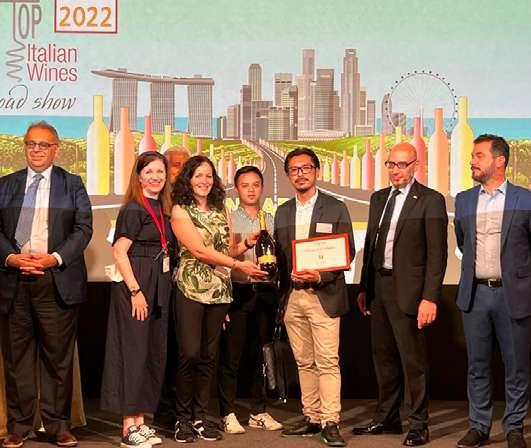

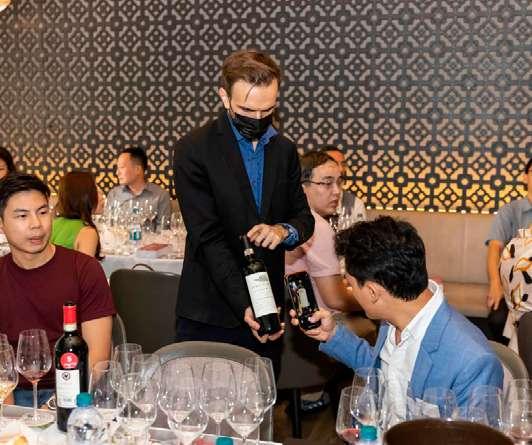
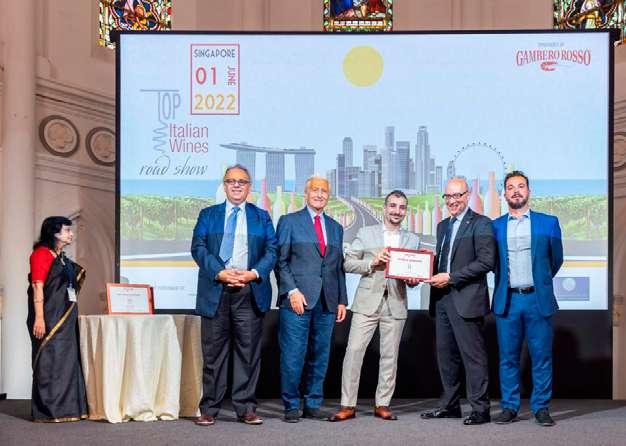


JULY-AUGUST 2022 32 GAMBERO ROSSO EVENTS
SINGAPORE






JULY-AUGUST 2022 33 GAMBERO ROSSO WORLDTOUR PHOTOGALLERY HO CHI MINH

FROM THE UNITED STATES TO CANADA: THE ITALIAN WINE ROUTE STILL POINTS TO NORTH AMERICA
The US surpasses Germany as the first importer of wine by volume, while in Canada Italy climbs the ranking of suppliers. On the strength of these results, Gambero Rosso has brought the best Italian production in the two countries, where the restaurant industry is still driving fine wine drinking
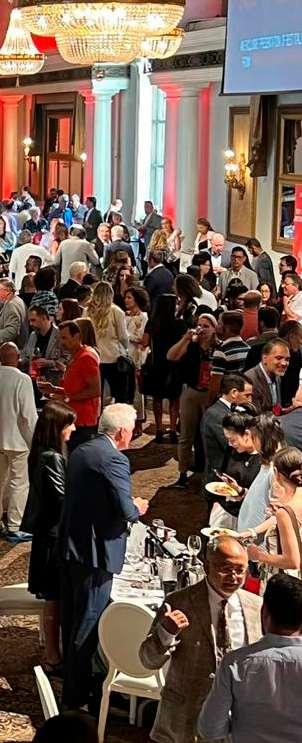 by Lorenzo Ruggeri and Gianni Fabrizio
by Lorenzo Ruggeri and Gianni Fabrizio
For the third time in a few months, the Gambero Rosso World Tour has made a stop in the USA, a market that continues to rep resent the main destination for Italian wine, and beyond. The latest data from the Oemv - Observatorio Español del Mercado del Vino show a growth in global imports in the first quarter of the year of 6.2% in volume and 11% in value over the same period of 2021.

In absolute terms: 314 millions of li tres and 1.49 billion dollars, which allowed the United States to estab lish itself as the leading importer country, not only in terms of value, but also in terms of volume, surpassing Germany for the first time in terms of quantity. As for Italy, the four-month period in value closes in balance com pared to the same period in 2021 for still wines, while the rise of bubbles now appears unstoppable, with a jump in volume of 12%.
WASHINGTON D.C.: HAUTE CUISINE IS SERVED
With this awareness, last June 15, Vini d’Italia Experience made a stop in Washington D.C., with a rich tasting of Italian wines - over 100 - and seminars staged at the Italian Embassy on June 15.

In the last five years we have returned to the city three times, noting an im portant food and wine growth, starting with restaurant dining which is now one of the most competitive in the American territory. Same goes for the various Asian trends and on the Italian cuisine front. During the event, the best examples of Italian cuisine evaluated in the Top Italian Restaurants guide were awarded. Fabio Trabocchi’s restaurant Fiola leads the ranking, perfectly led by the chef Antonio Mermolia, who con quers Tre Forchette, only three restau rants in all of the United States have this highest score. Thanks to a refined
cuisine and very clean flavours, togeth er with a wine list that is nothing short of deep and complete: winning the Vil la Sandi Best Contemporary Wine List award. “Here the Italian wine selections are still very focused on Tuscany and Piedmont because American journalists still write so much only about those wines, which is why events like those hosted by Gambero Rosso are so important, because they broaden the perspective on the whole Italian peninsu la. We need updates, rankings and ratings on all regions of Italian wine,” said Head Sommelier Sahid Al-Banna. Due For chette, on the other hand, went to the Al Tiramisù restaurant and to Rober to’s, a historic restaurant that moved to the nearby city of Vienna. Una Forchet ta went to Quattro Osteria, a rampant restaurant that confirms the desire for traditional Italian cuisine, and at Il Piz zico (in Rockville). The picture is com pleted by the pizzerias Il Canale (Uno Spicchio) and Stellina (Due Spicchi).
JULY-AUGUST 2022 36 GAMBERO ROSSO EVENTS
SEATTLE: WINE, TECHNOLOGY AND ITALIAN SONGS

Afterwards, the tour moved to Wash ington State for a stopover in Seattle, the true technological capital of the United States. Here are the headquar ters of Amazon (50,000 employees in the city), Expedia, Starbucks, Mi crosoft (in nearby Redford), as well as hosting the Google Cloud. Seattle, famous for its Space Needle, offers cuisine that is very attentive to in gredients, thanks also to top quality fish and a focus on sustainability that is different from that of many other large American cities.
The event was held at Block 41, with 80 wines for tasting and several guid ed in-depth moments. Like in Wash ington D.C., the Consorzio Tutela


WINES OF ABRUZZO IN THE SPOTLIGHT
The Consorzio Tutela Vini d’Abruzzo was a special guest of the two legs in the United States, organising a tasting corner complete with many referenc es, as well as some thematic insights. In Washington D.C. Lorenzo Ruggeri conducted a rich horizontal of Pecorino, talking about the origin and style of one of the most popular wines in recent years. This concept was also brought forth in Seattle, where the seminar, however, focused on the preview of the Cerasuolo d’Abruzzo 2021, a rich and sunlit year that promises fleshy and multifaceted wines. “For me, Cerasuolo d’Abruzzo is the future of the region, there are no rosé wines in the world with this same profile and with this char acter. Wines that express the territory and which are still too well known for their value”, commented Professor and oenologist Jeff McKay
del Sannio created a dedicated tast ing corner, with a focus on Falanghina del Sannio and Aglianico del Taburno, offered in pairing with some local gastronomic delights. Among the real Italian kitchens, award-winning Pas ta Casalinga, with Una Forchetta, is the restaurant housed in the famous Pike Place Market. Between moun tains of fresh crabs and bunches of flowers, there is room for a laborato ry of fresh pasta rolled out every day and cooked to perfection by Manuela Tartaglia. The other award brings at tention to Osteria Spiga with Due Forchette, historic Pietro Borghesi’s place. “For 25 years we have been carry
ing on traditional work with our cuisine that tells the story of Emilia-Romagna, gnocco fritto, Lambrusco, lasagna. We are happy to have become the meeting point of a small, highly qualified Italian community in Seattle. Having focused ex clusively on Italian wines from all regions (Villa Sandi Best Contemporary Wine List award; Ed.) has paid off.”
The evening of the event ended on the notes of Battiato and Italian historical songs from the ‘80s and ‘90s, thanks to the Italian musical group The Space Noodles, made up of Microsoft en gineers, researchers and scientists. Wine, music and cuisine in the name of Italian style.
JULY-AUGUST 2022 37 GAMBERO ROSSO WORLDTOUR
Caffè l’Aquila was also awarded, with Due Forchette, the only restaurant in Philadelphia.
CANADA: FROM MONTRÉAL TO TORONTO
After the USA, the Gambero Rosso World Tour has landed in Canada for two sold out events: the first in Québec (June 21), in French-speaking Montréal, the second in Toronto (June 23), capital of the province of Ontario. This country, with their numerous Italian immigrants and the important presence on the lo cal restaurant scene, has always had an excellent relationship with Italian wine. However, since it is a very large but sparsely populated country - according to the latest data, residents barely ex ceed 38 million - it cannot aspire to rep resent, like the United States, a market with large numbers. Yet, the Oemv data for the term tell us that Italian wines have increased by +39% in value, reach ing 100 million euros and giving Italy the first place as an exporter of wine in Canada, surpassing the USA (now in second place) and France which is relegated to third place. Furthermore, if on a global level Canada is importing less wine, it is paying more for it: the average price has risen by 11.3% to almost 5 euros per litre. Strengthened by this excellent news, the first leg of the Tour took place in Montréal in the presence of a large audience highly interested in discovering the oe nological beauties of Italy, which showed itself in all its splendour thanks to the wide selection of wines and appellations in representation from all over Italy. Many of the participants took advantage of the magnificent opportunity given by the two guided masterclasses to taste some of the most representative wines of the Italian appellations, all awarded with Tre Bicchieri by the Gambero Rosso Guide, for a total of 31 wines. There were many ideas for reflection and moments of exchange: the interaction, as a mat ter of fact, was quite intense, with many various questions aimed at deepening
THE BEST ITALIAN RESTAURANTS IN CANADA
During the events the best examples of Italian cuisine evaluated in the Top Italian Restaurants guide were awarded. Six venues in Montreal received accolades. In the restaurants section, we find Da Emma with Due Forchette recognition, Nora Gray and Da Vinci with Una Forchetta. For the smartest places rewarded with Spicchi segments there are: Bottega and Mercato comunale with Uno Spicchio. As for the best restaurant cellars, evaluated on the criteria of the number of labels present, research, craftsmanship and representation of the producers, Graziella restaurant won the most awards which, in addition to the Bottiglia award, also received the Villa Sandi Best Contemporary Wine List award In Toronto winning Due Forchette is Sotto Sotto while Coast wins Una Forchetta. The awarded pizzerias were Sud Forno with Due Spicchi and Forno Cultura with Uno Spicchio. Tre Bottiglie instead went to Bar Centrale Terroni, Due Bottiglie to Il Covo and to Déco, which also won the Villa Sandi Best Contemporary Wine List award

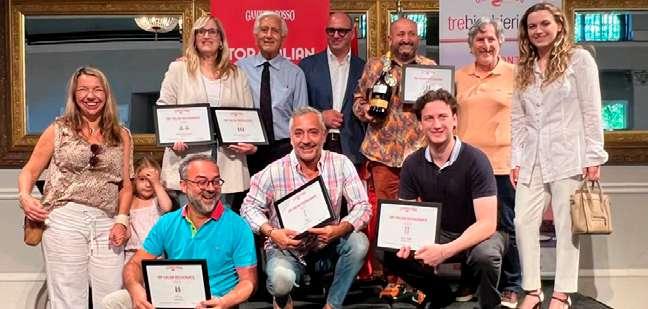
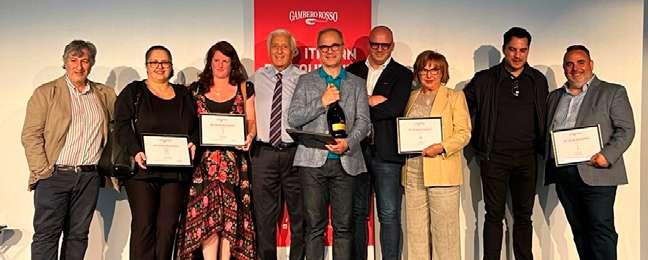
the Italian wine culture, even beyond the labels proposed for tasting. The Toronto tasting was more inti mate, but still aroused a lot of inter est from the public. A tasting that involved great reference samples of Italian oenology, moving between the North and the South of the peninsu
la. A small but energetic and exciting journey, with the precious presence of a special guest representing the Italian institutions: the the Consul general od Italy in Montréal Silvia Costantini, who moved with ease and pleasant ness among the tasting counters of the exhibitors present.
JULY-AUGUST 2022 38 GAMBERO ROSSO
EVENTS
Washington Seattle
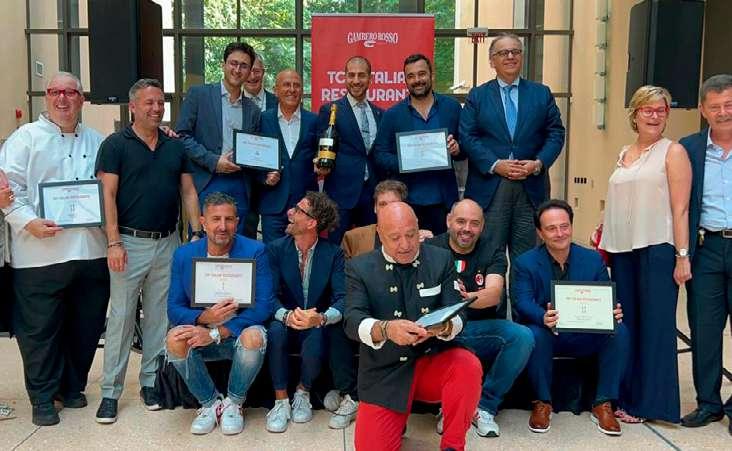
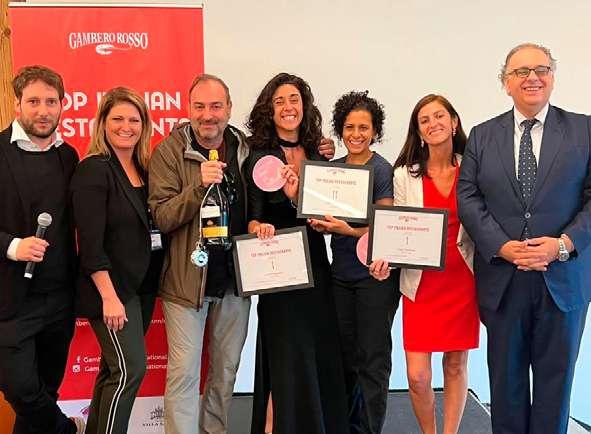




JULY-AUGUST 2022 39 GAMBERO ROSSO WORLDTOUR PHOTOGALLERY USA
PHOTOGALLERY CANADA
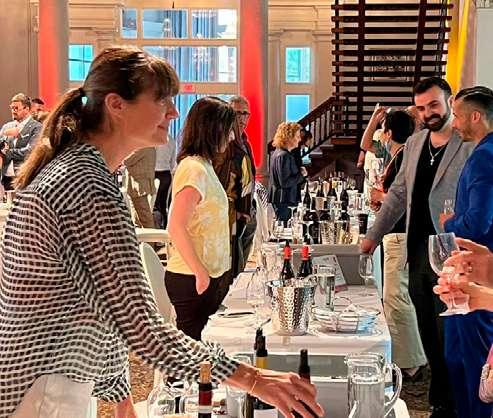




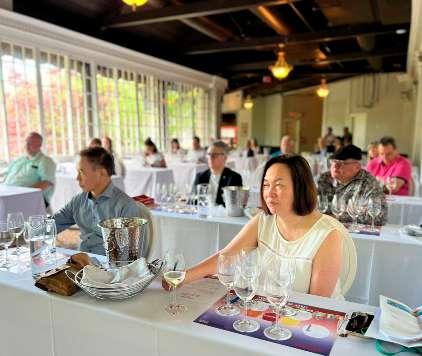
Montreal Toronto
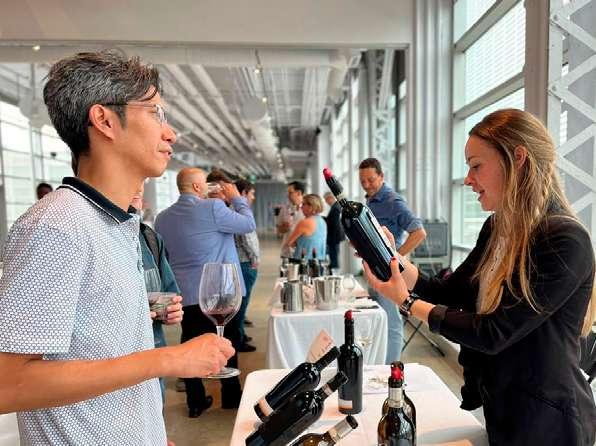
JULY-AUGUST 2022 40 GAMBERO ROSSO EVENTS




A MAGIC NIGHT IN NEW YORK
CELEBRATING BERLUCCHI AS WINERY OF THE YEAR
Sixty years of excellence and passion: the Ziliani family celebrates receiving the Gambero Rosso Winery of the Year 2022 award in New York
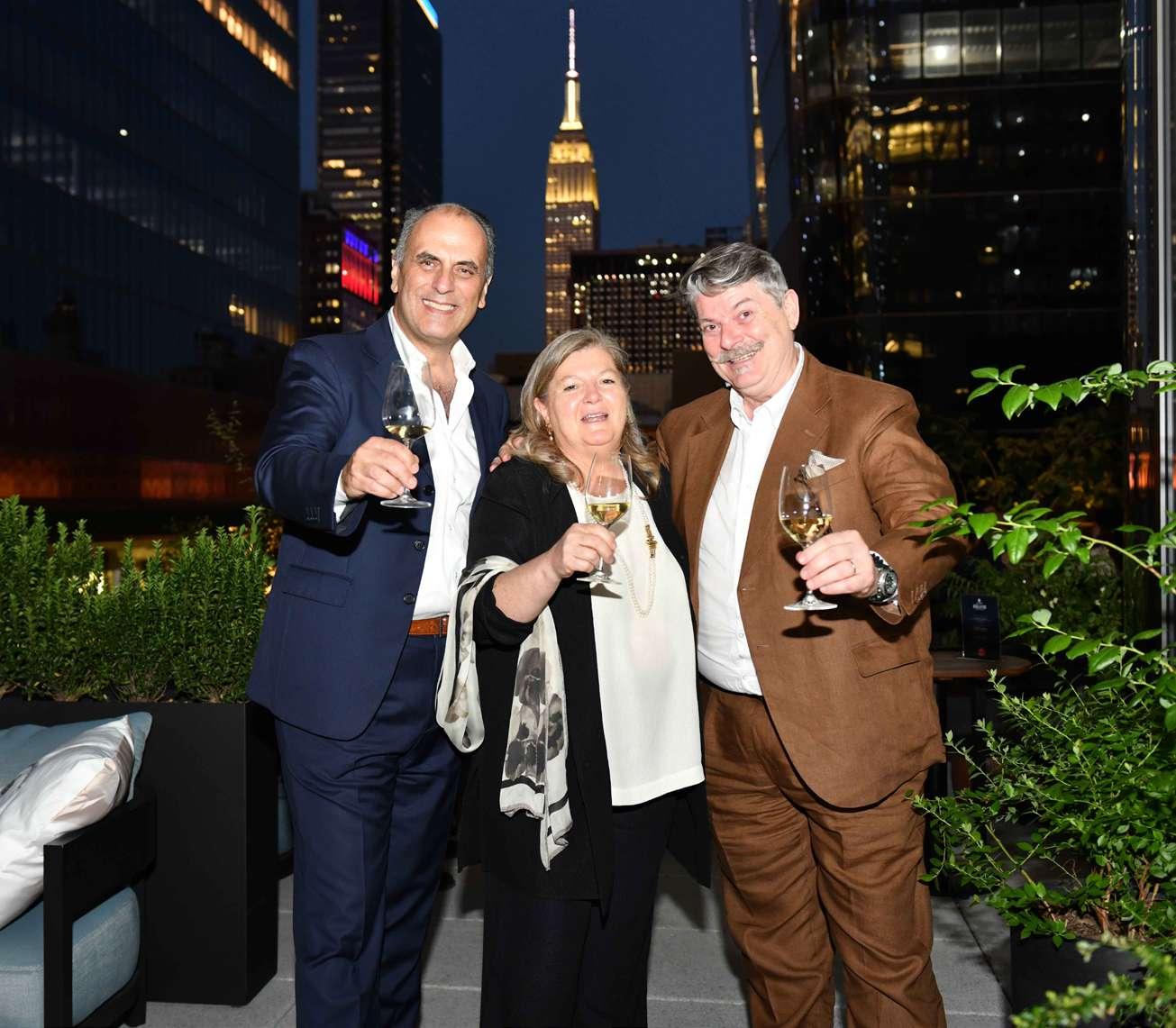
Guido Berlucchi & C. is a story that dates back a long way, from the second half of the 1950s, but which had an official start in 1961: selling the first bottles of a classic method that changed the history of a territory and educated the taste of Italians. These were the first 3,000 bottles of Pinot di Franciacorta that Franco Ziliani, then a young and passion ate winemaker, made in the cellars of Guido Berlucchi in Borgonato di Cortefranca. It was the beginning of an epic story that has led the company to become an internation al brand and to the birth, in 1967, of a denomination, Franciacorta, which today is the most important in terms of quality and quantity in the Italian classic method scene. Franco Ziliani, who recently left us after having celebrated his nineties, had a vision that is now carried for ward with passion and extraordinary competence by his three children, Arturo, Cristina and Paolo. Berlucchi exclusively produces Franciacorta, and what a Franciacorta! The awards obtained in the Gambero Rosso Gui da dei Vini d'Italia for the excellence of its cuvées have earned it the title of "Winery of the Year" in the 2022 edition, on the stroke of its sixtieth birthday. A big party was needed
THE TASTING
The tasting was led by Marco Sabellico and Arturo Ziliani. The wines illustrated the peculiarities of Guido Berlucchi & C. through an overview of the styles and two mini-verticals of the most important vintages of the company.
Franciacorta 61 Satèn
The Satèn is a typical style of Franci acorta. It is a Blanc de Blancs made exclusively from Chardonnay grapes that has a pressure of less than 5 atmo spheres, while normally the Francia corta cuvées are around 6. This means
a soft and creamy wine on the palate, with intense sensations of fruit, enliv ened by a fresh acidity that makes it an ideal aperitif but also a perfect com panion at the table of fish appetisers, even raw, such as a Parma ham or a Culatello di Zibello.
Franciacorta 61 Brut
It is the "pièce de resistance" of the mai son. Obtained from a cuvée of char donnay and pinot noir (10%), it ages 24 months on the lees. It has a bright greenish straw colour, minute and con tinuous perlage, and opens on the
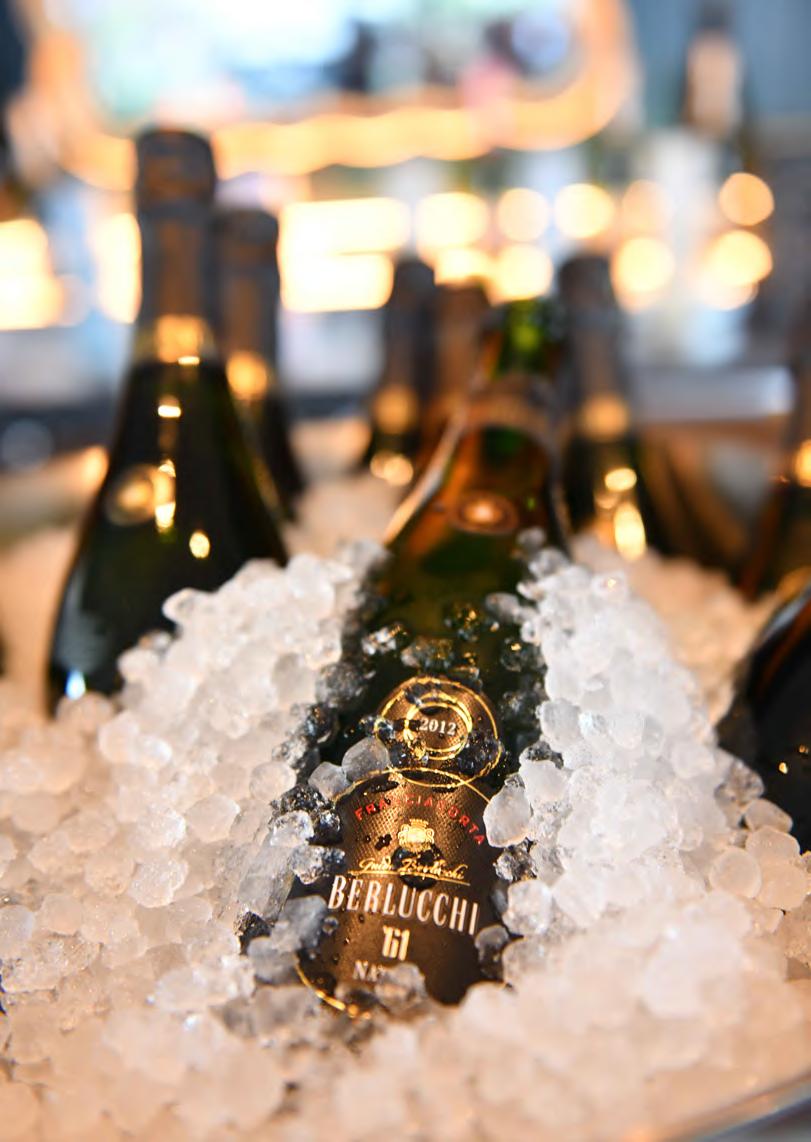
JULY-AUGUST 2022 43 GAMBERO ROSSO GUIDO BERLUCCHI & C.
to celebrate the event, and Gambero Rosso with the Ziliani family organ ised it in New York.
The event took place at the Ci Sia mo restaurant, located in the new futuristic Manhattan West complex on 9th Avenue. The morning was dedicated to a select audience of journalists and operators, received by Cristina Ziliani, who were intro duced to the history of the maison and Franciacorta. Arturo Ziliani, in streaming, and Marco Sabellico con ducted an exciting tasting that in volved the Franciacortas of linea 61 and Palazzo Lana.



From the afternoon until the eve ning, there was a party on the ter race for the Winery of the Year 2022 award in the Gambero Rosso Vini d'Italia guide with the company's New York friends: music, excellent Italian-inspired finger food created by chef Hillary Sterling and a lot of Franciacorta Berlucchi… a celebra tion that culminated with the un corking of a Balthazar of Cuvée 61 Brut to the tune of "Georgia on my mind," the favourite song of Franco Ziliani and Guido Berlucchi. A magi cal New York night...
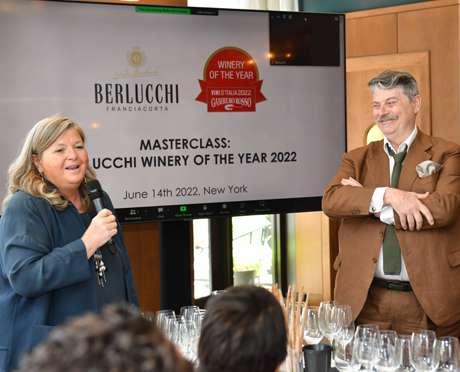
— Guido Berlucchi & C. Borgonato di Cortefranca (BS) via Duranti, 4 030984381 - berlucchi.it
REG. UE. N. 1308/2013
JULY-AUGUST 2022 44 GAMBERO ROSSO STORIES
CAMPAIGN
ACCORDING
CAMPAGNA FINANZIATA AI SENSI DEL
FINANCED
TO EU REG. N. 1308/2013
nose to elegant and clear notes of white fruit, with floral and aromatic herbs to close on fresh citrus notes. On the palate it is assertive and caressing, fresh and endowed with a nice savoury and mineral vein. It goes well with any meal with Mediterranean cuisine, from fish to vegetables to white meats and medium-aged cheeses.
Franciacorta 61 Rosé
Born from a rich percentage of pinot noir (60%) with a balance of chardon nay. It has a beautiful pale and bright pink colour from a quick maceration of red grapes, and to the nose it offers deli cate hints of small fruits, wild strawberry, raspberry and currant above all, to turn to spicy tones, yeast and bread crust. On the palate it has fullness, fruit and a solid, full structure, great freshness that make it the ideal companion of savoury meats, pasta dishes with tasty and rich sauces, white and poultry meats, me dium and long-aged cheeses. It closes long and soft on suggestions of fruit.
Franciacorta 61 Nature ’15
Made from chardonnay (70%) and pinot noir, it is the result of a vintage that yields

wines with structure and fullness. Obtained from the best vine yards of the compa ny, it has not been dosed. Bright straw yellow with golden reflections, it has an intense and fine nose of ripe white fruit and spices, such as anise and a hint of saffron. On the palate it has structure, fullness, a caressing bubble and a persistent and fresh finish on citrus notes with an elegant re turn of anise. To be combined with rich and tasty first cours es, roast meat and fish preparations and also with mature cheeses.
Franciacorta 61 Nature ’12
Born from a qualitatively very significant vintage, it is a Franciacorta that begins to show signs of an elegant maturity, which can be traced right from the deli cately coppery reflections of the colour. The nose is assertive, rich and complex, with notes of ripe fruit, peach and ap ple in particular, elegant citrus and can died citrus notes, which leave room for memories of aromatic herbs. On the palate it is savoury, rich, vertical and nervous, and closes long and pulpy on delicately smoky and mineral notes. To be paired with elaborate dishes of cre ative cuisine.
Franciacorta 61 Nature ’10
Made from 80% chardonnay with a bal ance of pinot noir, this wine comes from a vintage that has given it an elegant freshness that not even 10 years on the lees have attenuated. With an elegant golden straw colour, it has fine bubbles and a complex and articulated bouquet of ripe fruit, with tones of honey, spiced
bread and biscuits, which then turn to still fresh and vital citrus notes. The taste is broad, creamy, savoury, mineral, en livened by a fresh acidic vein that leads it to a satisfying and long finish.
Franciacorta Palazzo Lana Extrême Ris. ’10
Here we enter the "extreme" style of Blanc de Noir from only pinot noir grapes selected in two company vine yards, Brolo and Quindicipiò. The ex cellent vintage '10 rested on the lees for a decade, acquiring an extraordinary finesse and complexity, which reverber ate in a deep straw colour with elegant coppery reflections. The nose is intense and particularly fine with vivid notes of red berries, but also peach and apri cot, which turn to more complex notes of candied citrus, oriental spices and yeast. On the palate it is extraordinari ly creamy in the expression of the per lage, and shows a perfect combination of evolved and smoky aromas with still fresh and vital notes of fruit and citrus. The fine mouth is long, assertive, en gaging and harmonious. The Dosage is from Extra Brut.
Franciacorta Palazzo Lana Extrême Ris. ’07
Another great Riserva from an excellent vintage. It has a bright, intense straw yel low colour with marked coppery reflec tions. The nose opens vividly, with clear dominant notes of citrus peel and red berries, but also yeast, bread crust and a colouring of officinal herbs. The taste is vertical, savoury, mineral and complex, rich in structure and pulp, very elegant in the effervescence that the long years on the lees have given it. It closes long and persuasive on autumnal memories of wood, anise, white truffle and spic es. It still has a future ahead. Extra Brut dosage.
JULY-AUGUST 2022 45 GAMBERO ROSSO GUIDO BERLUCCHI & C.
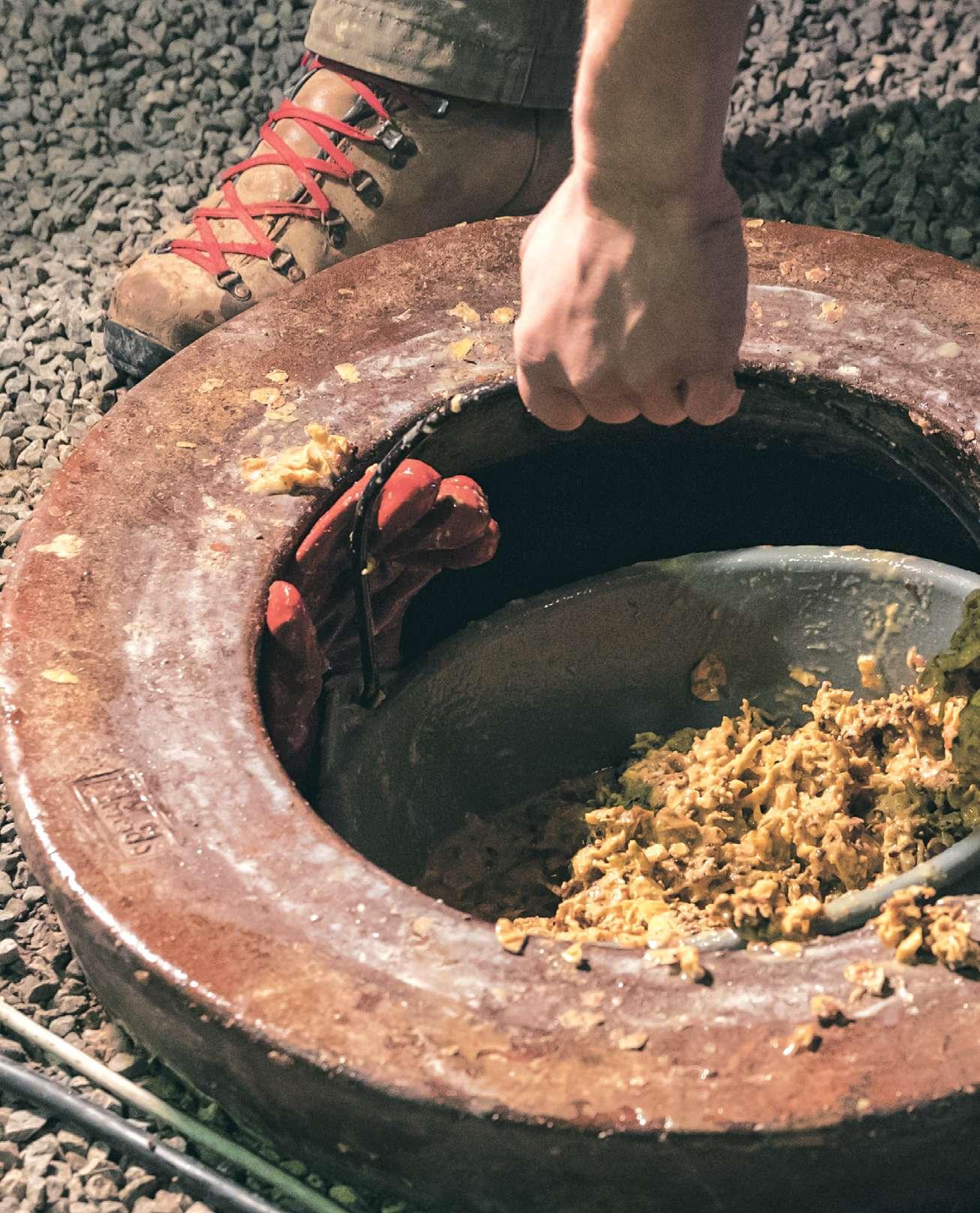
RIBOLLA DI OSLAVIA IN THE ORANGE WINE REALM
Houses scattered along the road from Gorizia to San Floriano. A village with a handful of inhabitants, known worldwide for its wines, actually, its one wine: Ribolla. Although part of the Collio, Oslavia is a story of its own. It's a sort of island floating in a border land marked by a tragic fate. In this alienating and disoriented horizon, so as not to slip into oblivion, the only certainties to cling to are the roots. Those of the family and of the vine
 words by Alessio Turazza - infographics by Alessandro Naldi
words by Alessio Turazza - infographics by Alessandro Naldi
Opposite the peaks of Pod gora and Sabotino and a stone’s throw from the Soča River, Oslavia was on the front line during WWI. Between June 1915 and November 1917 an endless series of bloody battles were fought in these parts, which ended with the defeat in Caporetto. Hills turned into creeping trenches of terror and death. A false movement of endless fron tal attacks, shattered by the futurist roar of machine guns, which broke lives be tween the barbed wire of a ghostly, sense less scenario. The devastating bombings completely destroyed the town and the vineyards. Oslavia came out of the war razed to the ground: a dead hill, even in its soul. Evidence of that period has re mained the toponym "white sheet" that still today indicates a locality of Oslavia. The only white wall left standing after the
bombings, which from afar looked like a bed sheet in the rubble. Oslavia is reborn from nothing, from the emptiness of destruction, from the existential dis orientation of a non-place, which often accompanies unstable border areas, des tined to pass from one State to another always feeling foreign and out of place. Lonely, isolated and distant houses, of a country that is no longer there, that has lost in the horror of war its Church, main square, the centre and the sense of existence. In this alienating and disori enting horizon, the only certainties to cling to in order not to slip into oblivion are the roots. Those of the family and the vine. Roots deep in this land, to resist the turmoil of history and the violence of the bora winds. Oslavia preserves in its reserved and austere essence the characteristics of an unresolved and restless land. Its identity is based on the
hard life of past generations, on ancient local traditions, on a viticulture made of tenacious work, of poor and stony soils. Oslavia is a solitary enclave, which has given meaning and value to this pain ful condition, through the affirmation of its uniqueness. If today in the world of wine we talk about macerated wines, orange wines, it is mainly due to a few obstinate and visionary producers, who have gotten back in the game and creat ed "their" wine, which represented this land in an authentic way, its history and its symbolic grape: ribolla gialla.
OSLAVIA AND THE COLLIO

Oslavia is located in the heart of a beau tiful hilly area divided between Goriška Brda and Goriška Goriška. A territorial unit crossed by a border now faded by the European Union, but that for de cades marked the point of political-eco
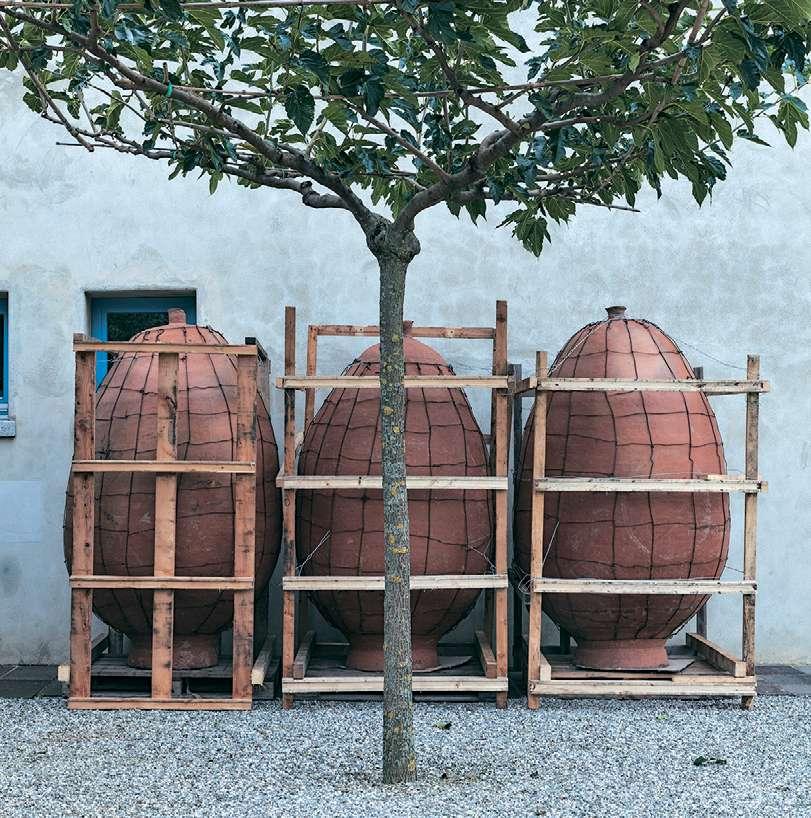
1 MAY-JUNE 2022 48 GAMBERO ROSSO STORIES
THE 7 STANDARD BEARERS OF RIBOLLA FROM OSLAVIA
To symbolise in a concrete way the spirit that unites the seven producers of Oslavia, each win ery placed near its vineyards an orange bench. Thus was born "The path of the orange bench es," which allows you to follow a scenic route to discover the ter ritory and wines of Oslavia.
1 Dario Princic
Gorizia - via ossario 14 0481 532730 - dario princic@Gmail com
2 Fiegl
Gorizia - loc lenzuolo Bianco, 1 0481 547103 - fieGlvini com
3 gravner
Gorizia - loc lenzuolo Bianco, 9 048130882 - Gravner it
4 il carPino
san floriano del collio (Go) loc sovenza 14/a 0481884097 - ilcarpino com
5 la castellaDa
Gorizia - loc oslavia, 1 0481 33670 - lacastellada it
6 Primosic
Gorizia - loc madonnina di oslavia 0481535153 - primosic com
7 raDikon
Gorizia - loc tre Buchi, 4 0481 32804 - radikon it
nomic friction between East and West. In this land the grapevine has found for millennia an ideal habitat. The climate is temperate, with hot summers and cold winters. The chain of the Julian Pre-Alps is a barrier that keeps the area sheltered from the disturbances of the north, while the opening towards the Adriatic allows mild sea breezes to rise inland. The area of Oslavia has a very particu lar microclimatic connotation. The hills are constantly beaten by the bora wind, which often blows violently from the northeast, and is subject to consider able temperature variations between sunny days and cold nights. Thanks to the wind, the bunches of yellow ribolla grapes always remain dry and healthy,
RIBOLLA DI OSLAVIA PRODUCERS’ ASSOCIATION
Each producer follows the discipline regulations according to his own vision of wine. So we have labels of Ribolla di Oslavia with shorter and delicate macera tions, such as Fiegl's; versions of medium intensity proposed by La Castellada, The Hornbeam, Primosic; Gravener's vinification in qvevri and the most extreme interpretations of Radikon and Princic.
FounDing: 2010
FounDing members: 7 wineries (Gravner, Radikon, Princic, Il Carpino, La Castellada, Fiegl, Primosic) objective: valorizzare il vitigno storico del territorio, attraverso un processo di vinificazione con macerazione sulle bucce regulations: 2018 awaiting Doc or Docg comPosition: 100% ribolla gialla ProDuction area: Oslavia, abour 300 hectares, all hilly Plant Density: minimum of 4,000 plants per hectare (except for previous planting) max yielD: 9 tonnes/hectare Farming: chemical weeding is prohibited cellar: selected yeasts are prohibited sulPhur DioxiDe: 90 mg/l, maximum total upon bottling alcohol: 11,5 % vol. minimum maceration: 2 weeks minimum skin contact ageing: 12 months minimum in wooden containers over 5 aFFinage: 6 mesi minimo in bottiglia market: at least 24 months from harvest
without developing rot. The tempera ture changes favour the development of intense aromatic baggage and the pres ervation of high levels of acidity even when fully ripe. From the point of view of the composition of the soils, the area of Oslavia is crossed by a deep vein of Ponca or flysch, a stratification of sed imentary rocks of sandstone and marl of Eocene origin, very rich in mineral substances. The vineyards of ribolla gial la are located on top of the hills, at an altitude between 150 and 200 metres, where the soils are more stony. The less fertile soils naturally contain the yields of the ribolla gialla, which produces smaller and more sparse clusters, with a greater aromatic concentration. Precise ly because of its natural pedoclimatic vocation, Oslavia has always been one of the most valuable areas of the Collio and the historic cradle of ribolla gialla.
NOT A SIMPLE ORANGE WINE
For about twenty years macerated wines, or Orange Wines, have become fashion able and their presence has spread wide ly. Now they are produced in almost all territories and with all grape varieties, with the risk of a certain standardisation. Simply applying a technique, as a matter of fact, can lead to a dangerous homolo gation of the wines. The long maceration on the skins tends to dilute the varietal characteristics of the grapes, making them lose their identity. The same thing happens with regard to the peculiarities of the territory, overshadowed by the ar rogance of the typical maceration notes. Often cloaked by an allure of being pure and authentic wines, macerated wines, actually, are wines that are very similar to each other, even if they come from distant regions and from different vari eties. It is the same phenomenon that

2 MAY-JUNE 2022 49 GAMBERO ROSSO RIBOLLA DI OSLAVIA
THE GRAPE VARIETY
Ribolla gialla is a white grape vari ety historically present in the Collio Goriziano and Goriška Brda areas. Most probably its origins are to be found in the central European area, given its genetic affinity with the ancient gouais blanc and savagnin vines. From an ampelographic point of view, ribolla gialla is a plant of good vigour and very produc tive, especially in the juvenile phase. Precisely for this characteris tic it is necessary to grow it with a few buds and on poor and stony soils, which naturally limit its yields. The bunches are medium in size, with rather large and spherical ber ries and with golden yellow skin, rather thick and very rich in poly phenols. Ribolla gialla is a late vari ety, it ripens between the end of September and the beginning of October. Its wines are characterised by scents of wild flowers, citrus fra grances, aromas of Golden variety apples and white fruit pulp, accom panied by vibrant acidity and savoury sensations.
accompanies many wines produced with overripe grapes or dried grapes. The tech nique tends to prevail over variety and terroir, shifting the aromatic profile to wards a homologous expressive universe. The Ribolla from Oslavia, however, was not born from a fashion, but from a path of research and experimentation, which led to a better knowledge of the charac teristics of the grape and to recover an authentic relationship with its territory and its history. It is the result of the for tunate encounter of a series of elements: the characteristics of the grape, the local traditions and a generation of visionary and talented winemakers.
POST-WAR AND “MODERNITY”

Everything was born from the dissatis faction of the producers of Oslavia for the vinification and aging of ribolla gialla of the 70s and 80s. With Marko Pri
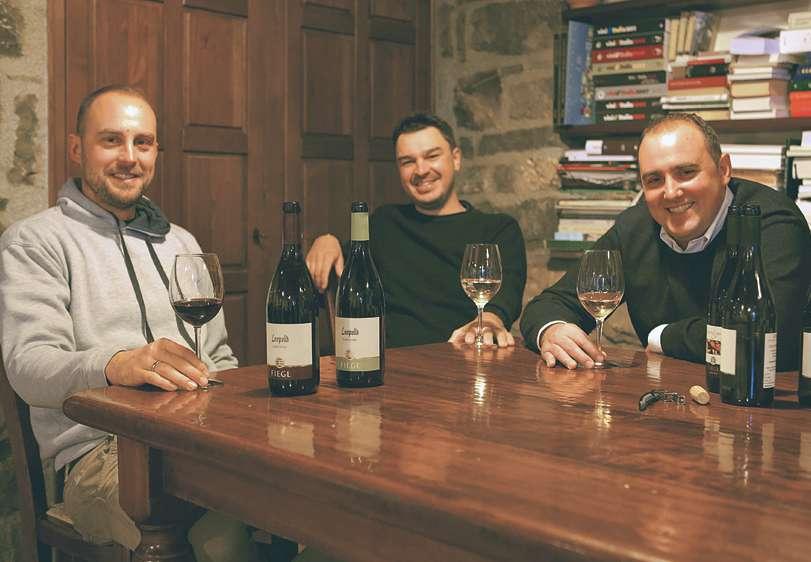

MAY-JUNE 2022 50 GAMBERO ROSSO STORIES
3 4
winegrovers in Friuli since 1963 www.pighin.com
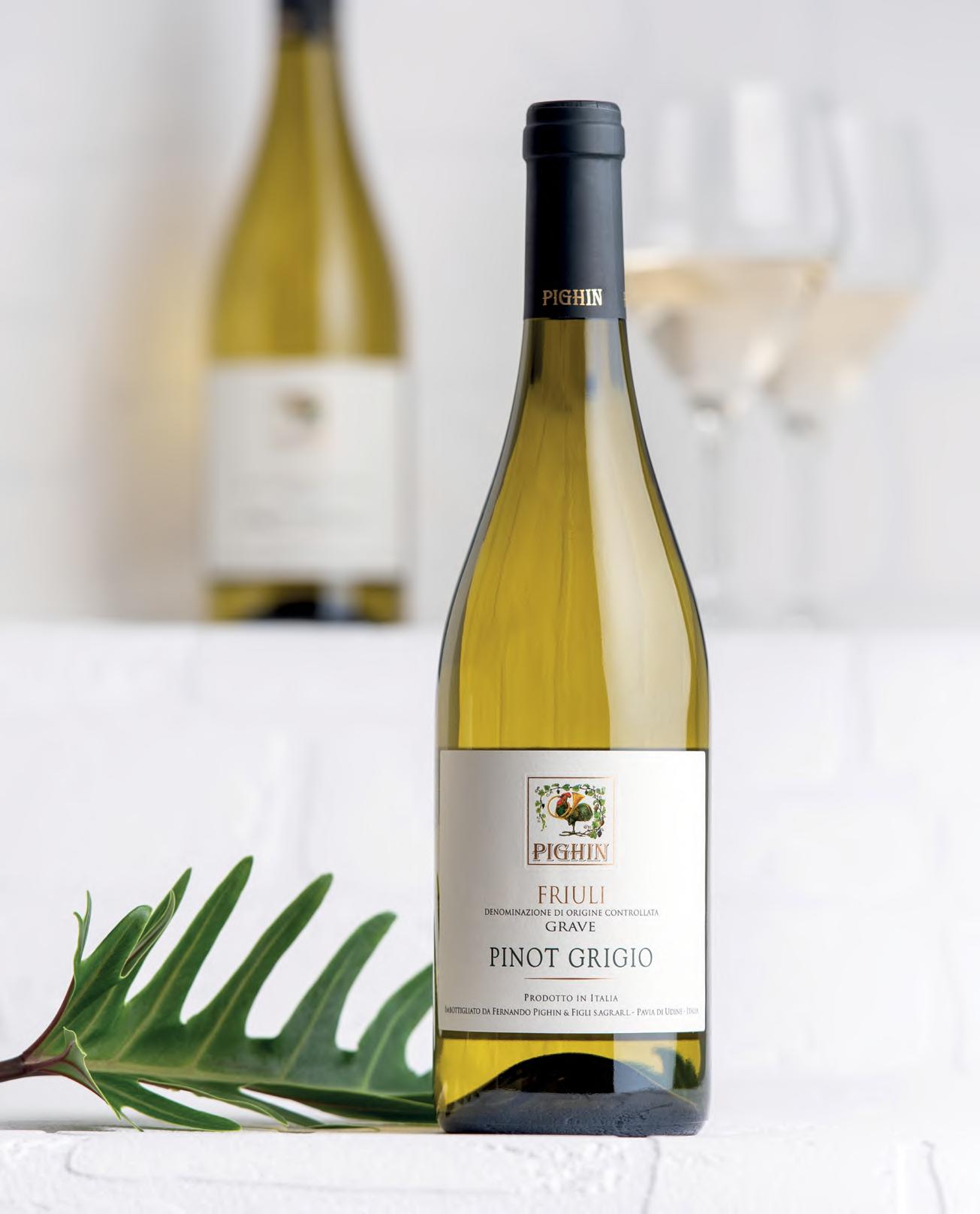
“A long story to discover sip by sip.”
mosic we retraced the history of Ribolla Gialla through the experience of his fam ily, who for several generations has been growing vineyards in Oslavia. «We can start our story with the wine of the farmer, understood as veritable nourishment, which dominated the wine scene until the 50s-60s - Marko said, starting from the wine of his grandparents - At that time the wines were macerated for necessity, not by a conscious choice. During the harvest the grapes were loaded on a large cart and in the evening they were taken to the cellar. He would press the grapes in the vats, then he would wait for the hat-lift to pass out. Two or three days passed before the wine went into the hand presses and then into the fermenting bar rels. At the time, only local vines were cul tivated: ribolla gialla, tocai and malvasia, as well as a bit of pinot bianco. There were also glera and pagadebit, with which was made a 7-8 vol. % wine that was brought to the
5
countryside by the farmers in bottles of two litres to drink during the working day.» This is where the first bottling for the market began, with a label. Yes, it was around the 1960s. The Ribolla was still made with the ancient process of traditional maceration and aging in large oak and chestnut barrels of 20-30 hectoliters or in "caratelli" contain ers. The big change, however, took place in the 1970s. There were two fundamental innovations introduced in this era: the tran sition from manual press to mechanical press, and the arrival of vitrified concrete tanks. This is complemented by the spread of modern oenological knowledge. Thanks to these innovations we have left behind the bad oxidations and faults of wine due to rough processing, non sanitised oak barrels and environments with precarious hygienic conditions. But in this period the skin was also abandoned. The 70s were marked by an exasperated mechanisation of the work
DOLIUM OR QVEVRI?

CHOOSING AMPHORAE
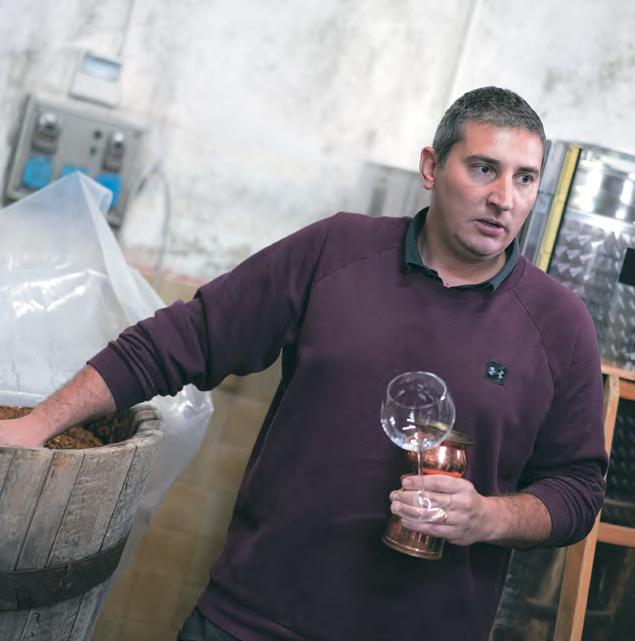
Qvevri in Georgian, or dolium in an cient Roman times, but one thing is certain, the terracotta containers used for maceration are not called ampho rae. The amphora is a medium-sized terracotta artefact with two large handles, which in ancient times was used to transport or store food. The underground dolia can be seen in the archaeological excavations of some ancient Roman villas, for example in the Vesuvius area, while the qvevri are still used by some Georgian produc ers, faithful to a tradition boasting ap proximately 6,000 years of history. The great qvevri were buried, both for their fragility, and because in this way the wine kept a constant tempera ture, without sudden changes that could adversely affect fermentation. Terracotta is a natural and inert mate rial, which does not affect the aro matic profile of wines. An ancient material, which is being rediscovered and which today represents a precise choice to obtain wines that respect the varietal character of the grapes in an authentic way.

MAY-JUNE 2022 52 GAMBERO ROSSO STORIES
9 TABLES ALONG
1 l’argine a vencò doleGna del collio (Go) - loc vencò, 15 350 5212804 - larGineavenco it
2 lokanDa Devetak savoGna d'isonzo (Go) fraz san michele del carso 0481 882488 - devetak com

3 al cacciatore De la subiDa cormòns (Go) - fraz suBida via suBida, 52 - 048160531 - lasuBida it
4 trattoria al giarDinetto cormòns (Go) - via G. matteotti, 54 048160257
5 rosenbar Gorizia - via duca d'aosta, 96 0481522700 - rosenBar it
6 harry’s Piccolo trieste - p zza unità d’italia 040660606 - harrystrieste it
7 gostilna Pri lojzetu vipava (slovenia) - zemono, 7 +386(0)53687007 - prilojzetu com
8 hisa Franko koBarid (slovenia) - staro selo, 1 +386(0)53894120 - hisafranko com
9 kruh in vino doBrovo v Brdih (slovenia) - vipolže 29, 5212 +386(0)56201289 - kruhinvino si
1. Dolium (or qvevri): containers for the maceration of grapes at the Joško Gravner winery (photo by Alvise Barsanti) 2. Ripe bunches of ribolla gialla in the rows of Radikon (photo by Massimo Crivellari) 3. Marko and Boris Primosic (photo by Roberto Pastrovicchio) 4. Matej, Martin and Robert Fiegl (photo by Umberto Pellizon)
Stefano Bensa of La Castellada winery (photo by Fabrice Gallina) 6. In the Gravner cellar: discharge in amphora (photo by Alvise Barsanti) 7. Dario Princic (photo by Piqant Photography) 8. The Radikon family: in the centre Saša with his wife Luisa, on the staircase his mother Suzana, on the left his older sister Savina and on the barrel his younger sister Ivana. On the wall is a portrait of Father Stanko (photo by Fabio Rinaldi)
9. Franco Cogoli owner of Il Carpino winery In the opening, the operation of racking from dolium in the Gravner cellar (photo by Alvise Barsanti)
Dario
Il
SP17 Fiume
SLOVENIA
ITALIASLOVENIA SLOVENIA ITALIA 5 km 250m Mangiare
L’Argine a Vencò Hisa Franko Kruh in Vino Al Cacciatore de la Subida Trattoria Al Giardinetto Lokanda Devetak Harry’s Piccolo Gostilna pri Lojzetu Rosenbar
Princic Cantine La Castellada Primosic Fiegl Gravner Radikon
Carpino Cormons Gorizia Gradisca d’Isonzo Ronchi dei Legionari Marina Julia Golfo di Trieste Trieste Basovizza Lipizza Sesana Comeno Nova Gorica Quisca Cividale del Friuli Pulfero Caporetto Tolmino
Isonzo
ITALIA ITALIASLOVENIA
ORANGE WINE AT THE TABLE AND IN THE CELLAR
5.
MAY-JUNE 2022 53 GAMBERO ROSSO RIBOLLA DI OSLAVIA 6
THE BORDER
in the vineyard and an excess of technology and chemistry in the cellar. A process that has impoverished the quality of the product, with industrial wines, even if commercially successful.».
THE BARRIQUE TREND
We will have to wait for the new decade to start to better consider the sense of ter roir. «It is at the beginning of the 80s that an awareness of the value of the territory began to develop - explained Primosic - In 1982 we produced a Ribolla Gialla Riserva, just to enhance the grapes of the best plots of the estate, in the wake of the work by Ma rio Schiopetto. In the '80s, there was also a shift from pneumatic presses to the more delicate lung presses. For the refinement there was a short phase using fibreglass, then switched to steel and the use of cold temperatures. An evolution that allowed us to make whites that were cleaner and that better preserved varietal aromas.» In these years, however, the use of small barrels, barrique... «Burgundy became the model to follow also for ribolla gialla. However, ribol la can hardly stand the new oak - explained Marko Primosic - After a few harvests we realised that ribolla gialla and barrique didn’t get along so well. The first reaction was lowering yields in order to look for greater concentration, even with harvests that were increasingly late. But despite the efforts, the marriage between ribolla gialla and barrique was never satisfactory. It is in this period that the first reflections began and we started to think of another way to enhance the ribolla gialla. After exasper ating the work in the vineyard looking for maximum concentration, and after making extreme use of oak with the barrique and even the 132-litre feuillette, we looked for a new way. A suggestion came in those years from distillers. Nonino asked for ribolla gialla pomace because they believed that the skin was particularly valuable and rich. From all these reflections the desire to find a new way to bring value the ribolla gialla
INTERVIEW WITH JOŠKO GRAVNER, BACK TO THE ORIGINS OF WINE

The Ribolla of Oslavia that we know today is the result of a collective work, but there have been characters who have marked its destiny in a decisive way. Joško Gravner is one of the most famous Italian producers and his fame goes far beyond the borders of Oslavia. His life has been a continu ous research, which has contributed to give a new face to ri bolla gialla through a return to the origins of winemaking techniques. We talked about the history of the winery and the path taken by Joško with his daughter Mateja.
What does ribolla gialla represent for your cellar?

«The ribolla is the real leitmotif of Joško’s company and his work. It was the most loved grape by his father. To meet the needs of the market, in the 1970s international varieties were introduced, but ribolla has always re mained the most important grape, since the first labels of the 80s, when it was still considered table wine. The Collio DOC, in fact, did not include ribolla gialla among the authorised grapes. Even during this period of oblivion, Joško always continued to grow it and to believe in its qualities.»
How has the approach to the grape changed over time?
«During the '80s-'90s, the Burgundy model, based on fermentation fol lowed by a long ageing in barrique, was very popular. An ideal vinification for the Chardonnay and in part also for Sauvignon, but not for Ribolla, which was poorly suited to a massive use of oak. The wines sold well, but Joško was not satisfied with the results. Starting from the grape, character ised by a particularly rich skin, Joško began to understand that the ribolla was losing its varietal characteristics, not only with the use of French oak but above all because the grape was removed from its skin. Thus began the first attempts to pass from a classic white vinification to a maceration on the skins. From the early '90s a reflection on the use of the maceration pro cess on all white grapes began. The great hailstorm of '96, which destroyed all the harvest of the year, was a greatly discouraging moment, but also a pause to start again with a new vision.»
What happened after the famous hailstorm of '96?
«Joško’s vision was radically changed by a trip to Napa Valley. In California he realised that by now wine was being made with an increasingly exasper ated industrial process. He came home convinced he had at least figured out what not to do. This led to the need to produce a different wine, far from standardisation. His research has focused on minimising any interven tion in the vineyard and in the cellar. First he decided to restore biodiversity in the vineyard with trees, shrubs and encouraging the presence of birds and local fauna with ponds amid the vineyards. He eliminated all chemical treatments. He then sold most of the winery equipment and started over almost from scratch with the '97 vintage, completely fermented on the skins. The wine proved immediately of being much more faithful to the characteristics of the grape.
MAY-JUNE 2022 54 GAMBERO ROSSO STORIES
back to its origins, wine and winemaking of grandparents and great-grandparents, to try to enhance the skin. A search for the integrity of the berry, to return the pulp of the grape to marry the skin and not the oak.»
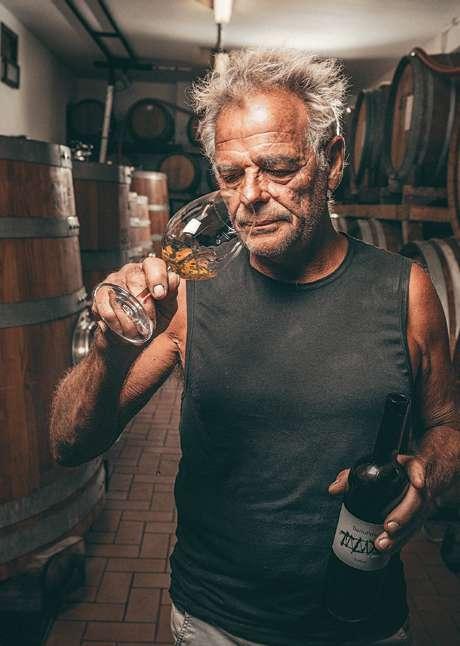
THE HAILSTORM OF '96
«It is precisely after this dramatic event that a new phase began. The loss of a harvest and a year off, opened the field to rethinking on the fundamentals. The '96 hailstorm marked a real breaking point.» There is still a certain bewilderment in Marko’s words when he thinks back to those years. The destruction of the har vest gave time to think about what was being done. For Gravner and Radikon, the first stage was to leave the barrique and the French school, and then to devote themselves to two different thoughts, two different paths. Joško Gravner em
Oak or amphora?
«The first maceration experiments were carried out in large oak Slavonian vats, then in '97 in a small Georgian qvevri arrived thanks to a friend. Joško immedi ately fell in love with this type of very slow, sweet and gradual fermentation, which extracts all the substances from the skin with a process that allows the ribolla to express itself in an authentic way. In 2000 he decided to go to Georgia. In Slovenia he had met some Georgian refugees, who helped him organise a trip in search of ancient traditions. He managed to find some producers of qvevri, to buy them and to organise the first shipment from Georgia. Of eleven qvevri shipped, nine arrived cracked in Oslavia. But by now the new adventure had begun. His wines were not initially understood and they were also or phaned by a name and a classification. Only in 2004 they began to be identified as Orange Wine, a name that Joško doesn't like, but that nevertheless creates a typology and an identity. Ironically, the term Orange Wine was first used by our importer in England. Since 2001 some fermentations (in particular, white grapes) started in qvevri and since 2006 all of them are. Today the cellar houses 47 qvevri underground, it took almost five years to get them all.»
What is the value of time in your work?
«Today we have the luxury of not being conditioned by time. Everything is guided by the rhythms of nature, in the vineyard, in fermentation and in ageing. It is a luxury that we have built and earned in the field. Wine is no longer an indispensable good, it is no longer a food, today it's a pleasure. Precisely be cause it is not necessary, in the choice we must be even more aware, if it is something I can do without, when I indulge it must be good quality. The wine must arrive on the market intact, mature, and is put on sale only when it is ready. We are aware that the price is high, but you have to put yourself in the perspective of drinking little but very well.»
What has changed in the company in recent years?
«There were no fundamental innovations, aside from the decision to dedicate al most exclusively to the cultivation of ribolla gialla and pignolo, even if it remains a small vineyard of the '60s planted in Merlot, with a small percentage of Cabernet Sauvignon, which was also harvested in 2021. Our projects have a time frame of at least ten years. We replanted the old vineyards of Chardonnay and Sauvignon of Bianco Breg with ribolla gialla. Today we have a total of 19 hectares, of which about 15 are productive and 3 that will be planted in the coming years.»

How is Oslavia seen in the world?
«Oslavia is a borderland, people born here have deep roots, but an uncertain identity, which has always oscillated according to historical events and domina tions. Without a solid sense of belonging, without certain references, one is more prepared to seek new paths. The road chosen by Oslavia initially encoun tered market difficulties, but was travelled with great tranquillity by all. Today Oslavia is well known, while once we had to say that it was located east of Venice and on the border with Slovenia. One thing is certain: The Ribolla of Oslavia is a wine that divides, that does not accept compromises. There are those who consider it an absolute reference to define what can really be con sidered wine, in the most authentic and pure sense of the term, and those who do not accept it because it does not fall within the generally shared standard canons.»
MAY-JUNE 2022 55 GAMBERO ROSSO RIBOLLA DI OSLAVIA
7
barked on a journey towards the origins of viticulture and winemaking, turning his gaze to Georgia, with a focus on the process and the container: the terracotta qvevri. Stanko Radikon, however, recov ered the ancient family traditions, the way grandparents did, the slow process ing of grapes. It was the beginning of a process of experimentation with more or less long maceration times. In this new phase, we no longer looked to the current models of success, to Burgun dy, but to the past, to our past.» How did this idea of winemaking and ag riculture spread? What was the path of traditional farmers like Primosic? «In '98 we too began to macerate Pinot Grigio, something we had never done before, and we thought about our way of working - Marko said - We already had a maceration experience linked to the past and from '98 to 2004-2005 we be
gan to work ribolla with week-long mac eration, but continuing to use French oak for ageing. Then we switched to un toasted Slavonia oak.»
COMPARING MACERATIONS

At the base of a new way of thinking wine, however, there can be no oth er way than a close confrontation between those who furrow the earth every day. « Rethinking - Primosic ex plained - led to an exchange of experi ences, to comparing the macerations, above all with Stanko Radikon who in a matter of few harvests understood that the true wealth of ribolla gialla is in the skin. Stanko also took the process to extremes with a return to dealing with and managing the problems of the past: oxidation, volatiles, the degradation of acidity. At that time the world of wine had split between the curious who
THE SUBTLE AND CAPTIVATING CHARM OF MACERATED WINES


As for the dining sector, the fact that Ribolla of Oslavia is identified with some particularly established and wellknown companies helps a lot. Oslavia is, within the Collio Gori ziano, the most suitable land for the cultivation of ribolla gialla, both histo rically and pedoclimatically. In our wine list Ribolla di Oslavia is well re presented and often attracts custo mers who are curious to taste so mething original. Macerated wines have growing space in quality dining, especially to pair special dishes. Ma cerated wines are a sort of passepar tout thanks to the different interpreta tions of the various producers. The versions with more gentle macera tion prefer delicate and balanced di shes, while those with more intense maceration adapt well with dishes of greater character. Tasty cheeses or the dishes in which the cheese is very present are certainly among the most suitable combinations. Other intere sting pairings are with white meat. Macerated wines also go very well with potatoes: the tannins of ribolla can balance and refresh. We can, for example, combine a Ribolla di Oslavia with a delicate maceration with a pla te of Toc in Braide, made with soft polenta and topped by a fondue of Montasio cheese and flakes of fat go ose liver. A dish typical of Zlikrofi, is tortelli from the Slovenian Idrija valley filled with potatoes, pancetta and wild greens, with a roast gravy and flakes of aged Montasio, goes well with a Ribolla di Oslavia with a more robust and rich maceration. .
Mitja Sirk , Restaurant La Subida in Cormons (GO)
8 MAY-JUNE 2022 56 GAMBERO ROSSO STORIES
7 DISHES FOR 7 RIBOLLA FROM THE KITCHEN OF LOKANDA DEVETAK 1870
Avgustin Devetak and his wife Gabriella Cottali carry on the tradition of the fam ily restaurant in Savogna di Isonzo (GO), faithful to their history and to the territo ry of which they are great interpreters and narrators. They give us seven dishes to taste with glasses of Oslavia.
1 Friûl
Ribolla gialla Rebula ’17 - Fiegl
The dish consists of organic polenta of the farm Friûl Bios of Galleriano di Lestizza (UD), with by formadi frant and pitina, both gastronomic sym bols of the territory and Slow Food Presidia. The fatty and ancient taste of this dish goes well with the Rebu la which has a few years on its shoulders, but is not too old.
2
Snidjeno testo Ribolla gialla Rebula ‘15 - La Castellada Gnocchi of leavened dough with rabbit ragout bred by Vecon Conigli onatura in Precenicco (UD), sea soned with fennel and smoked ri cotta. It is a strictly territorial dish that we also present as members of the Premiate trattorie italiane. Smoky notes and aromatic notes go well with this robust and reliable wine..
3
Tagliolini alla farina di vinaccia di Ribolla Gialla di Oslavia e supeta Ribolla gialla Rebula ‘16 - Il Carpino
The pasta produced by the compa ny Macino® di Aquileia (UD) is sea soned with sauce and hen meat (la supeta) made according to an an cient Friulian recipe. The fatty and aromatic character of the dish goes well with the wine with which the pasta dough is also made.
4
Fusi, luganighe and Jamar Ribolla gialla Rebula ‘15 - Princic Traditional Istrian pasta is accompa nied by sausages and cheese aged in the Karst caves produced by Dario
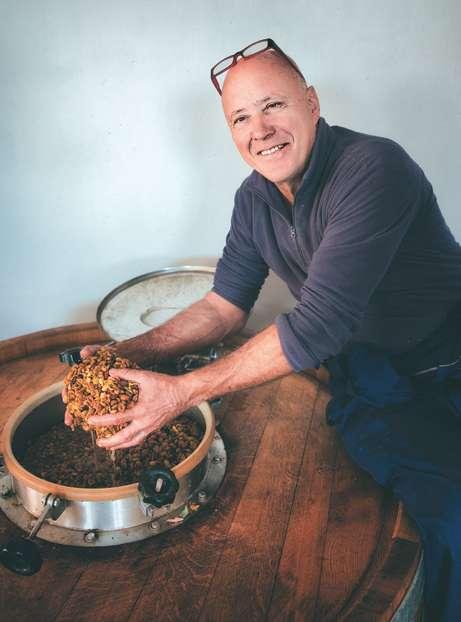
Zidarič in Prepotto (UD). It is the dish of the Buon Ricordo in Devetak, ex cellent together with this Ribolla full of hints and ancient notes.
5
Rabbit leg
Ribolla gialla Rebula riserva ‘16
Primosic
Rabbit meat, always bred by Vecon Coniglionatura di Precenicco (UD), is rolled in a pan and flavoured with rosemary, then accompanied on the plate by fennel au gratin. Again im portant aromas and a non-aggres sive meat, good marriage for this rebula that has rested ageing quite a while.
6
Šelinka by mamma Helka Ribolla Gialla Rebula ris. 3781 ‘07 Radikon
Here is a dish that for us is symbolic, to pair with a great Ribolla. It is a soup made with celery, potatoes, ham bone and beans: in ancient times it was cooked on the "spar gher," the old wood-burning kitchen of the Friulian and Julian tradition, for 6-8 hours. It is a true family dish so needs to be paired to a wine that's just as "real."
7
Sage flavoured quail thigh and breast
Ribolla gialla Rebula ‘10

9
- Gravner
The quail is cooked at low tempera ture and accompanied by chips and pancetta produced by Sara Devetak in San Michele del Carso (GO). The wine pampers the quail, surprises her and reveals her. A surprising and transformative wine.
accepted this new way of interpreting the ribolla and the integralists of classic white wine making. The value of these experiences resulted in a return to re spect for the integrity and richness of the raw material. The gaze returned to the vineyard, to the enhancement of the best plots and grapes. A process that led to the awareness of the quality of the grapes. It was also understood that Oslavia has unique pedoclimatic char acteristics, in particular the bora wind that refreshes the climate and allows you to maintain acidity even in hot sum mers and soils particularly rich in Pon ca. From 2003-2005 a new phase of col laboration with the Oslavia Ribolla Pro ducers' Association began.» A path that has led to the creation of an identity of the territory and its wine.
MAY-JUNE 2022 57 GAMBERO ROSSO RIBOLLA DI OSLAVIA
Cantolio launches three new labels in the name of Primitivo (and of Fiano)



600 hectares of vineyards between the provinces of Taranto and Brindisi (500 of which are cultivated with primitivo), 700 contributing members, about three mil lion bottles produced each year: these are the numbers of Cantolio, a Puglia cooperative founded in the 1960s, a company with solid roots that sink into the past, but with an eye towards the future. «Research and experimenta tion in the vineyard and in the cel lar are the pillars of our company’s production philosophy - explains Francesco Delle Grottaglie, Presi dent of Cantolio - we try to propose a production of the highest quality through rigorous viticulture that re spects the identity of the territory, allowing our grapes to reveal their
great peculiarities and characteristics.» It is for all these reasons that the company launched three new labels this year: Primitivo di Manduria Riserva Manur, Rosato Ra.Ro. and Fiano ‘200. Francesco told us about the gen esis: «As far as Manur is concerned, we wanted a Riserva that could be a synthesis of what Primitivo di Manduria is for us. So we com bined two masses that give life to two different labels in our Classic Line, Mandonion, produced with grapes grown in Manduria, and Urceus, whose grapes come from neighbouring municipalities: we blended them and leave them to refine for 24 months, of which 10 in French oak barriques.» The Ra.Ro. It is an epitome of agricultural tradi

IN FIGURES 1960 year of inception 700 contributing members 600 hectares of vineyards 500 hectares planted in Primitivo 3.000.000 bottles/year 80% export 58 GAMBERO ROSSO GAMBERO ROSSO X CANTOLIO JULY-AUGUST 2O22
tion: «Perhaps few know that with Primitivo it’s possible to make two distinct harvests: one is the regular one, the other is known as being of the “racemi.” These are small clusters that ripen on the secondary shoots (called “fem inelle”) about 20/30 days after the harvest of the main fruit: avoiding hot summer temperatures, both acidity and aromas are kept high: characteristics necessary to make a fine rosé. So we thought of realising the Ra.Ro precisely with the “racemi,” an experiment we are very satisfied with.» CLosing with a white: «We called this new label ‘200 because the presence of Fiano in Puglia dates back to 1200, when Charles II of Anjou had thousands of plants of the grape shipped from the port of Cava de’
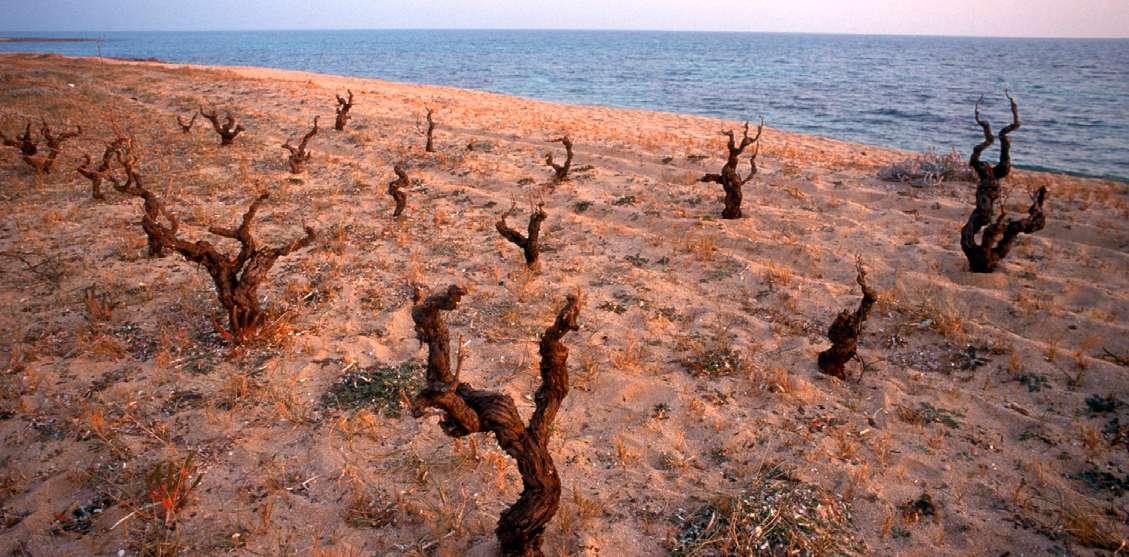
Tirreni to Manfredonia. A grape variety with ancient tradition, therefore, which we make in steel to leave its fragrance and freshness intact. Our ambition - explains Francesco Delle Grottaglie - is to make our wines known on the foreign market and certainly to focus on a new generation of wine-lovers who are very sensitive to our fundamental principles: high quality production and continuous research through sustainable viticulture while being respectful of the identity of the terri tory.» What is the news for the future? «We will shortly present our first Metodo Classico from Fiano grapes, a project that started in 2019 and is finally in the pipeline.».
– 0999796045 – cantolio.it
59 GAMBERO ROSSO GAMBERO ROSSO X CANTOLIO JULY-AUGUST 2O22
Cantolio – Manduria (TA) – s.da per Lecce km 25

MATELICA, THE VERDICCHIO BORN IN THE MOUNTAINS IN A CORNER OF LE MARCHE RICH WITH BIODIVERSITY
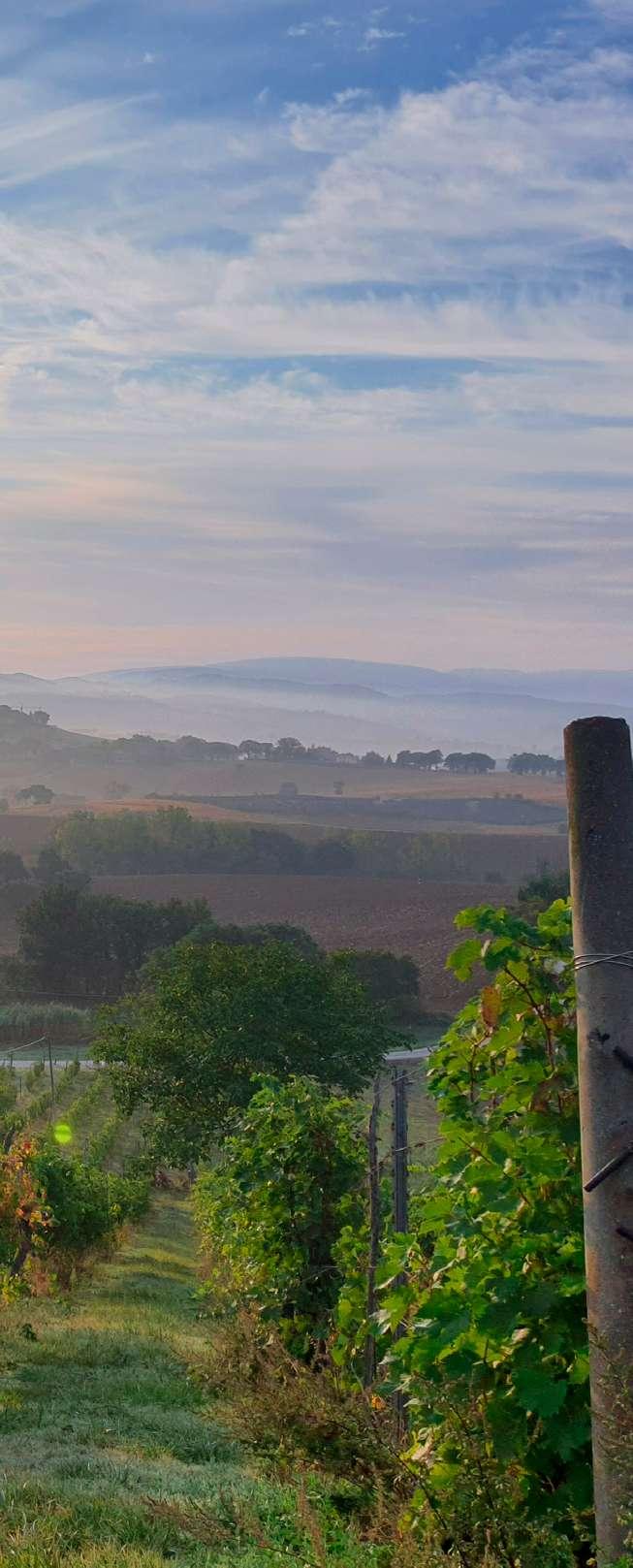
Leaving behind the blue of the sea, the sunny climate and the breath of the salty iodized breezes, we delve into the deep hinterland of Le Marche region. Between rocks and oaks, the memory of the sea fades quickly in the presence of the mountains, in the darkness of the tunnels, which mark the shadow line towards a new land. The valley of Matelica extends wide as far as the eye can see, bright and welcoming, the cradle of Verdicchio born in the mountains, without ever seeing the sea
words by Alessio Turazza - infographics by Alessandro Naldi
The Matelica area boasts very ancient history, dat ing back to the Palaeolithic era and to the subsequent settlement in these lands by the Piceni and Umbrian popula tions. The valley was colonised by the Romans during the 3rd century BC, after the victory in the battle of Sentino against the populations of central Italy. The ancient Roman mu nicipium of Matelica was founded in the 1st century BC and in the historic centre of the village it is still possible to find the vestiges of ancient Rome. In addition to the traces of the cardo and the decumanus roads, you can admire a splendid polychrome mosaic floor, with geometric motifs and an imal figures belonging to a domus of the I-II century AD and the remains of the ancient baths, found under the
Teatro Comunale theatre. If the cul tivation of the grape vine in Matelica has a millennia vocation, we do not have, however, certain information on the origins of the main grape of the territory. On the other hand, the very close genetic relationship be tween Verdicchio and Trebbiano di Soave and Trebbiano di Lugana puts it in close relationship with the Vene to area.
THE MATELICA VALLEY
The Matelica valley is unique in the Le Marche region. It is a deep and wide furrow between the mountain ranges of the Apennines, on the north-south axis. Its conformation is absolutely unusual. The regional orography is designed by valleys that descend from the mountains towards the sea, from west to east. The Matelica valley ex
tends for about fifteen kilometres, from Cerreto d'Esi to Castelraimon do, at an altitude of about 350 metres above sea level. Its profile is bordered by two parallel mountain ranges, which converge to the south towards the peaks of the Sibillini Mountains. The presence of the Monte San Vicino massif, with its 1,480 metres, prevents the sea breezes from reaching the val ley, which enjoys a typically continen tal climate, characterised by very hot summers, cold winters and often with snow. The vineyards are planted be tween 400 and 700 metres, in a high hilly area, with splendid exposures from the north-east and south-west. The vineyards are located in a natu ral environment characterised by rich biodiversity. Far from other regions completely distorted by the monocul ture of the grapevine. The rows occupy
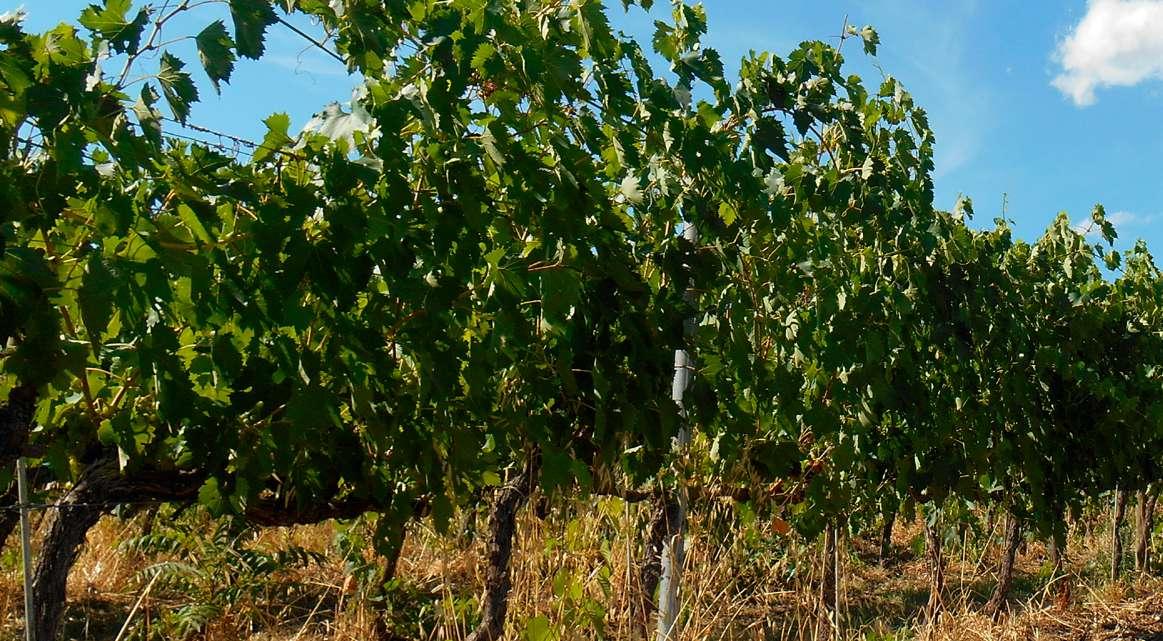
1 JULY-AUGUST 2022 62 GAMBERO ROSSO STORIES
only the most suitable parcels, leaving the valley floor for the cultivation of wheat, sunflower, wheat, legumes and the highest and most inaccessible ar eas with dense forests, which rise up to the top of the mountains. During the summer months, the temperature changes are considerable, with differ ences of over 20°C between day and night temperatures. The particular microclimate favours a very slow rip ening of Verdicchio, which is harvest ed in late October. The bunches have time to develop and set intense aro mas and reach full ripeness, retaining lots of freshness and a high percentage of malic acid. From a geological point of view, the Matelica valley is part of a large area in the Apennine moun tains, once occupied by the sea and later by a salt lake. The marine origins have bequeathed soils of fine texture,
composed of silt sediments, sand, clay and limestone, very rich in minerals, which insist on a mother rock of sand stone and clayey schist. In the higher areas, washed away by atmospheric agents, emerge white soils composed of sand and limestone. Thanks to the presence of deep clay, soils guarantee excellent water reserves, which help the grape vine to cope with periods of drought without too many problems. The pedo-climactic characteristics of the Matelica area allow Verdicchio to express whites with great personali ty, characterised by freshness, flavour and remarkable longevity.
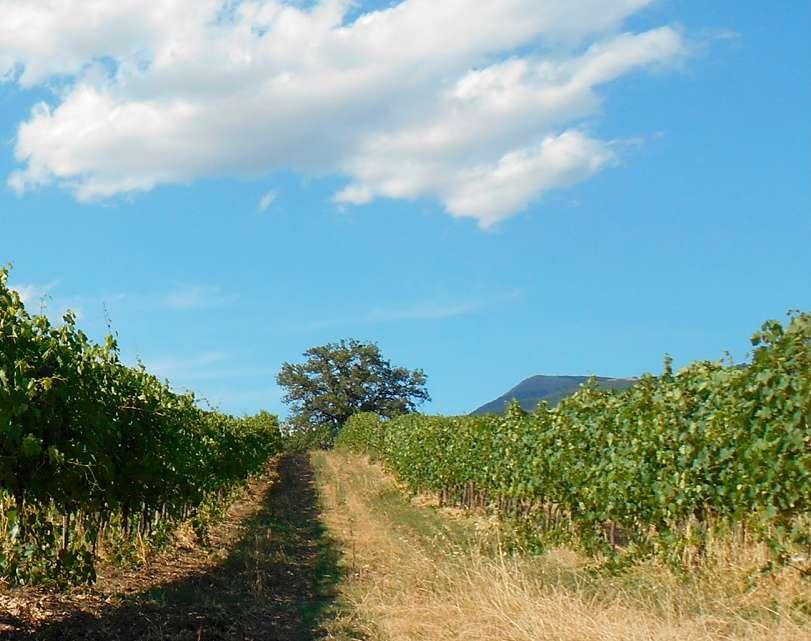
THE NORTHERN AREA, FROM CERRETO D'ESI TO MATELICA
AAfter crossing the narrow gorge in the mountains, the northern part of the Alta Vallesina is home to some of

MATELICA IN NUMBERS
Verdicchio di Matelica obtained the recognition of the Controlled Designation of Origin in 1967 and since 2010 the Riserva version is part of the prestigious DOCG cat egory. The recent revision of the specification changed the word ing to Matelica, with the optional mention of the Verdicchio grape. The territory covers about 286 hectares, located in eight munic ipalities in the Upper Vallesina: Matelica, Esanatoglia, Gagliole, Castelraimondo, Camerino and Pioraco in the province of Macer ata; Cerreto d'Esi and Fabriano in the Province of Ancona. In the '19 vintage, 2,062,933 bottles of Ver dicchio di Matelica and 140,133 of the Riserva Docg version were produced. As far as marketing is concerned, the internal market accounts for 70%, the European market for 20% and the rest of the world for 10%. Distribution takes place mainly in the HoReCa channel, only a small percentage of Verdicchio Doc is sold in largescale distribution.
the most important wineries in the area. The vineyards are located on the eastern side of the valley, with a prev alent south, south-west exposure. Here the Verdicchio has found its ide al habitat in the hilly area between 350 and 450 metres above sea level, on the slopes of Monte San Vicino. The Marco Gatti winery is located near Cerreto d'Esi and cultivates sev en hectares of vineyards divided into many plots. The soils are of medium texture, composed of clay, silt and sand, with the presence of limestone in the higher areas. In addition to the cultivation of Verdicchio, Marco Gat ti is engaged in the recovery of old Vernaccia Cerretana, an ancient na tive red grape variety, often present among the rows of older vineyards in the area. The style of his wines is clas sic, fresh and simple, with vinifica
JULY-AUGUST 2022 63 GAMBERO ROSSO VERDICCHIO DI MATELICA
THE CANTINE SOCIALI SOCIAL CELLARS, AN IMPORTANT FLYWHEEL FOR THE TERRITORY
Among the productive realities of the Matelica area, the social cellars still play a role of primary importance today. Pro.Vi.Ma (Wine Producers of Matelica) was founded in 1932: a state-owned company for the storage of grapes. A veritable wine hub in Matelica, until the early 1960s it produced 40,000 hectoliters. After a period under the management of the Agricultural Consortium, in 1978 it be came what it is today, thanks to the initiative of a group of small local producers. Now it is made up of 140 members and manages about 120 hectares of vine yards, divided into small plots located throughout the valley. The success of the cooperative is due to the phenomenon of the gradual industrialisation after World War II. In the 1960s the figure of the "metalmezzadro" was born: a farmer who abandoned his work in the countryside to go work at the factory, but con tinued to grow a small family vineyard, giving the grapes to the cooperative. Pro. Vi.Ma only sold bulk wine until 2010-2011, when it began to bottle a small part of the production. Today the bulk still represents 65% of the total, but about 150,000 bottles are made from grapes of suppliers who follow the rules of the cooperative's Quality Project. For some years now, the winery has embraced the principles of organic agriculture, with 45 hectares in production and others in conversion: from here comes the Verdicchio di Matelica Bio Egos '20, a simple and direct wine, characterised by citrus notes, aromas of white fruit and sus tained by lively freshness. More complex and persistent the Verdicchio di Matel ica Riserva Matérga '18 which expresses aromas of wild flowers, ripe apple and yellow fruit. The most important producer of Matelica is undoubtedly Belisario. The win ery was founded in 1971 and manages a total of 320 hectares of which 80 di rectly and the rest belonging to 100 members. Each year it produces 1 million and 200,000 bottles, over 60% of the total denomination. Located in the centre of the valley, it collects grapes from all eight municipalities in the area and of fers a range of labels that allow to appreciate the wines of Matelica in various shades. Verdicchio di Matelica Cerro '20 is the young and fragrant version, characterised by the classic citrus and fruity aromas of the grape. Verdicchio di Matelica Vigneti B '19 comes from organically farmed plots, grown between 450 and 600 metres above sea level. Intense and harmonious, the wine ex presses aromas of broom, thyme, rosemary, citrus and yellow fruit. The desire to experiment led to the creation of the Animologico '20 Verdicchio di Mateli ca: an organic wine produced with grapes subjected to washing with ozone, cryo-maceration and slow fermentation with selected yeasts. The whole pro cess takes place without the addition of sulphites, replaced by the tannins of green tea for an antioxidant function. It is a Verdicchio of remarkable expres sive purity, straightforward and fresh, with aromas of grapefruit, lime, green apple, anise and ginger. The Verdicchio di Matelica Meridia 2018 is very inter esting, the result of a slightly early harvest of the Contrada Balzano vines. Ver dicchio di Matelica Riserva Cambrugiano '16 is one of the most famous labels in the area, true excellence, which for years has been part of the elite of the best wines of the appellation and which has reduced its percentage of ageing in barrique to 10%. Among the many, we mention the Verdicchio di Matelica Cuvée Nadir, a fresh and citrusy Charmat sparkling wine, which is perfect as an aperitif. Verdicchio Metodo Classico also soon to be released, is made with an ageing on the lees of over 40 months.
2

1. A glimpse of the Monacesca vineyards
2. A bunch of Verdicchio grapes

3. La Monacesca, winery founded in the 1960s in a monastic village of the year 900
In the opening, the vineyards of Le Stroppigliose
JULY-AUGUST 2022 64 GAMBERO ROSSO STORIES
tion and refinement in steel, without malolactic fermentation. The Verdic chio di Matelica Casale Venza 2019 per fectly interprets this type of white. The Verdicchio di Matelica Villa Marilla 2019 is more harmonious and soft, seductive thanks to the elegant floral and citrus aromas, fragrant notes of Golden apple and white peach. More intense, warm and persistent, the Verdicchio di Matelica Riserva Millo 2018.
The Bisci winery represents one of the best in the area. Founded in 1972, it has been organically farmed since 2016. The wines are characterised by a profile of sharp freshness, taut and vertical, which aims above all to en hance the sharp expressive tension of the grape. Verdicchio di Matelica '20 is citrine and minimal, with aromas of lime zest, grapefruit and Granny

Smith apple. Verdicchio di Matelica Vigneto Fogliano '18 comes from over 40-year-old vines and represents one of the clearest and most elegant ex pressions of the appellation. A citrus note embellished with floral nuances of orange blossom, hawthorn, aromas of green apple, white peach, star anise and ginger, which lead to a finish of vibrant freshness.
On the same side of the valley, only a few kilometres further south, is an other name that has made the history of the great wines of Matelica. Mo nacesca was founded in 1966, but its origins are very ancient. The win ery is located in a small village cre ated by a settlement of Benedictine monks in 900 AD. The vines are plant ed on predominantly clayey soils, with southern exposure. The style is based on the search for complexi
ty and richness. All wines carry out malolactic fermentation, which gives the sip maturity and breadth. Verdic chio di Matelica '19 is the product of a splendid vintage and expresses an extraordinary harmony, with aromas of citron peel, candied citrus, nuances of anise and aromatic herbs, on a ripe background of yellow fruit, well bal anced by freshness and flavour. Ver dicchio di Matelica Riserva Mirum '19 comes from a slightly late harvest and is aged for 18 months in steel on fine lees. Made only in the best vintages, Verdicchio di Matelica Terra di Mezzo '15 is the result of a rigorous selection of the estate's best grapes and long ageing in steel. The result is a full and rich wine, with mellow notes of ripe yellow fruit, pineapple, peach, aca cia honey, nuances of flint, anise and hints of hydrocarbon.
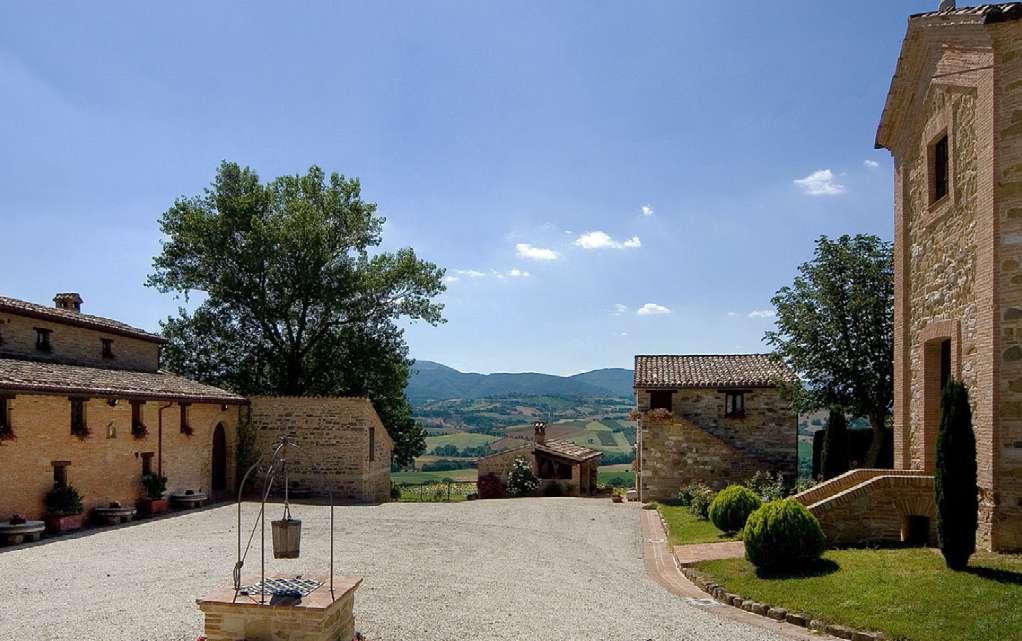
3
JULY-AUGUST 2022 65 GAMBERO ROSSO VERDICCHIO DI MATELICA
ADDRESSES Wineries
La Monacesca
Matelica (Mc) - vocabolo Monacesca 442/446 Monacesca it
Bisci
Matelica (Mc) - via Fogliano, 120 - bisci it BeLisario
Matelica (Mc) - via a. Merloni, 12belisario it cavaLieri
Matelica (Mc) - via raFFaello, 1 cantinacavalieri it
Piano di rustano castelraiMondo (Mc) località Piano di rustano, 5Pianodirustano it coLLestefano castelraiMondo (Mc) - via collesteFano, 3 collesteFano coM coLPaoLa
Matelica (Mc) - località braccano, 95 tenutacolPaola it Borgo PagLianetto
Matelica (Mc) - località Pagliano, 393 borgoPaglianetto coM MaravigLia
Matelica (Mc) - località Piannè, 584 viniMaraviglia coM
Le stroPPigLiose castelraiMondo (Mc) - località stroPPigliosi, 9 lestroPPigliose coM
Marco gatti cerreto d'esi (an) - via lagua s. Martino cantinagattiMarco it
Pro.vi.Ma. Matelica (Mc) - via raFFaello, 1c cantineProviMa it
Where to eat
Camerino (MC)
PaPPafò via Montagnano, 98 0737 630794 - PaPPaFo coM
Fabriano (AN)
deBa sushi via v gioberti, 14 - 388 9359059 @debasushiFabriano
Marchese deL griLLo via rocchetta bassa, 73 0732 625690 - Marchesedelgrillo coM
Matelica (MC)
foyer deL teatro via uMberto i, 22 - 348 8868022 FoyerverdicchiodiMatelica it
secondo teMPo ristorante via beata Mattia, 33 - 0737 787882 secondoteMPoristorante it
San Severino Marche (MC) cavaLLini viale bigioli, 47 - 0733 634608
ADDRESSES
Collemalvano
Deba Sushi
Marchese del Grillo
Fabriano
Dante-campo Dell’olmo Borgo Tufico Cerreto d’Esi
Castiglione
Collamato
Borgo Paglianetto
Palazzo
3 km
San Vittore MATELICA
Marco Gatti
Where to eat Cavallini Signore te ne ringrazi Bisci
Wineries La Monacesca Belisario Maraviglia
Esanatoglia
Foyer del Teatro Secondo Tempo Ristorante
San Michele Braccano Castelraimondo
Fiuminata
Colpaola
Cavalieri Pro.Vi.Ma. Piano di Rustano Collestefano
Le Stroppigliose
Sefro
Torre del Parco Crispiero
Mergnano San Savino
Pappafò
JULY-AUGUST 2022 66 GAMBERO ROSSO STORIES
Ancona Macerata MARCHE
MID-VALLEY
In the heart of the valley, on the road leading to Braccano - a small village famous for its murals created by the students of the Brera, Macerata and Urbino Academy - we find the Mar aviglia farm. The 13 hectares of the estate extend in Pianné, on the gentle sunny slopes that surround the farm house. It is a family business found ed in 2004 by Filippo Maraviglia and now managed by his sons Davide and Ivan. Verdicchio di Matelica Alarico '20 is the label that best represents the company's philosophy. It smells of white flowers, lime, yellow peach and pineapple. The sip is rich and harmo nious, with a ripe fruit and a fresh finish. Verdicchio di Matelica Arché '20 is made with grapes from vines treat ed with resistance inducers, capable of stimulating the vine's natural de
fences. The plant reacts by thickening the skin of the berries and increasing the presence of bloom. The wine has a citrusy profile, with aromas of white peach, melon, hints of ginger and white pepper. Verdicchio di Matelica Grappoli d'Oro Riserva 2017 is vinified with a partial ageing in oak and gives more mature and softer aromas, with notes of broom, pineapple, yellow peach, shades of acacia honey, vanilla and fresh almond. The finish is har monious and with good persistence on the palate.
Climbing on the eastern side of the valley, we arrive at the Colpaola es tate, the highest in Matelica. This winery produced the first vintage in 2013 and immediately established itself in the wines of the valley scene thanks to a strong personality. The vineyards are grown under organic
regimen on the slopes of Monte San Vicino, between 600 and 700 metres above sea level, in an area with a par ticularly cool climate and strong tem perature variations. The particular pedo-climactic conditions give the wine a Nordic, fresh and vertical char acter. Verdicchio di Matelica Colpaola '19 is a white with aromas of aromat ic herbs, grapefruit, green apple and yellow melon, which lead to a savoury and citrusy finish. The Charmat Cavea sparkling wine offers the same style, with delicate bubbles and an immedi ately pleasant sip.
On the opposite side of the valley is Borgo Paglianetto , a winery found ed in 2008 by five partners united by a passion for Matelica and good wine. The 25 hectares of the estate, farmed organically, offer a wide range of labels, which explores all the

4 JULY-AUGUST 2022 67 GAMBERO ROSSO VERDICCHIO DI MATELICA
4. The hilly vineyards of Colpaola
5. A bunch of Verdicchio grapes: among the 5 most important Italian whites, plus has genetic affinities with Trebbiano di Soave and with Trebbiano di Lugana


6. The vineyards of the Piano di Rustano estate

nuances of Verdicchio. With a simple and immediate sip is the quite con vincing Verdicchio di Matelica Ergon '18 . Made with indigenous yeasts, it expresses frank and fragrant aro mas of white fruit and citrus, with a good gustatory persistence. Verdicchio di Matelica Petrara '19 is the classic version of the local wine, with floral nuances, white fruit and almond, ac companied by lively freshness. More intense and complex is the Verdicchio di Matelica Vertis '19 , the result of a selection of vines over twenty years and made with an ageing of at least 8 months in steel. The citrusy notes are enriched by aromas of apple, peach, almond, star anise and savoury gus tatory freshness. The result of a fully ripe harvest and 18 months of age ing in steel is the Verdicchio di Matel ica Riserva Jera 2016 , which presents
PERFECT GLASSES FOR COMPLEX TABLES EVEN
In haute cuisine, at least one Verdicchio di Matelica must not be missing, unique minerality and flavour that cannot be missing. Plus, the history of those places is almost unknown, first in those lands there was the sea, so they are territories that have great personality. In recent years the Verdicchio dei Castelli di Jesi has taken a long time to make itself known and I think that the one from Matelica is less known outside our region even if it has nothing to envy to its cousin from Jesi, also for its longevity. In my restaurants Ver dicchio di Matelica is always present, even in the tastings of the Madonnina and I must say that customers are amazed by the quality of this wine. Verdic chio di Matelica goes very well with appetisers and fish-based pasta courses, among my dishes I would mention: "Between a panzanella and a shellfish Catalana", the orange marinated scampi with au gratin tomato vinaigrette, the Lasagna with pink seafood and coconut parsley and lime sauce. In addi tion, from Clandestino's "Il gioco del tonno e il Pagro" I would pair broken grains and tomato juice. With the Verdicchio di Matelica Riserva we go up to the thickness of the plate to get to fish soups and sea snails in porchetta and white meats typical of the Marche culture such as "pollo in potacchio" chick en. Of the dishes of the Madonnina I would mention the smoked gnocchi with clams, cocochas and Jerusalem artichokes; and the charcoal-grilled grouper with pumpkin, ginger and Kalanchoe sauce. From Clandestino in Portonovo I would pair monkfish with fermented mushroom and aubergine sauce
– Moreno Cedroni , La Madonnina del Pescatore a Senigallia (AN)
the rich and harmonious face of the grape, with notes of ripe yellow fruit, pineapple, hints of broom, which ac company towards the typically saline finish. We close with the Verdicchio di Matelica Metodo Classico Brut '15 , a sparkling wine that interprets the grape variety, enhancing its intense aromatic richness. Already present in the early 1900s, the Cavalieri winery is now managed by the third generation. Eugenio and Gabriele Benedetti cultivate eight hectares of vineyards under organic farming, divided into two plots: Po dere Cavalieri, at 380 metres above sea level with north-east exposure and Podere Fornacione, at 420 metres above sea level with south-western ex posure. The philosophy of the winery is based on supporting nature, trying to intervene as little as possible. Fer
mentations start spontaneously in concrete tanks with indigenous yeasts only and the wines are left free to car ry out malolactic fermentation based on the vintage. Verdicchio di Matelica '19 is a harmonious white, with notes of yellow fruit, hints of wildflowers, citrus peel, a rich and expressive sip. The Verdicchio di Matelica Gegé '18 is very interesting. It comes from the selection of grapes from the estate's oldest vineyards, delicately pressed to extract only the first fraction of the must. The wine did not carry out malolactic fermentation and has a very elegant profile, with floral nu ances, citrus notes and hints of flint. Verdicchio di Matelica Fornacione '18 is the result of grapes harvested at full maturity, vinified with a short macer ation on the skins. It is a rich and am ple Verdicchio, which–also thanks to
JULY-AUGUST 2022 68 GAMBERO ROSSO
STORIES
a partial ageing in oak–gives aromas of broom, delizia apple, yellow peach, pineapple and hints of citrus peel, which accompany a salty finish char acterised by a slight tannic sensation.
TO THE SOUTH: STROPPIGLIOSI, RUSTANO AND CASTELRAIMONDO
Continuing south from the village of Matelica, the valley narrows and clos es the horizon between the peaks of the Apennine mountains. The moun tain ranges almost converge, until they cross the profile of the Sibillini Mountains in the distance. The most interesting wineries in this area are located on the western side of the val ley.
The Le Stroppigliose winery man ages three hectares of organic vine yards on land composed of sand and

silt, which sit on a clayey substrate. The production of the wines is super vised by young oenologist Alessandra Venanzoni, who in 2013 baptised the first bottles of the estate. The wines express a rich fruit maturity, char acterised by a wide and harmonious sip. Verdicchio di Matelica Arpia '19 has aromas of apple, yellow peach, hints of fresh almond and a salty fin ish. Verdicchio di Matelica Cavallo '18 comes from a selection of grapes har vested fully ripened and aged in steel vats on the lees for 18 months. It is a wine with dense and soft aromas, reminiscent of pineapple, ripe yel low fruit, citrus peel, candied ginger, hints of honey and mouldy nuances of Botrytis cinerea. The finish is very persistent, balanced and savoury. Tenuta Piano di Rustano is a his toric property in the area, managed
VERDICCHIO AND ITS CLONES
Il Verdicchio is one of the most important Italian white grape va rieties. DNA analyses have shown its genetic affinity with Trebbiano di Soave and Trebbiano di Luga na. It is a variety of remarkable structure, characterised by an ex traordinary oenological ductility. It is a grape suitable for making Classic Method or Charmat spar kling wines, fresh and fragrant still whites, wines for ageing and passito. The oldest Verdicchio vineyards in Matelica date back to the 1960s. Most of the produc ers used mass selections to cre ate the new plants. Studies on the DNA of ancient grapes are also underway to learn about the bio diversity historically present in the area. As for the nursery clones, the most used are: VE5, R2, VCR3, VCR28 with large bunches and VCR107 with small bunches or the Valenti Selection, a mix of various clones created by Prof. Valenti, which guarantee good aromatic complexity.
for several generations by the Lebbo roni family. Today at the helm of the company is Francesco, who started an ambitious renovation of the an cient village. In addition to the new cellar, now nearing completion, the project includes studio-apartments and rooms, as well as a restaurant, a wellness centre and a swimming pool. Within the vast estate, the vineyards occupy 7 hectares and are cultivated on sandy and clayey soils, with the presence of limestone veins. The Ver dicchio di Matelica Classic Method Brut Cavalier Vincenzo '18 , aged 24 months on the lees, is the most interesting sparkling wine of the whole denomi nation. The olfactory profile express es floral notes of hawthorn, lime zest and citrus. The sip is characterised by a delicate perlage, elegant aromas of white fruit, which anticipate a
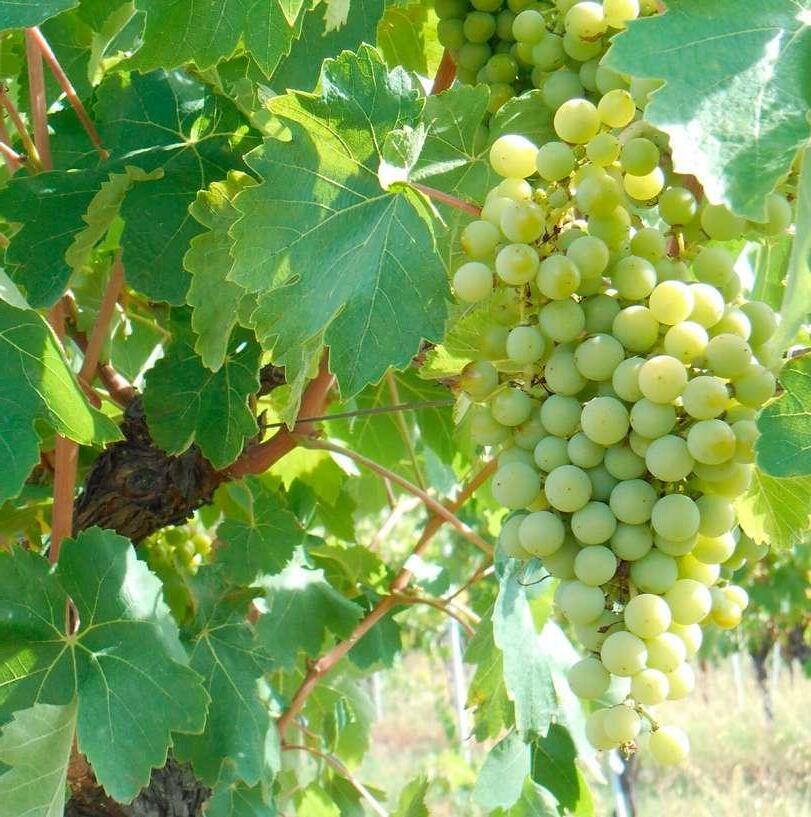
5
JULY-AUGUST 2022 69 GAMBERO ROSSO
STORIES
«THE BEATING HEART OF MATELICA WINE»»
Before going into the Matelica vineyards, let's talk about the present and future of the appellation with Alberto Maz zoni , Director of the Marchigiano Institute for the Protec tion of Local Wines.

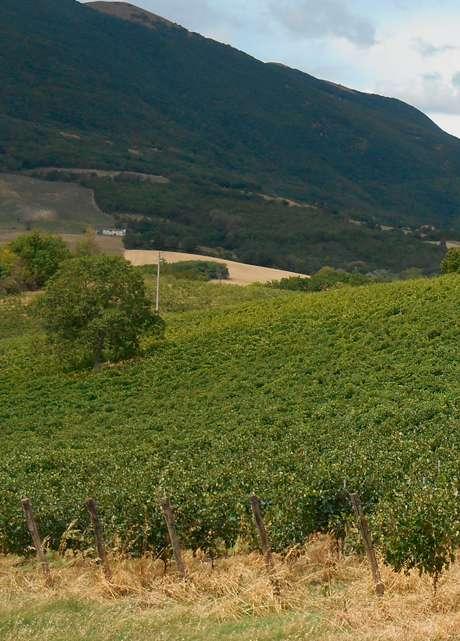
What role does the name Matelica play in the Marche scenario?
Due to its pedo-climactic characteristics, Matelica represents a continen tal area, different from the rest of the regional wine scene, characterised by a more Mediterranean and marine vocation. On a national level, Ver dicchio is the beating heart of the region. Verdicchio di Matelica differs from Verdicchio Colli di Jesi for a greater acidity, flavour and a higher longevity.
The change of the name of the denomination from Verdicchio di Matelica to simply Matelica, do you want to focus above all on territorial identity?
The change was the result of a long thought process. We did not want to eliminate the name Verdicchio from the appellations, but it is equally true that in the world scene the indication of the grape is today indefensible. Hence the need to protect wines by focusing above all on the territory of origin. However, the optional possibility of also using the name of the grape will not lead to the abandonment of the term Verdicchio, also be cause it would make no sense to radically change the name, throwing away the work of fifty years. However, it was necessary to change in or der to place emphasis on the territory as an irreproducible and identifying element.
In addition to the change of name, to what other projects that the Marchigiano Institute for the Protection of Local Wines is developing for the future of Matelica?
After this pandemic, it was necessary to think about different policies, which we can summarise in three points. First of all, we need to strength en the regional identity of the Le Marche as a whole, focusing above all on organic and green sustainable viticulture. We must then concentrate production, creating a strong product identity and setting a consistent price. Today the average price of Marche wines is too low. The price of wine is not set only by the market, but also by the will of producers, who must believe more in the value of their work. Too low a price gen erates two consequences: the uprooting of vineyards and the lack of investment on wineries, with serious damage to the entire regional viti culture. Finally, it is necessary to create a stronger territorial identity beyond the individual denominations, also in terms of marketing.
In light of these projects, how do you imagine the future of Matelica in the next few years?
I hope that the Matelica Riserva type will progressively grow, up to 80% of production, with a strong increase in the quality of the denomination. A small territory like Matelica must aim for quality, aim to produce great whites for the HoReCa sector and not for large-scale distribution.
What space is there for the Classic Method?
Currently, the consumption of sparkling wines is growing strongly. Con sidering the size of the territory, it would be advisable to focus on a small production of high quality, with long ageing on the lees of 36, 48 or 60 months, particularly suitable for a grape with a good structure and high acidity such as Verdicchio. The results of those who have followed this path are interesting.
fresh and savoury finish. Verdicchio di Matelica Torre del Parco '19 is the clas sic interpretation of the grape in the name of elegance and finesse, with aromas of wildflowers, grapefruit and green apple. The winery's flagship la bel is Verdicchio di Matelica Brondoleto '19 , which comes from a selection of the best grapes of the company cru by the same name. The rich ripeness of the grapes and the partial fermen tation in barrique, gives the wine a harmonious character, with notes of pineapple, yellow fruit, honeyed nu ances, crossed by a clear salty trail. In contrast to the rest of the local pro ducers, Fabio Marchionni continues to produce only one label. His Verdic chio di Matelica Collestefano '19 has been an essential point of reference for the past 20 years when it comes to this area. The 20 hectares of vine
JULY-AUGUST 2022 70 GAMBERO ROSSO
yards are located at 500 metres above sea level, facing north-east, and are grown organically. The soils are com posed of sand, silt and clay, which rest on a substrate of sandstone rocks. The vineyard is the real kingdom of Fabio, who entrusts the success of his wines to an obsessive care of the vines, dedicating himself to very sim ple vinifications and refinements. A convinced supporter of a wine with a popular vocation, he has no intention of making Reserves or labels dedicat ed to individual vineyards. We tasted the latest vintages of his Verdicchio with Fabio himself. The '19 vintage is taut and vertical, with aromas of lime, grapefruit, granny smith apple, and a savoury and citrine finish. The '20 is more harmonious and rich, with aromas of golden apple, white peach and with a sip denoting ripe fruit.
Also interesting is the Verdicchio di Matelica Classic Method , aged on the lees for 24 months. The latest addi tion is the Spumante Sur Lies Vigna Le Prata , citrine and savoury, simple and essential, it is perfect for a sum mer aperitif. The novelty of the Coll estefano vineyards is the presence of strawberries in the under row. The in spiration comes from Fabio's mother, who grows strawberry beds outside the cellar. From the observation of the small plants, the idea was born of trying to plant them in the vineyard as well. Strawberries expand rapidly, stay low and do not compete with the vine. They create a living mulch, which avoids mechanical weeding, limits soil erosion and promotes biodiversity. A natural symbiosis between grapevine and strawberries that seems to work very well.
THE BEST TASTED
verdicchio di MateLica vigneto fogLiano ‘18 bisci - bisci it
verdicchio di MateLica riserva caMBrugiano ’16 belisario - belisario it
verdicchio di MateLica ‘19 collesteFano - collesteFano coM
verdicchio di MateLica vertis ’19 - borgo Paglianetto borgoPaglianetto coM
verdicchio di MateLica viLLa MariLLa ’19 - Marco gatti
verdicchio di MateLica ‘19 colPaola - tenutacolPaola it verdicchio di MateLica terra di Mezzo ‘15 la Monacesca - Monacesca it verdicchio di MateLica cavaLLo ’18 le stroPPigliose - lestroPPigliose coM
verdicchio di MateLica Bio egos ’20 - ProviMa verdicchio di MateLica Metodo cLassico Brut doc cavaLier vincenzo Piano di rustano - Pianodirustano it verdicchio di MateLica gegé ‘18 cavalieri - cantinacavalieri it verdicchio di MateLica aLarico ’20 Maraviglia - viniMaraviglia coM

Among the old vintages, tasted during the verticals proposed by a number of producers, we spotlight a few labels that have highlighted the remarkable evolutionary capacity and longevity of Matelica wines:
verdicchio di MateLica riserva MiruM ‘12 - la Monacesca verdicchio di MateLica vigneto fogLiano ‘13 - bisci verdicchio di MateLica riserva caMBrugiano ‘08 - belisario verdicchio di MateLica vertis ‘08 borgo Paglianetto verdicchio di MateLica ‘13 colPaola
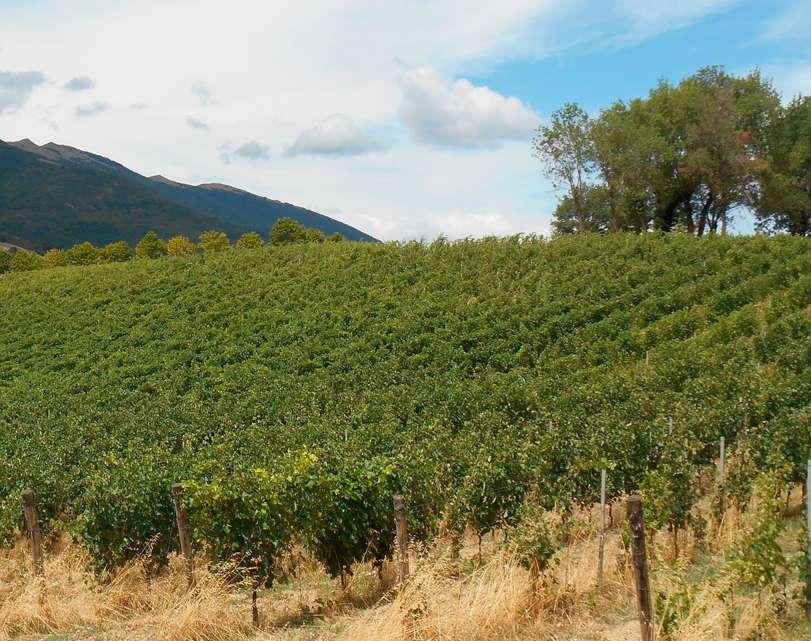
JULY-AUGUST 2022 71 GAMBERO ROSSO VERDICCHIO DI MATELICA
6
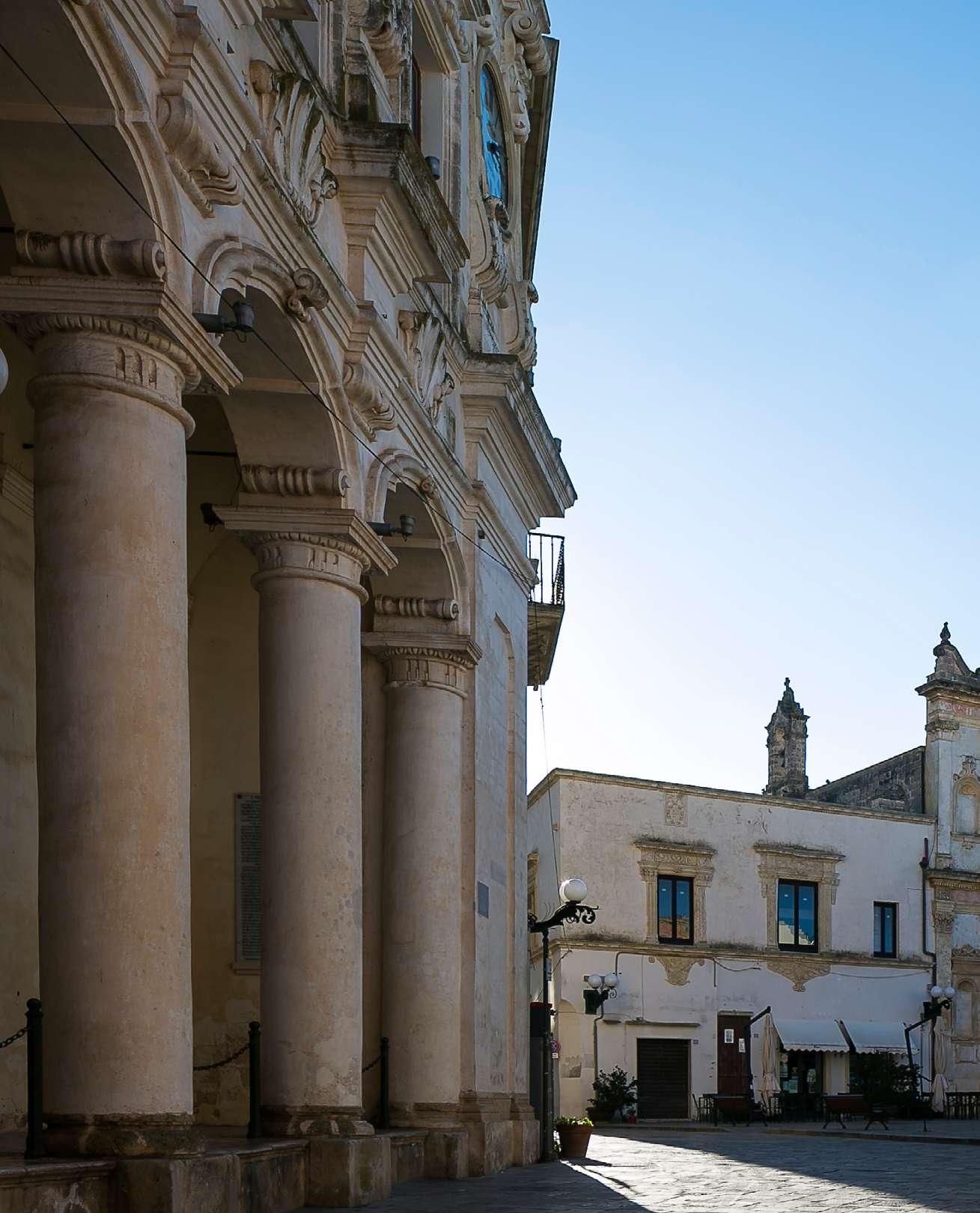
LECCE-OTRANTO GALLIPOLI. THE SALENTO NEW WAVE AMID SUSTAINABILITY AND TASTE, THE SEA, GARDENS AND SOLIDARITY
In the year of Artisan Fishing and Aquaculture, we went to Salento to understand how the small towns on the coast (and not only) of the far south of Italy move; where, particularly in summer, there is a surge in tourism and the desire to fish in places historically dedicated to the cultivation of the sea. A path of regeneration in which chefs and food artisans also play a central role
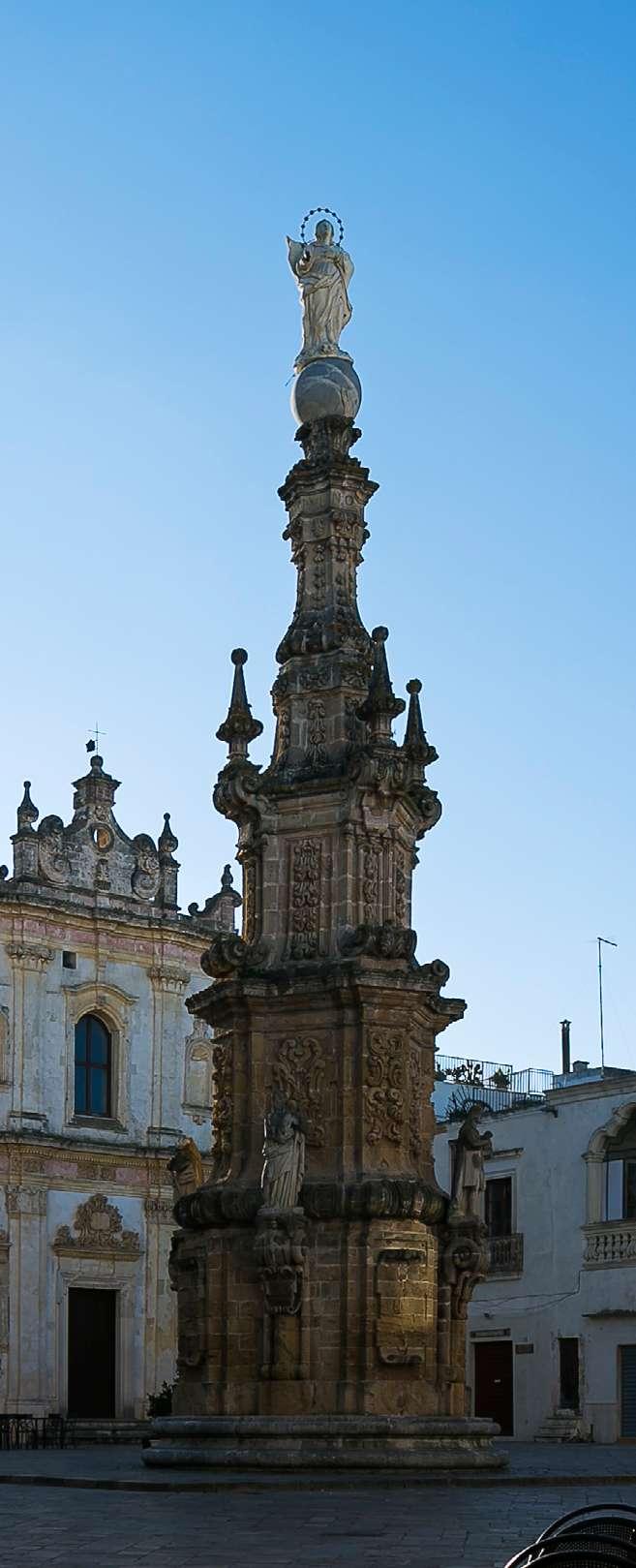 words and images by Massimiliano Rella
words and images by Massimiliano Rella
T’he UN declared 2022 the "Year of artisanal fishing and aquaculture." The news did not surprise the small coastal community in Salento, con sidered by FAO – the United Nations organisation for food and agriculture –a model of sustainability to be export ed all over the world. Tricase Porto is an emblematic case in the province of Lecce, which in 2013 became the "Porto Museo di Tricase," that is, a sort of liv ing museum that has restored cultural dignity to fishing, services, trade and other activities related to the sea. Since projects evolve, in 2018 a branch of the International Centre for Advanced Ag ronomic Studies of the Mediterranean (Ciheam) also opened as the emana tion of an intergovernmental organ isation based in Paris that mobilises
scholars and officials from all over the world for advanced training projects on "Blue Growth," i.e. issues such as man agement of marine resources, sustain ability of fishing equipment, tourist diversification and the enhancement of the small catch of fisheries.
THE REBIRTH OF SMALL FISHING

Thus, piece by piece, a small coastal community, once ironically called "Tricase Morto," has finally revived and today counts among its businesses eight restaurants - also open in winter - various B&Bs and elegant cafes such as Oltremare, pastel tones and model boats among its decor elements.


«This new focus on the territory has given birth to artisanal fishing and finally there is a fleet of 12 boats, managed by fishermen under 40 years old» said
Fishermen and restaurateurs were among the first to bet on the tourist rebirth of the coastal area, activities such as Anime Sante, a family-run fish farm, a sort of "lodging with food farm" by the sea that only cooks the catch of the day. Then there's A Casa Mia trattoria of the "maestro" Andrea D'Amico, an elderly cook and former Taekwondo world champion who today delights guests with seafood dishes, putting in the spotlight humble oily fish varieties. Among the proposals is a generous sweet and sour bluefish with spontaneous pappaciddi flowers, with a hint of lemon, and wild fennel pollen.
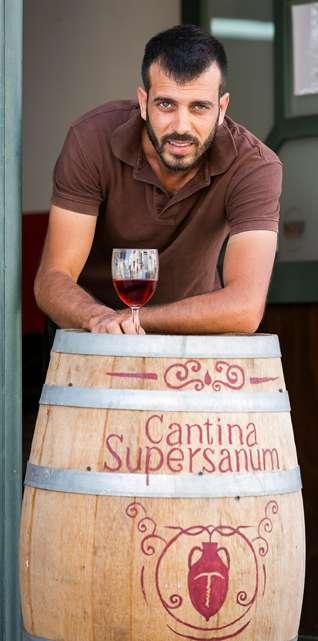
1 2 3 JULY-AUGUST 2022 74 GAMBERO ROSSO STORIES
Antonio Errico of the Magna Grecia association, established in 2002 by a group of professionals from Tricase and creators of the Porto Museo project.
THE SEA, CHEFS AND HAUTE CUISINE

Ionian Sea to the west, Adriatic Sea to the east: Salento is a land between two seas, where the sea is a holiday and a resource to be valued, starting from the table and typical products, a fertile ground for many high-quality chefs who often work in kitchens of strong aesthetic appeal, set in the elegant Salento contexts: baroque palaces, masseria farms, modern design spaces. Just like in the whitewashed village of Matino, where two art and fashion entrepreneurs, Milanese collector Luca Pavia and Marta Carichino from Lecce, created the Foscolo restaurantgallery, where among contemporary works of art (Lodola, Burri, Guttuso, Giraldi, just to name a few artists) guests can enjoy the creative
cuisine of the young chef Matteo Normanno . Among the opening recipes, the Fisherman's Breakfast is a juice of mussels and coconut, a touch of lime zest, sprinkled with ginger and foam obtained from the infusion of almonds in milk. Among the main courses, a delicate mullet on a vacuum-packed purple potato purée flavoured with butter, with Chardonnay sauce and herb oil. The beautiful Farmacia dei Sani, once the village pharmacy and now a gourmet restaurant of the Rizzo brothers and artisan liqueur factory La Farmacia dei Contenti, is instead located in the baroque heart of Ruffano, in a context embellished by the colourful Salento decorative lights; here young chef Valentina Rizzo - worked under Ben Reade in Edinburgh and with Paolo Lo
WINE TOURISM, THE ROWS BETWEEN TWO SEAS

Starting from the easternmost win ery in Italy, with vineyards reaching up to 30 metres from the Adriatic, in the Baia dei Turchi, Otranto coun tryside. We are at Tenuta Corallo, winery and wine tourism resort owned by Enzo and Gabriella Mar ti, entrepreneurs and wine produc ers: a beautiful winery with mini malist architecture on a 13-hectare farm, 8 of which are vineyards of Negroamaro, Black Malvasia, Ale atico and Fiano. Among the novel ties, a 16-month barrique Primitivo aged in American oak and as well as a classic method.
From the coast of Otranto we move to Supersano in the Supersanum cellar of the siblings Paolo, Sara and Gabriele Nutricato, Fivi and Vinna tur partners, with just 8,000 bottles of natural wines, without filtration or added yeasts, compost in fertili sation and natural antagonists in the vineyard. In total 7 labels are made from negroamaro, black mal vasia and a small part of trebbiano, malvasia, bombino and verdeca grapes for the whites. Among the novelties, the recovery of the native cigliola and wild moscatello grapes, with white berries, which were in danger of disappearing and which will go into production in a couple of years. Among the flagship labels, Don Mosè is a red from 100% ne groamaro with spicy notes. The tour ends on the Ionian coast, in Gallipoli, in the Coppola 1489 ar chitectural cellar, the new head quarters inaugurated in 2018 by brothers Giuseppe and Lucio Cop pola, heirs of a family of historic wine producers in the Alezio area. About 15 hectares of vineyards and a range that spans from vermentino to negroamaro rosé and also vinif ied in white. Since 2015 also two classic brut and pas dosé methods, with disgorgement at 36 and 60 months ready by 2025. Patitari Salento Igt is a pure primitivo aged two years in oak barrels, excellent with structured dishes and spicy cheeses. And you can take advan tage of it at the Salento-inspired table of Vigneto restaurant, inside the cellar and managed by young Niccolò Coppola, son of Giuseppe.
4 JULY-AUGUST 2022 75 GAMBERO ROSSO SALENTO

5
1. Andrea D'Amico, "master Andrea", cook and former instructor and Tae Kwon Do champion, on the terrace of the seaside restaurant A Casa Mia in Tricase Porto (LE)
2. Paolo Nutricato, owner of the Supersanum winery, in Supersano (LE)
3. Wine producer Giuseppe Coppola, owner of the Coppola 1489 winery in Gallipoli (LE)
4. Farmacia dei Contenti in Ruffano (LE): the Piazza del Popolo is decorated with lights for the feast of Sant'Antonio
5. Spicy gazpacho, anchovies, couscous arancini stuffed with almonds, anchovies and raisins: appetiser from the Giardino dei Tolomei, Racale (LE)

6. Negroni Sbagliato and Campari Shakerato with a homemade smoked salmon sandwich and guacamole: a proposal for 300Mila Lounge in Lecce
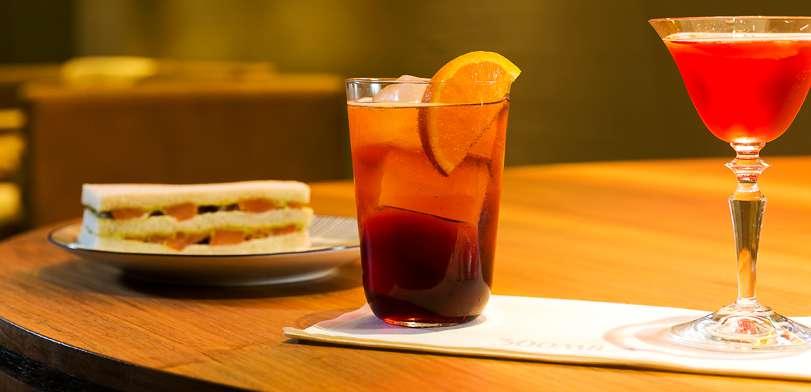
6
Priore - loves to play with meat/fish pairings.
ENCOUNTER OF LAND AND SEA Examples? Tastings? The Maiale e Baccalà offers marinated pancetta cooked at low temperature, grilled, glazed and then served with smoked cod that's been lightly steamed. Or think Cavallo Sgombrato, Salento's reinterpretation of veal with tuna sauce, a roast beef of horse meat and mackerel foam with bloomed capers, made crisp in boiling oil. Instead, at Il Giardino dei Tolomei, in a finely furnished 15th-century historic building, with a terrace for after dinner drinks, a courtyard-garden and lots of atmosphere, with the refined fusion cuisine of Calabrian-born chef Giorgio Trovato. On his CV are experiences at the European "courts" of Sergio
Herman in The Jane Antwerp or the Catalan Can Fabes with chef Santi Santamaria, up to Azurmendi, Basque Country, alongside Eneko Axta. A wealth of experiences and techniques with which Trova reinterprets SalentoMediterranean ingredients and recipes, cleaning up superstructures with a look at the world. Among his crosspollination dishes we find creations such as spicy gazpacho with couscous arancini stuffed with almonds, anchovies and raisins; or the grilled and glazed squid with oyster sauce, soy and lime, served with wakame seaweed, sesame, sesame oil, turmeric bread and flax seeds.
SOLIDARITY EXPERIENCE IN LECCE
We move to Lecce where bartender Davide De Matteis, owner of
300Mila Lounge, a nice multipurpose venue open from breakfast to after dinner and awarded several times by the Italian Bar guide. After an encore aperitif of Negroni Sbagliato and Campari Shakerato, accompanied by a sandwich with homemade smoked salmon and guacamole, we moved on to a taste octopus cooked in olive oil with the house's pickled vegetables and a delicious risotto with pink prawns, with basil extract and Jerusalem artichoke cream. The 25-year-old executive chef Stefano Carcagni for 2 weeks now leads the brigade, while chef Marco Silvestro coordinates the Social Food Corporation project. The Social Food Corporation is just the latest initiative of ebullient Davide De Matteis, a talented bar manager: years ago he ran the luxurious Schumann's Tagesbar and opened the Armani Caffè in
JULY-AUGUST 2022 77 GAMBERO ROSSO SALENTO
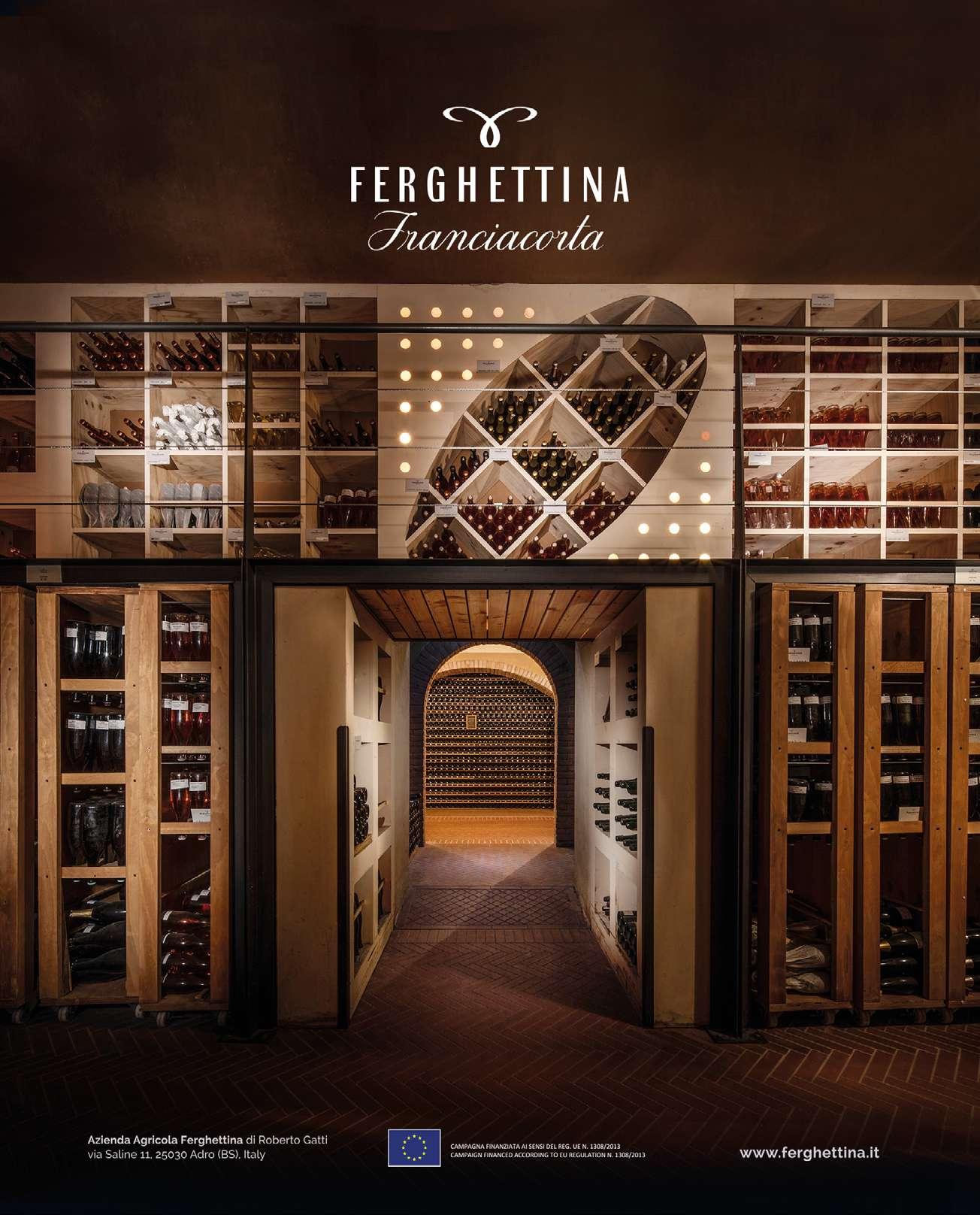
Munich. The project includes training and reintegration into the workforce of a group of inmates at the end of their sentence, who in a laboratory with a kitchen of 1,000 metres in the former juvenile prison of Lecce produce gastronomic specialties, pastries and in summer also quality ready-made meals for the beach lidos in Salento.
FROM THE ADRIATIC TO THE IONIAN SEA.
THE SCAPECE OF GALLIPOLI
The sea changes, but not the substance, between Porto Cesareo, Gallipoli and Marina di Nardò, the coastal towns of the Arneo region, well-known tourist resorts and a treasure trove of flavours and typicality. Above all, the Gallipoli scapece, a product born from the need to preserve discarded fish (like local boghe, vopilli, zerri, silversides, etc.) which,
once fried, are mixed with breadcrumbs soaked in vinegar and sprinkled with saffron which gives an intense yellow colour to this very popular specialty in the Salento festivals, sold in take-away trays, but which some restaurants now bring to the table in a gourmet key. As, for example, Domenico Simone does in his Conte Cavour in Veglie, a chef who is focusing on revisited dishes of poor fish such as mackerel marinated in whiskey with onion and sweet and sour Negroamaro.
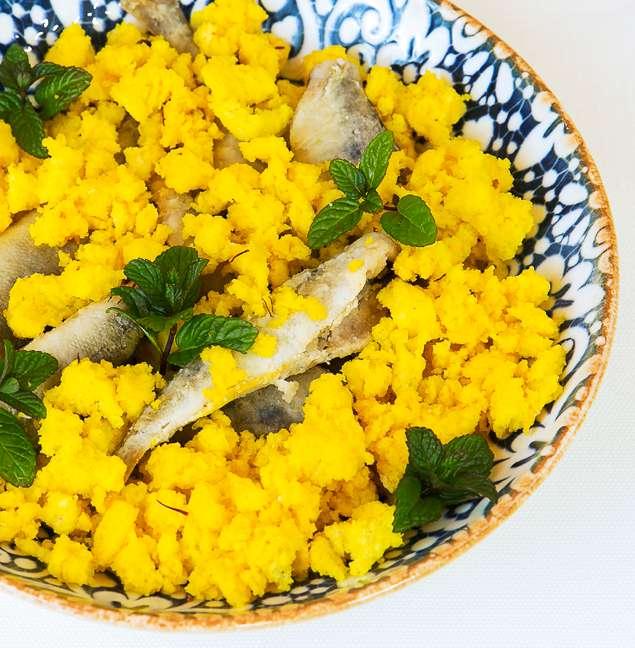
Despite being a holiday snack, prepared at home and in small workshops, there is a company that has been producing Gallipoli style scapece continuously for seventy years: Scapece Manno 1954. «Before the pandemic, it represented 90% of the business for us, but with the restrictions and the cancellation of street festivals we were forced to diversify
- explains young Mario Manno - transforming a discomfort into an opportunity and expanding the range: today, waiting for better times, the scapece represents only 30% of production.» In the meantime, the Mannos have invented a seafood aperitivo, an initiative born in the summer and grown by word of mouth: a table today, a table tomorrow, queues of tourists have a snack in front of the building in strong yellow-blue hues, the colours of the company logo.
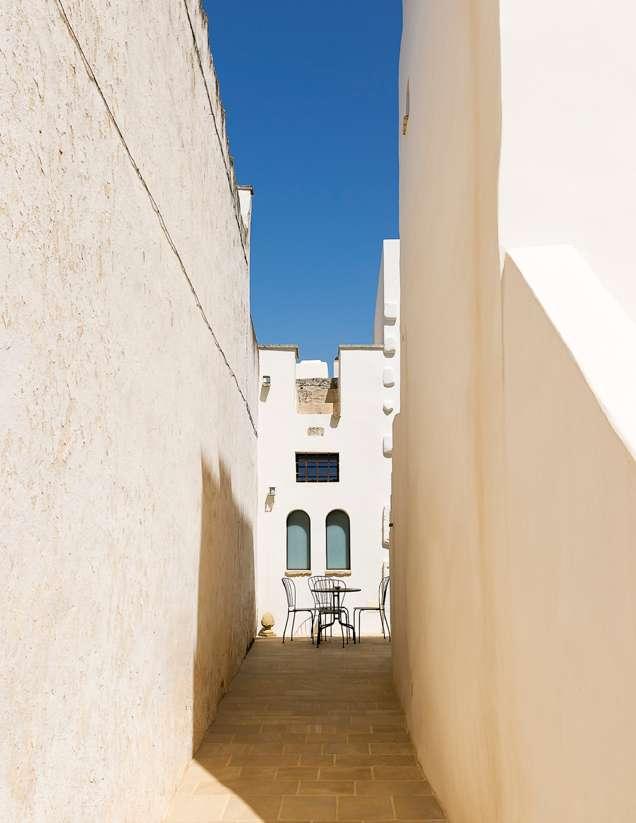
SALENTO, SEA CULTURE
La Sustainability of the sea is increasingly understood due to its cultural and lifestyle implications, currently at the centre of local discourse and initiatives. For example, the network of sea museums that in the Nardò marina includes the
7 8 JULY-AUGUST 2022 79 GAMBERO ROSSO SALENTO
ADDRESSES

Where to eat
Lecce 300Mila
via 47° Reggimento FanteRia, 5 0832 307448 - gRuppo300mila it
Bros' via degli acaja, 2 0832 092601 - pelllegRinobRotheRs it
Fugu restaurant via c battisti, 1 389 3408108 - FuguRestauRant it
osteria degli spiriti via c battisti, 4 0832 246274 - osteRiadeglispiRiti it
priMo restaurant in lecce via 47° Reggimento FanteRia, 7 0832 243802 - pRimoRestauRant it


Castro (LE) da aMedeo via sant'antonio, 46 0836 947040 - daamedeoRistoRante it
Cutrofiano (LE) pizzeria Mauro laRgo immacolata, 4 0836 512112 - @RipamauRo mR Gallipoli (LE) gaio ristorante via lecce, 153 338 4425208 - RistoRantegaio it
Matino (LE) danilo osteRia cReativa via basento, 13 349 8754865 - daniloosteRiacReativa it
Foscolo via u. Foscolo, 15 366 8719532 - FoscoloRistoRante it
Nardò (LE) tRattoRia san giuseppe cenobio piazza san giuseppe, 2 335 8445446 - tRattoRiasangiuseppecenobio com
Otranto (LE)
l'altro BaFFo via cenobio basiliano, 23 0836 801636 - latRobaFFo com
Porto Cesareo (LE)
aqua a le dune suite Hotel stRada dei bacini, 89 0833 560660 - aquapoRtocesaReo it
Racale (LE)
il giardino dei toloMei via Regina maRgheRita, 32 324 9241810 - giaRdinodeitolomei it

"HUMBLE" FISH IS A RESOURCE FOR FINE DINING
Our latest editorial initiative "Pesci Ricchi Pesci Poveri'', written by Mas simo Vaglio, is a contribution and a guide to the use of fish species from the seas of the Terra d'Arneo, an area of 12 municipalities over looking the Ionian Sea and which includes Gallipoli, Porto Cesareo and Marina of Nardò. Territories that since ancient times have valued the importance of "humble" fish, I am thinking of conservation pro ducts such as the Gallipoli-style scapece or the Porto Cesareo fisherman's soup, the quataru, a recipe that changes with the seasons and with the catch of the day. The theme of sustainability and the enhancement of humble fish species is also at the centre of other projects of the Terra d'Arneo local activist group, a public-private partnership in our area. To support the economy of the sea, LAG has activated the "Sportello Pesca'' Fishing Desk, a dedicated information and advice service to fisher men - to access the opportunities offered by EU funds - and to consumers, to guide them towards sustainable consumption and behaviour. In addition, we brought the theme of the sea and fish resources to schools with a "Didactic Suitcase" to tell the children, through play, about sustainability and richness of the Ionian seabed. We then activated structural projects with EU funds, such as the arrangement of the fish market at the port of Gallipoli and equipped landing points in Nardò and Porto Ce sareo. Now, however, the times are ripe and we want to insist on restaurant dining, also creating a virtuous link with fishing, a sector that's been suffering for years.
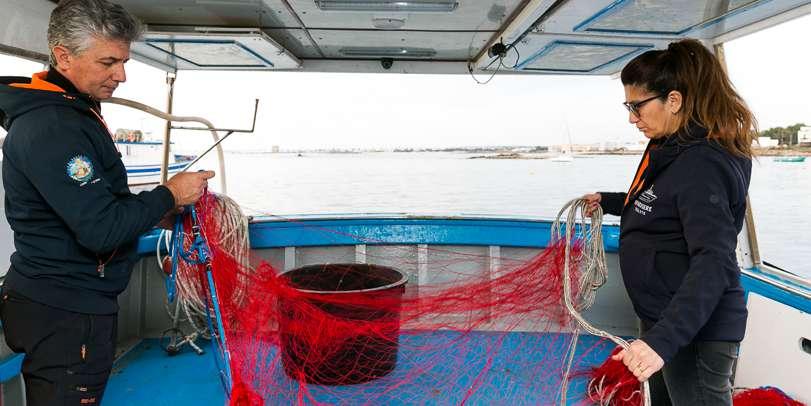

Cosimo Durante, president GAL Terra d’Arneo
9 10
JULY-AUGUST 2022 80 GAMBERO ROSSO STORIES
curious Aquarium of Salento, houses an exhibition on the seabed and species of the Ionian coast, even rare, put back into the sea after a few weeks: sea urchins (Stylocidaris affinis), vacchette (Nudibranchia cuvier), Bernardo hermit crabs (Pagurus bernhardus), scorpion fish, moray eels... Plus information and support projects for small-scale fishing in Gal Terra d'Arneo, a local activist group that creates partnerships between public and private institutions of 12 Municipalities of the Ionian belt (see box) with local development objectives. Among the most important initiatives are the Fishing Desk, Educational Suitcases in schools, the promotion of humble fish among Salento restaurants and measures for the integration of fishermen's income.
In Porto Cesareo, for example, "boatswain" Giovanni Colelli and his
wife Barbara with their fishing boat Lo Sparviere offer fishing tourism and artisanal fishing activities, very popular in summer, also in the form of gift vouchers, bachelor parties and boat parties with rod and line fishing. Experiences are enriched by an on-board menu that includes homemade canned fish preserves, minced sardines, tuna in olive oil, moray pate, cuttlefish crostini and fried fish caught by participants, largely: mackerel, vope, sant'Andrea, but also pagello, white breams and small groupers. «We are the only fishing tourism company in Porto Cesareo, but our son has just bought a fishing boat and now he will compete with us,» jokes Colelli.
ORGANIC FARMING AT OPEN SEA
The award-winning eco-friendly fish farm In Mare lives on sustainability
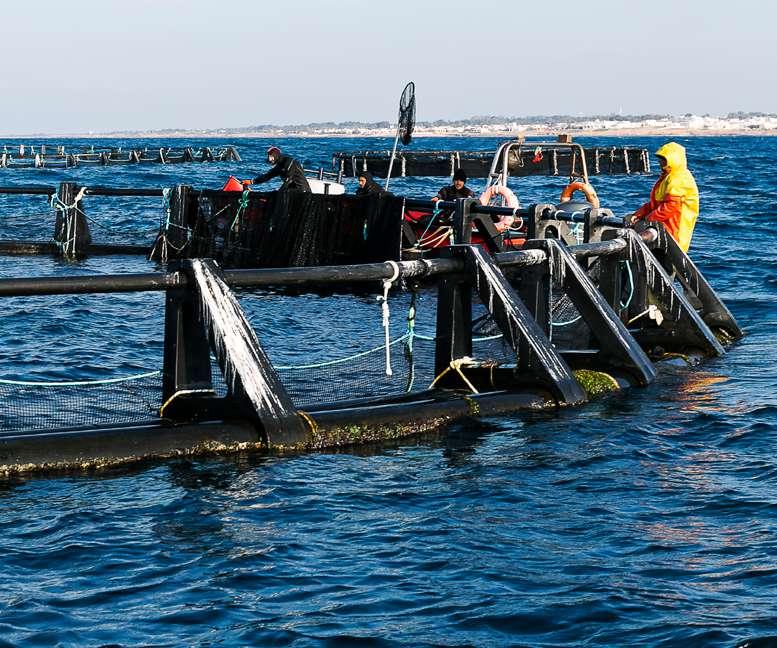
11 SALENTO
which, in front of the Ionian coast of Torre Suda in Racale, manages 15 breeding cages for sea bream, croaker and sea bass, 3 of which are certified organic. The Reho brothers' company markets and processes 150 tons of fish per year and is the only one in southern Italy for croaker. Numbers aside, it is carrying out projects for the efficiency and sustainability of fishing, for example to recover the pulp that remains attached to the bone and make it fish burgers and other products with the goal of zero waste. In addition, it has invested in solar panels at the Sannicola transformation centre and in upgrading of green boat engines. The breeding cages are anchored at 2 kilometres, 40 metres deep: retractable floating structures, without accumulation of metabolites thanks to constant currents and no dispersion
7. A suggestive glimpse of the courtyard of B&B Le Sei Conche, in Gemini, fraction of Ugento (LE)
8. Gallipoli style scapece with fried popilli, breadcrumbs in vinegar, saffron from Salento and mint, the dish is from Conte Cavour restaurant, in Veglie (LE)
9. The "didactic suitcases" of the Fishing Desk managed by the Gal Terra d'Arneo. At the two extremes, biologist Massimo Toma and territorial supervisor Alessandra De Luca; in the centre (left) coordinator Angelo Metrangolo and President of the Gal, Cosimo Durante
10. Gianni Colelli with his wife Barbara, fishing tourism operators in Porto Cesareo (LE)
11. Fish farming cages 2 km from the coast in the In Mare organic farm, in front of the marina of Racale (LE) JULY-AUGUST 2022 81 GAMBERO ROSSO
Ruffano (LE)
la FarMacia dei sani piazza del popolo, 14 339 8332514 - FaRmaciadeisani eu
Salve (LE)
agRituRismo sante le muse stRada comunale salve moRciano, 3 342 7911059 - santelemuse it
Supersano (LE)
al KiloMetro zero via maggioRe gagliano, 23 340 1557104 - RistoRantekilometRozeRo com
Masseria le stanzie s da pRov le 362 supeRsano cutRoFiano km 32,900 - 0833 632438 - lestanzie com
Tricase (LE)
1 gaMBero a casa Mia – trattoria di Mare tRicase poRto - via santa maRcellina, 1 347 3808732
taverna del porto tRicase poRto - l maRe c colombo, 121 0833 775336 - taveRnadelpoRto com
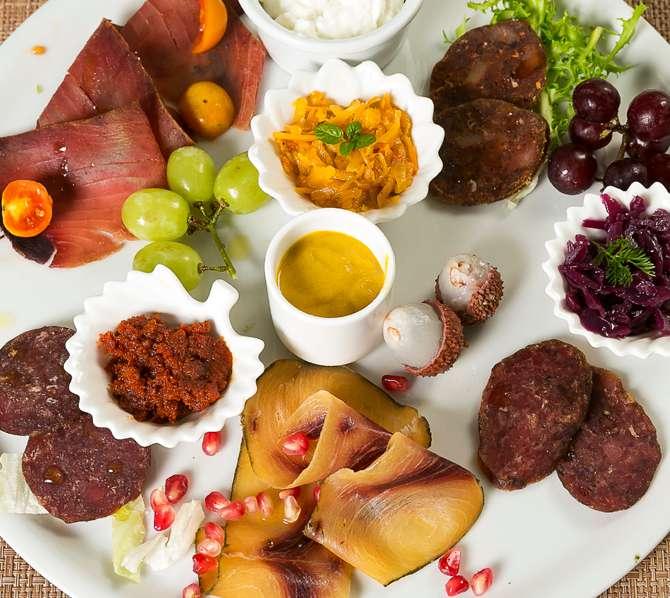
Veglie (LE) conte cavour via iv novembRe, 33 0832 1592175 - @RistoRanteconte cavouR
Where to shop
dolce arte cutRoFiano (le) - via g gaRibaldi, 31 0836 515073 - dolceaRtesalento com
inMare gallipoli (le) - via delle industRie 0833 201511 - inmaRe eu
oFFisHina – insaccati di Mare matino (le) - via aRmellini, 74 351 9938123 - oFFishina it
scapece Manno 1954 sannicola (le) - via delle tessitRici 340 8033606 - scapecemanno it
Wineries
antico palMento - garoFano manduRia (ta) - via FabRizi, 20a 346 0148341 - anticopalmentogaRoFano com
MicHele calò & Figli
tuglie (le) - via masseRia vecchia, 1 0833 596242 - michelecalo it
cantina coppola 1489 gallipoli (le) - via tenuta di toRRe sabea 0833 201425 - cantinacoppola it
supersanuM supeRsano (le) - via c battisti, 177 347 6813680 - cantinasupeRsanum com
of feed, nor use of electricity. There are 15 cages of 22 metres in diameter, a lowdensity breeding space (about 10 kilos per cubic meter), of which 3 are managed organically; it is among the first and the few in Italy to be organic in the open sea. The same feeds cost 30-35% more: organic vegetable meal, fish meal from sustainable fishing or from fish waste. «The environment, plant density and nutrition are fundamental and at the moment we ensure the organic in three cages for the sea bream - explains Aldo Reho - We want to convert the other 12, but we have to proceed gradually and in parallel to the sensitivity of the consumer, since organically farmed fish is still a new concept that does not immediately find a market.»
THE RESOURCE OF THE CURING OF THE SEA
What if we went as far as seafood curing butchery? No surprises, it is
"just" a different way of preserving fish, which can be trendy. This is not new, of course, but here it can make a difference and guarantee the "circularity" of the entire fishing chain. In Matino, this experience sees three young brothers as protagonists, Danilo, Valerio and Pamela Romano, artisan producers of tuna, swordfish and amberjack sausages, eight specialties under the Offishina registered trademark. The three brothers are also the owners of Danilo Osteria Creativa, a simple place where you can taste curiosities such as the "house" platter (swordfish, tuna, amberjack) with fruit and vegetables; or the carbonara di mare, with seasoned swordfish pancetta, fresh sea urchin roe, extra virgin olive oil, black pepper, breadcrumbs with spirulina algae and sea lettuce. And if you want to enjoy aperitif, here you are served with a KapirOstrica, a "marine"
12
JULY-AUGUST 2022 82 GAMBERO ROSSO STORIES
6 GLASSES FOR 6 DISHESI
Stefania Erroi, sommelier, dining room manager and pastry chef at Il Giardino dei Tolomei in Racale (LE), pairs six dishes offered by local restaurants with five wines (plus a beer) from Salento.
1 Risotto with cuttlefish ink, cuttlefish tartare and sea urchin pulp conte cavouR – veglie (le) Sorsi d’Estate ’20 antico palmento – anticopalmentogaRoFano com
The wine on the nose is complex and has musky hints, notes of yellow fruit and white flowers, with nuances of rose petals and broom. In the mouth it is full, full bodied, harmonious, with a fruity aftertaste and moderate acidity, which enhances the pulp of the sea urchins and other marine scents.
2 Spicy gazpacho, anchovies, couscous arancini stuffed with almonds, anchovies and raisins giaRdino dei tolomei – Racale (le)
Metiusco Anniversario Rosato ’20 palamà – vinicolapalama com
The wine comes from negroamaro grapes, the nose has in tense notes of morello cherry, cherry and strawberry, together with citrus hints and a floral finish. The contrast between al monds, anchovies and raisins is amplified by the wine.
3 Pork and Baccalà FaRmacia dei sani – RuFFano (le)
Flaminio Susumaniello ’19 vallone – agRicolevallone com Intense ruby red with violet and brilliant reflections, fruity, spicy, with vegetal notes; in the mouth it is full bodied, power ful and savoury, with a soft and enveloping finish, rich in spici ness. It enhances the cooking technique and binds naturally to the aromas of the dish.
4 The Fisherman’s Breakfast Foscolo – matino (le) Mjère Rosato ’20 michele calò & Figli – michelecalo it Negroamaro base plus 10% of Malvasia Nera Leccese, trained on alberello vines. Intense and bright coral pink colour. The nose has a large bouquet reminiscent of cherries and small red fruits. In the mouth it is soft, elegant and of good persisten ce, rightly savoury. In excellent balance with the vegetable and dried fruit notes of the appetizer.
5 Ciceri e Tria with black mussel sauce la cucina della pRovvidenza – masseRia panaReo – otRanto (le)
Rocci ’20 cantina coppola 1489 – cantinacoppola it

A negroamaro vinified in white, straw yellow with an intense bouquet, with fruity notes of pear, peach and almond. Good flavour, minerality and balance.

6 Artichoke carpaccio and tabulè of vegetable couscous, drops of homemade teriyaki sauce 300mila lounge – lecce
Pestanaca and Senatore Cappelli wheat beer agRituRismo sante le muse – @ santelemusecucineRiaagRituRistica
Amber with violet reflections, light and clean, decisive but wi thout excess. A top-fermented beer, a summer Ale with an alcohol content of 4.2% vol. Pleasantly bitter, with notes of to asted malt and a delicate hint of pestanaca, well combined with the vegetable notes of the dish.
Dreams are DESIRES
tenuta corallo
otRanto (le) - sp 366 litoRanea otRanto laghi alimini km 28,700 0836 666876 - tenutacoRallo it
vallone lecce - via XXv luglio, 7 391 3175902 - agRicolevallone it
vinicola palaMà cutRoFiano (le) - via a diaz, 6 0836 542865 - vinicolapalama it
Where to stay
casa agrosì supeRsano (le) - via tRieste, 2 328 8912212 - lascisa com - olioagRosi com
coclee suite palace salve (le) - via a diaz, 19 353 3233484 - 0833 741015cocleesuitepalace it
livantea agriresort otRanto (le) - stRada vicinale FabRizio 0836 801877 - livantea it
le sei concHe ugento (le) - FRazione gemini via chiesa, 12 0833 608802 - leseiconche it
Masseria panareo santa cesaRea teRme (le) via litoRanea otRanto santa cesaRea teRme paRco di poRto badisco 0836 812999 - masseRiapanaReo com
Masseria stellato naRdò (le) - sp 17 copeRtino 338 4652651 - masseRiastellato com
palazzo donna titì naRdò (le) - via don minzoni, 11 327 0419333 - palazzodonnatiti it
villa de donatis casaRano (le) - via caRavaggio, 6 349 8340530 - villadedonatis com
Info & Tourism
gal terra d’arneo teRRadaRneo it
la vetrina del gusto lavetRinadelgusto com
lo sparviere pescatuRismopeRviveReilmaRe it
porto Museo di tricase poRtomuseotRicase oRg
puglia ecotravel pugliaecotRavel com





sparviere - pescaturisMo per vivere il Mare porto cesareo pescatuRismopeRviveReilmaRe it
ADDRESSES
Comprare 10 km
JULY-AUGUST 2022 84 GAMBERO ROSSO STORIES 300Mila Lecce Gallipoli Tuglie Castro Tricase Veglie Cutrofiano Sannicola Manduria Matino Nardò Otranto Porto Cesareo Racale Ugento Ru ano Casarano Santa Cesarea Terme Salve Supersano Bros' Da Amedeo La Farmacia dei Sani Al Kilometrozero Pizzeria Mauro Primo Restaurant in Lecce Gaio Ristorante Trattoria San Giuseppe Cenobio Aqua a Le Dune Suite Hotel Danilo Osteria Creativa Il Giardino dei Tolomei Agriturismo Sante Le Muse Conte Cavour Fugu Restaurant Osteria degli Spiriti Masseria Le Stanzie A Casa Mia – Trattoria di mare Taverna del Porto Foscolo LaltroBa o Dolce Arte InMare Antico Palmento - Garofano Scapece Manno 1954 O shina – Insaccati di mare Casa Agrosì Livantea Agriresort Le Sei Conche Coclee Suite Palace Masseria Panareo Villa de Donatis Masseria Stellato Palazzo Donna Titì Michele Calò & Figli Cantina Coppola 1489 Supersanum Vinicola Palamà Tenuta Corallo Vallone Santa Maria di Leuca Dormire Cantine Mangiare
13
13. Cod tajine with vegetables from restaurant La Cucina della Provvidenza, in the countryside of Otranto (LE)


14. "The Fisherman's Breakfast" an appetiser of the Foscolo restaurant, in Matino (LE)
15. The port of Gallipoli. In the background, the Castle
16. Gelato maker Roberto Donno shows his Pasticciotto Leccese flavor in front of the Dolce Vita shop in Cutrofiano (LE)

14
TASTEFUL WELCOME
Salento is a land of baroque architecture, masserie farmhouses and his toric buildings furnished with style. And there is no shortage of places that also offer gourmet experiences and elegant cuisine. Like Masseria Panareo , near Otranto, a beautiful location with rooms scattered across the property and La Cucina della Provvidenza restaurant, which the own er Alessandro Zezza has entrusted to young chef Angelo Zaminga . Open in winter even on weekends, it offers dishes that come from Mediterra nean influences, in the spirit of Salento. These include Greek moussaka with lamb and ricotta; turcinieddhi, lamb entrails rolls originating from the Balkans; the tajine of cod fish and vegetables and of course ciceri e tria, a well-known Salento dish here reinterpreted with chickpea flour noodles (ciceri), served in black mussels sauce and fried pasta (tria). Among the desserts, think a delicate rosé Primitivo gelato, served with peaches in wine osmosis and sprinkled with cinnamon.
Located on a hill in Casarano, Villa de Donatis is an old noble mansion with a panoramic view, transformed into a charming guesthouse (4 rooms and suites) with a garden and a "home restaurant", located in a large fur nished hall with tasteful and vintage pieces and a window overlooking the valley below. The young Agnese de Donatis offers reinterpretations of local dishes as well as cooking lessons.
cocktail with oyster water, vodka and spicy sauce, served with an oyster and with a lot of edible "pearls" (a mixture made with dried fish filaments). «Salento has never been a land where pork is cured, so we said to ourselves: why not try with fish? And in 2004 the adventure began - sums up Danilo RomanoAfter years of experiments in 2015 we opened a transformation laboratory and started the business, using the farmer's techniques to transform fish in the form of salami, salt of extra pure salt and a mix of Mediterranean maquis herbs such as myrtle and rosemary.»
The Romano brothers process quality fish which they leave to salt for 7-10 days, depending on the size of the hand-cut pieces. These are massaged with salt, stuffed into natural cotton casings, tied manually and placed in ageing cells with technological
JULY-AUGUST 2022 85 GAMBERO ROSSO SALENTO
management, to monitor and correct the temperature according to the size, ensuring freshness and low humidity. The curing lasts from 6 to 12 months, but the best cuts make a further ageing of 4-6 months in tuffaceous caves in the basements of a historic building in Matino. The "sore" note is that the Romanos do not use fish from Salento, but from the Spanish, Mediterranean and Atlantic seas: yellowfin tuna, swordfish, amberjack, bonito. «We need ultra-safe raw material that is blast frozen directly onboard. The Spanish fishing fleets guarantee this - underlines Danilo Romano - We use instead to put fish under ice. Only crustaceans are killed on board. The point is that for our seafood salami it is necessary to have a low histamine, in blue fish it increases quickly and only blast freezing can stop it.»
AN UNUSUAL FOODIE GELATO


Cakes and traditional products of Salento are transformed into tasty gelato flavours by master pastry chef Roberto Donno, who through gourmet cre ams and cones enhances the taste of his land in an original way. Entering the Dolce Arte gelateria and pastry shop in Cutrofiano is a surprising expe rience. Behind the showcase you will be spoiled for choice: from sorbets (without milk) to Gallipoli-style scapece flavour (fish, breadcrumbs, vinegar and saffron) to be enjoyed on friselle and croutons. Then we find flavours like sweet peppers, Acquaviva onion and capers, sea urchins, Sannicola green peas and "scattarisciati" tomatoes, cauliflower and extra virgin olive oil. Let's move on to gelato. The friseddha is inspired by the breakfasts of the past and uses breadcrumbs (frizzule) of friselle, with a recipe that recalls the taste enriched with freshly milked milk. The capasa is instead a gelato that takes its name from the terracotta jar in which figs and almonds were preserved. You cannot miss the Lecce pasticciotto flavour, an icon of Salen to pastry art. We close with the femmane flavour, made with chocolate and tobacco, dedicated to the women who worked in the Salento tobacco fac tories.

16 JULY-AUGUST 2022 86 GAMBERO ROSSO STORIES
15


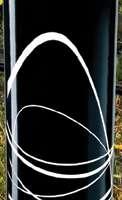



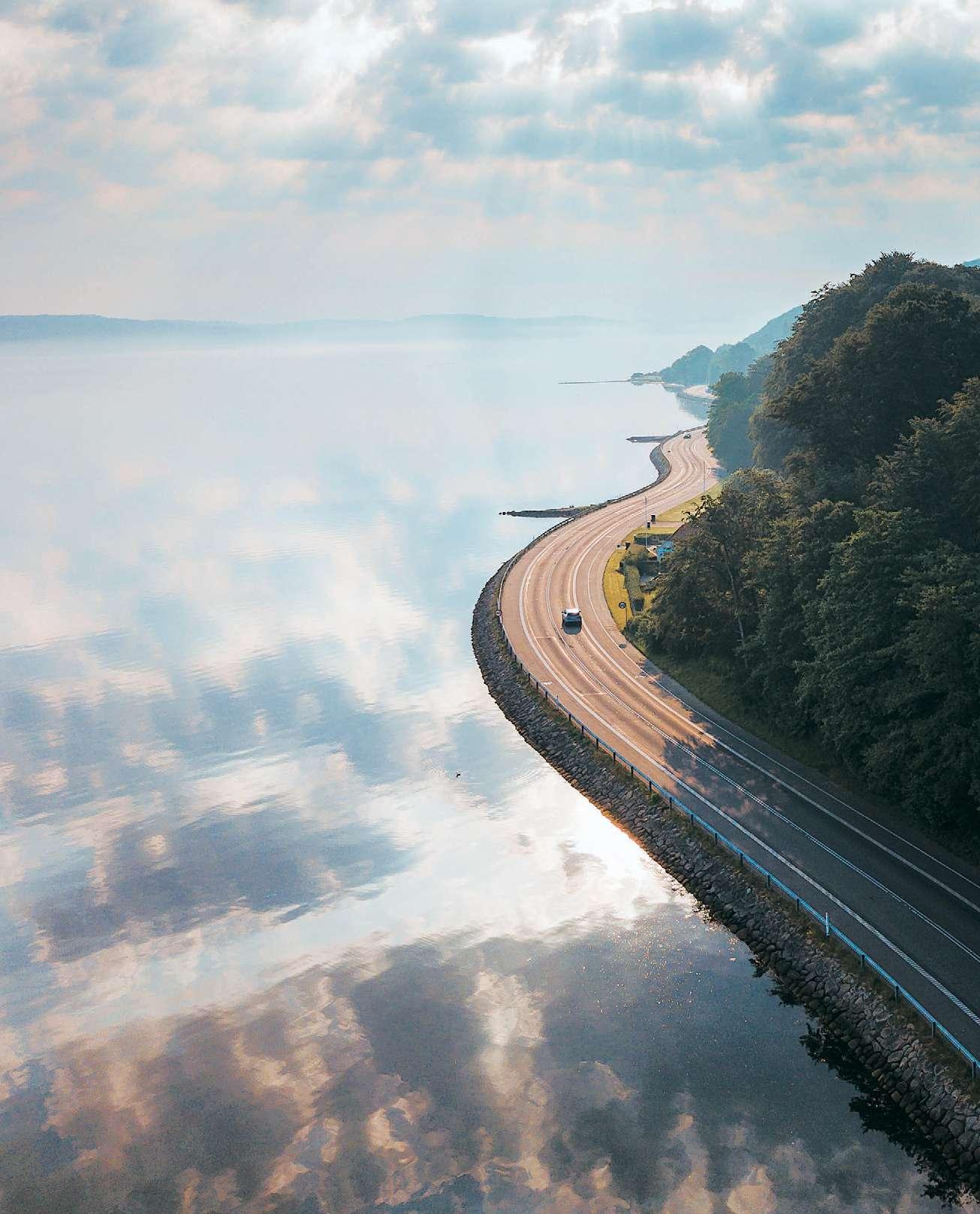
THE GREAT NORTH BY BIKE FROM COPENHAGEN FOOD LABS TO SMØRREBRØD AND OYSTERS WITH A VIEW OF THE FJORDS
Denmark proves to be a welcoming and pleasant country throughout the year, yes, even during the cold winter, but in summer it is as if the natural light reactivates the senses of a hospitable people and the soulful beauty of the Viking north. There are several ways to discover a place, each has its own, but the widespread sustainability that characterises Denmark should not be underestimated: so get on a bicycle and discover it on two wheels. And with the many flavours of the Nordic cuisine
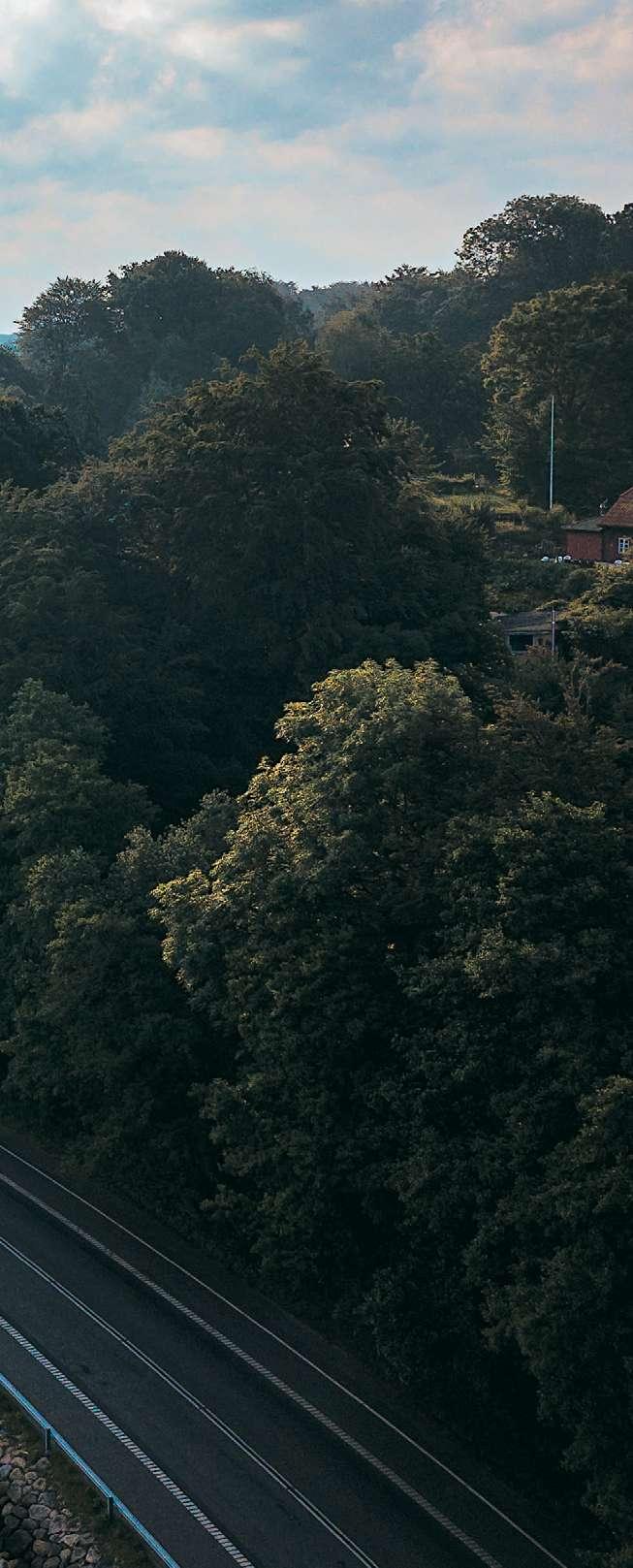 words by Giovanni Angelucci – infographics by Alessandro Naldi
words by Giovanni Angelucci – infographics by Alessandro Naldi
With its 12,000 ki lometres of cycle paths, Denmark is the most bikefriendly nation in Europe. During the first three days of July it will host the Grand Départ of the most prestigious cycling race in the world: the Tour de France will pass through some of the Danish cities most rich in history, beautiful landscapes and breathtaking architecture. We have cycled on part of this path with a differ ent objective than the finish line, and that is to find the most valid gastro nomic stops for true sport and epicu rean lifestyle-lovers.
COPENAGHEN
CAPITAL OF CYCLING
Starting from Copenhagen: not only the first city in the country, but also
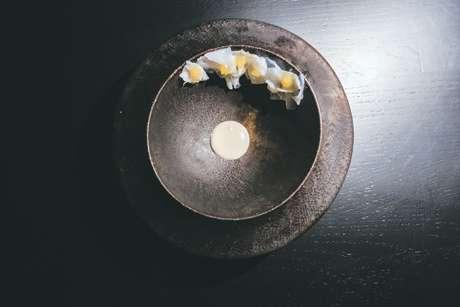
the world capital of cycling in 2019. The most bicycle-friendly city in the world, a title it has held since 2015, Co penhagen is the initial starting point, where views include the magnificent Castle of Amalienborg, the Little Mer maid, public parks, glimpses of the promenade and the crowded canals, but the senses expand with the nu merous venues in which to properly fuel up for the long ride ahead. A tasty hamburger? Go to Popl, created by the team at Noma, the place where even the vegetarian patty is delicious. After the success of the Noma burger, René Redzepi decided to transform the ex periment into a permanent project by opening Popl (from the Latin "populus" to indicate the community of people but also poplar wood, characterising the approach and respect for Nature), a restaurant in an iconic corner of the

city near the water, in the Christian shavn neighbourhood. A simple and tasty menu based on Danish organic beef burgers, but also vegetarian ones made with quinoa. Illustrating the of fer is the young and well-trained team also made up of Italians, who work in many of the restaurants in Copen hagen. And speaking of Italians, the couple Valerio Serino and Lucia De Luca propose their idea of sustainable and zero-waste menu in the valid Tèr ra restaurant: zero food waste, a green star in the Michelin guide and the aim of inspiring people not to waste food: «We aim for a "no-label" cuisine where our tradition is the basis for innovation while creating the experience that encourages awareness and respect to maximise recy cling.» The intent resides in a few tables: a small restaurant whose room is man aged with care by Lucia with Valerio's

1 3 2 JULY-AUGUST 2022 90 GAMBERO ROSSO STORIES
cuisine that offers dishes such as shiso leaf, homemade cheese and Nordic trout eggs, squid lard, candied lemon and almond, scallop coral, horseradish and oyster leaf; or celeriac in two con sistencies with mussels in emulsion. A place where guests not only feel good (in several ways) but that inspires with the courage of two youngsters who, despite difficulties, continue to move forward stubbornly and in a conscious way.
THE TRADITION OF THE GREAT NORTH
If you are craving hyper tradition, then the ideal stop is Kronborg, for morn ing brunch or for a snack at any time of day: located in the city centre, start the day with smørrebrød, rye bread sandwich served with curried herring, hard-boiled eggs, onions and capers, smoked eel with scrambled eggs or Danish meatballs with red cabbage and høost (very aged local cheese). Wel

coming patrons is a smiling Walther Griesé who will be happy to illustrate his most authentic Denmark by serv ing you typical aquavit snaps. Another restaurant in the city, Lumskebugten, features profound typicality, albeit in a different way, where guests are wel comed by 100% Danish Erwin Lauterbach: in 1854 the place was a tavern in the bay in front of the old customs house of Frederiksstaden from where ships and sailors left and returned after travelling around the world. A lot of water has passed in those parts (and how many stories!), the place has certainly changed but still manages to retain that genuine air of bygone days, even in the kitchen, with vegetable tar tare with cream of red onions, lumpfish eggs and slightly salted donkey fish, as well as with a large feast of oysters. But you know, you can't go to Copenhagen without (trying to) book a table at one of the highly acclaimed restaurants of the moment.
A UNIQUE EXPERIENCE BETWEEN OCEAN AND DEER
My favourite area to enjoy cycling is just 15 minutes by train from Co penhagen. It's called Klampenborg and located on the ocean, with the most beautiful beaches, surrounded by the historical ar chitecture of Arne Jacobsen. Behind the station is the fantas tic Dyrehaven park; it was built by the King in 1669 and is home to more than 2,000 deer enjoy ing the grass near the trails leading to the castle in central Dyrehaven. From here you can also have a spectacular view over Sweden. The area is full of small cafès with excellent cof fee, cakes and sandwiches. In mine, called Capito, you can enjoy a delicious glass of Italian wine and if you are looking for a proper lunch there are two good restaurants located near by, Den Gule Cottage and Den Røde Cottage. The more trained and willing can get here by ped alling from Copenhagen but if you arrive in this green oasis by train, in the Café Parforce near the train station you can also rent different types of bicycles, according to your needs. It is a part of Denmark much loved by us Danes and perfect for cy cling. According to the owner of the largest amateur women's cycling team "Charlie Cycling. "

– Rikke Laursen , Cyclist cafe Capito

4
JULY-AUGUST 2022 91 GAMBERO ROSSO TRIP TO DENMARK WITH GAMBERO ROSSO CHANNEL
7
1. The Bicycle Snake, iconic cycle bridge in Copenhagen, European two-wheel capital (photo by Daniel Rasmussen)
2. Popl's hamburger, located in the Danish capital (photo by Giuseppe Liverino)
3. A dish from the Tèrra restaurant by Italian couple Valerio Serino and Lucia De Luca
4. Oysters at Lumskebugten restaurant
5. Noma. From René Redzepi's Ocean menu: the Mussel Eye dish (photo by Ditte Isager)

6. Noma. From the Ocean menu: Quince amazake oyster dish (photo by Ditte Isager)
7. Noma. From the Ocean menu: the Seasnail skewer dish (photo by Ditte Isager)
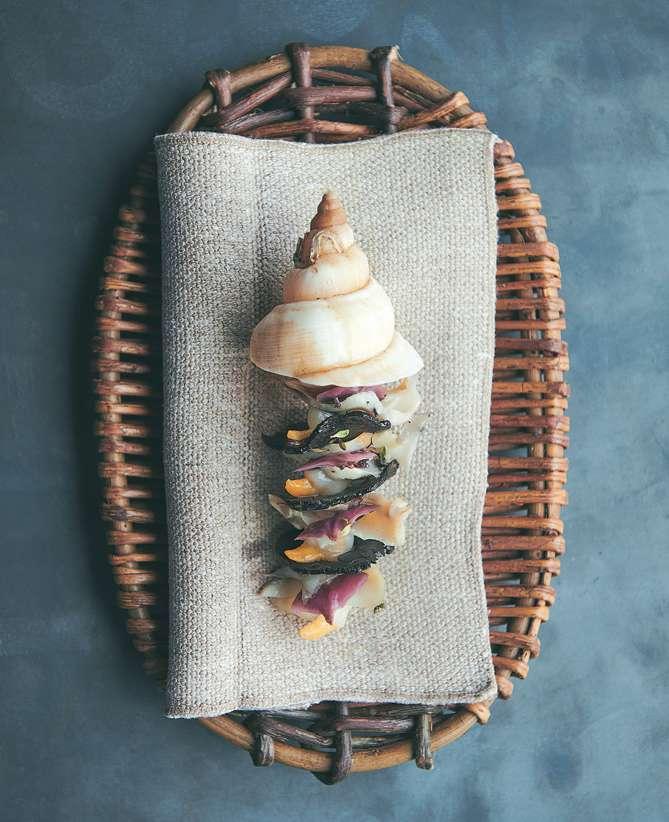
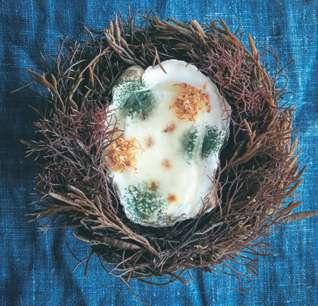
In the opening, a suggestive image of the Vejle fjord (photo by Jakob Vingtoft)
NOMA: THE INVENTION OF NOVEL CUISINE
At Noma, the kingdom of René Redz epi moved in 2018 from the Chris tianshavn district to Refshalevej, guests see everything and everything separates (see the Gambero Rosso n.318 July 2018 issue). Welcome to the "Ocean Season" of one of the most famous restaurants in the world where redundancy becomes valuable and the essential is more than vis ible to the eye, assimilable and dar ing. The menu at time of writing is a celebration of the best the ocean has to offer with the flavours of a sea one never thought could exist. A ferment of ideas and innovation, far-sighted and ingenious, chef Redzepi has cre ated something unique with his first restaurant in the city. It was 2004 and the chef was starting to serve strange
dishes that he had created from scratch and that did not resemble any other gastronomic proposal around the world, created moreover in a country without a deep gastronomic culture where he was the one invent ing his own. He referred to his ances tors, thus proposing leaves, mosses, ants of which he used formic acid in the absence of fragrant Italian lem ons. And in doing so, he transformed Copenhagen from a culinary waste land to one of the world's capitals of flavour and gusto. The "new" Noma (in a small urban farm) offers differ ent menus based on the time of year: the tale of the sea until 4 June and then, from 21 June to 1 October, the Summer Season will take place. Awe will always be the same, it is Noma we are talking about afterall: research, study, faith.
JULY-AUGUST 2022 92 GAMBERO ROSSO
6 5
COPENAGHEN


Restaurants
Noma Refshalevej 96 +45(0)32963297 – noma dk alchemist Refshalevej 173c +45(0)31716161 –alchemist dk tèrra Ryesgade 65 +45(0)28596417 – teRRaRestauRant dk GeraNium PeR henRik lings allé 4 +45 6996 0020 – geRanium dk PoPl BurGer stRandgade 108 +45 3296 3292 – PoPlbuRgeR com
ProPaGaNda vesteR faRimagsgade 2 +45(0)33382200 PRoPagandakitchen dk lumskeBuGteN esPlanaden 21 +45(0)33156029 – lumskebugten dk Cocktail bar tata toRdenskjoldsgade 15 +45(0)46400040 – hotelsandeRs com ruBy nybRogade 10 +45(0)33931203 – Rby dk
Hotel



25hours hotel iNdre By PilestRæde 65 +45(0)70770707 – 25houRs hotels com the audo ÅRhusgade 130 +45(0)31263080 – theaudo com














JULY-AUGUST 2022 93 GAMBERO ROSSO TRIP TO DENMARK WITH GAMBERO ROSSO CHANNEL 600 m
Fortezza
Strandvej
Christiania
Holmen
Osservatorio
Tivoli
Cattedrale di Nostra Signora
Fælledparken
Noma
Tèrra
TATA
Geranium
Popl Burger
Ristoranti
Lumskebugten
Propaganda
Alchemist Ruby Cocktail bar
25hours Hotel Indre By
The Audo Hotel
COPENAGHEN
DENMARK Hotels
BeNNiksGaard hotel gRÅsten - sejRsvej 101 + 45(0)74650949 - benniksgaaRdhotel dk
First hotel GraNd odense – jeRnbanegade 18 +45(0)66117171 – fiRsthotels dk
























































hotel søNderBorG straNd søndeRboRg – stRandvej 1 +45 70 84 83 48 –sondeRboRgstRand dk
aarøsuNd Badehotel ÅRøsund – ved fæRgegÅRden 1 +45(0)26427788 – aaRoesundbadehotel dk
Gram slot gRam – slotsvej 54 +45(0)74820040 – gRamslot dk
Brummers Gård hadeRslev – aaRø 145 +45 51 25 31 12 –bRummeRsgaaRd dk
Restaurants
BiNd kRusÅ – fjoRdvejen 120 +45 7467 8822 – RestauRantbind dk
storms Pakhus street Food odense – leRchesgade 4 +45(0)31319180 – stoRmsPakhus dk
deiliG odense c – h c andeRsen haven 3 +45(0)28306599 – meyeRs dk
FloreNtz caFe & Brasserie Roskilde – algade 13 +45 46 152 152 – cafefloRentz dk
Museums/Attractions
marsk tower skæRbæk – hjemstedvej 60 +45(0)72186780 – maRskcamP dk
h. c. aNderseN's house odense c – h c andeRsen haven 1 +45(0)65514601 – hcandeRsenshus dk
Foodshops
årø ViNGård hadeRslev – aaRø 210 +45 29 71 70 25 – aaRo vin dk
hersleV Brewery heRslev – kattingevej 16 +45(0)46401807 – heRslevbRyghus dk Friis holm chocolate Roskilde – kattingevej 18 +45(0)53582814 – fRiisholmchokolade dk
JULY-AUGUST 2022 94
ROSSO STORIES
GAMBERO
50 km COPENAGHEN Odense Sønderborg Gråsten Skærbæk Gram Kruså Herslev Roskilde Aarhus Randers Amburgo Malmö Göteborg Brema Restaurants Hotels Bind Benniksgaard Hotel Hotel Sønderborg Strand Årø Vingård Aarøsund Badehotel Brummers Gård Gram Slot Storms Pakhus street food Deilig Florentz Cafe & Brasserie Marsk Tower First Hotel Grand H. C. Andersen's House Herslev Brewer y Friis Holm Chocolate Museums/Attractions Food shops ÅrøsundHaderslev
DENMARK
ALCHEMIST: WHERE DINNER IS MEASURED IN HOURS

And then there is Alchemist, Rasmus Munk's holistic restaurant, the decid edly unconventional "place to be" in which the entire dining experience is made up of games and augmented re alities, new flavours and never tried before experiences. The restaurant is located in the industrial district of the city, Refshaleøen, in full expansion, already known and revalued by the dy namic street food market Reffen - the largest in Northern Europe, complete with beaches, an artisan market and a concert area - and by the urban area dedicated to start-up and innovation. Great novelty in recent years, Alche mist offers an experience never expe rienced before: dinner can vary from three to five hours (depending on your pace) and about fifty "impressions" will be offered as the cook defines them. These are dishes, but also changing lights, projections, music, sounds and holograms. Diners will find themselves
in the planetary dome that forms the main hall in the heart of the restau rant, floating jellyfish, northern lights and Japanese cherry trees in bloom will be their roof and their sky, during the experience. «One of the central as pects of my thinking is eco-sustainability - explains Rasmus - I think it's one of our world problems, we should talk about it, create awareness. Many of the impres sions on the menu focus on this, they are not only related to food but also to the en vironment and plastic.»

HAIDAN: GABRIELE RIZZO BETWEEN CHINA AND NORTHERN EUROPE
Then there is a brand new opening in the city worth investigating, which we previewed, the new restaurant of young Sicilian chef Gabriele Rizzo who in the Audo design hotel offers an inti mate and soft location that hosts about thirty people between round tables and a shared Swedish pine table for twelve guests. It is called Haidan and is the
FROM BEER AND POTATOES TO GREAT CURIOSITY FOR WINE
The country that only a few decades ago grew up with potatoes, pork, gravy and prob ably beer, now cer tainly deserves to be looked at for both very classic and very anarchic wine trends. This not only in the urban buzz of Copenha gen, but also in the smaller islands and mainland Jylland. Denmark has an impressive wine consumption and, looking at the market, it is inter esting to see the younger generation (20+) that seems to have inspired that of their parents, a generation that came from more conservative per spectives, but who are now hipsters together with their children. Interest, curiosity and even knowledge of mi nor appellations are mainly the pre rogative of young people, whether they are customers of wine shops or foreigners who have set a trend in the Danish wine scene, swinging the "boat" of conventional wine towards the unconventional. The scene re served for natural wines is huge even if it does not seem to have had enough of the classic wines of Bur gundy, Langhe, Brunello, Loire or the Rieslings of Alsace. Denmark is a very competitive market for wine, but also with a consumer behaviour based on curiosity and courage. I believe that the lively and uncontrollable capital Copenhagen, also known as "The Naples of Scandinavia," is truly a plat form to show, promote - and drinkwines from more unknown regions, produced with grapes other than French ones. Italian wines, however, are my best bet everywhere.
– Nana Wad, wine journalist
JULY-AUGUST 2022 95 GAMBERO ROSSO
8
TRIP TO DENMARK WITH GAMBERO ROSSO CHANNEL
THE NEW MIXOLOGY SCENE BETWEEN BARS AND DISTILLERIES
The Danish national scene is always exci ting, projects being developed seem endless and so are the possibilities. In terms of mixology, I think the most interesting things come not from the world of bars, but from distilleries and projects outside the bars such as Copenha gen Distillery, Nordic Ethanol, Empiri cal Spirits and EtOH Spirits which are some of the most definitive expres sions of the Danish scene. Surprising that some of the most exploratory realities come from the world of cui sine, figures who have incredibly in fluenced the culinary world such as Lars Williams and Mark Emil Her mansen, working under the banner of the tasting revolution on a liquid level with interesting results. In the bar world I think the smaller cities (Aarhus and Odense) express more passion for the world of drinking with bars like Gedulgt and Force Major in Aarhus and Visit in Odense. In Co penhagen, however, the situation is somewhat slow. Covid has accen tuated the main problem of our indu stry: the interest in this profession. There are new realities in the capital that have opened in the last year: Pulp and Bird, respectively opened by pillars Jonas B. Andersen and Spa niard Bernabeu, and Peter Altenburg. The cocktail bars to visit in Copenha gen certainly are Gensyn Frede riksberg, Lidkoeb, Nimb Bar, K Bar, Strøm, Barking Dog and Paloma. Don't miss Duck & Cover and a little gem that has just reopened: Atze Peng. The last place I will talk about is my Tata, an atypical bar for being lo cated in a boutique hotel. It does feel like part of the hotel because it has created its own identity opposite to the trend of the Scandinavian hotel cocktail bars, always distant from the customer and with a certain coldness in the service. Tata has a warm ap proach and an almost neighbourho od bar attitude trying to connect with new people and regulars in or der to create a welcoming and plea sant environment..
– Harry Leonard Bell, bar manager of Tata at Hotel Sanderss

9


synthesis of Rizzo's travels and experi ences with a predominance of Nordic cuisine influenced by Chinese food cul ture. No redundancy, but a high level mixture of cultures for a proposal rich in technique and sentiment as typical of the Sicilian chef: a 15-course menu divided between the two countries, from Jutland lamb marinated with ca pers from Pantelleria in a Jerusalem ar tichoke crust and porcini mushrooms; scampi with 'nduja and Okinawa miso; Chinese mushrooms with pistachio emulsion; or zander seasoned with horseradish and lime, up to "the bat man lavarello" which, however, you will have to discover for yourself...
TOWARD THE FJORD REGION
DHeading in the direction of Roskilde, towards the second stage of the Tour de France in the Sealand region, reachable
via the new cycle path that connects it to Copenhagen and which continues towards the fjords up to Nyborg on the island of Funen ("the garden of Den mark"). The Stændertorvet Square, the Roskilde Cathedral, a UNESCO heritage site, and up to the port where you can see some of the Viking ships rebuilt by the Viking Ship Museum are all captureworthy, even if only with your eyes. No protein bars, but the best chocolate in circulation: that of award-winning FriisHolm with only sugar, no soy lecithin or vanilla, without anything that alters the innate taste of cacao chosen by former chef Mikkel, careful in the selection of the best beans from Nicaragua and Guatemala, which has transparency and organoleptic value as the guiding crite ria. In the shed next door, in this bucolic and green atmosphere, there is also the valuable Herslev Brewery, created
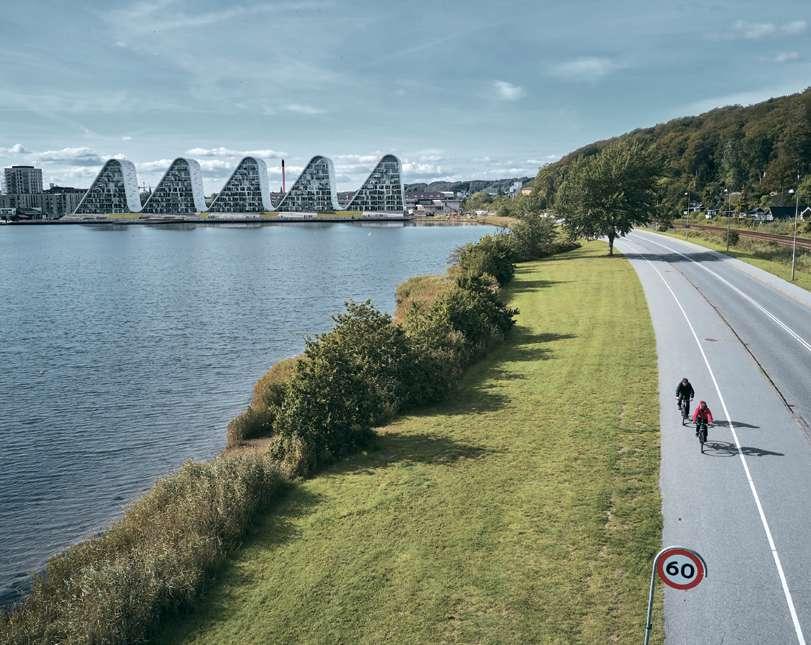
JULY-AUGUST 2022 96 GAMBERO ROSSO STORIES
8. Three iconic Alchemist dishes: Andy Warhol (the banana), Tongue Kiss (the tongue) and Burnout Chicken (photo by Søren Gammelmark)
9. Cyclists along the fjord in Vejle; in the background, The Wave, a residential building designed by Henning Larsen (photo by Kenneth Stjernegaard)
10. Herslev Brewery
11. Jakob Lei from the Årø Vingård winery in Haderslev
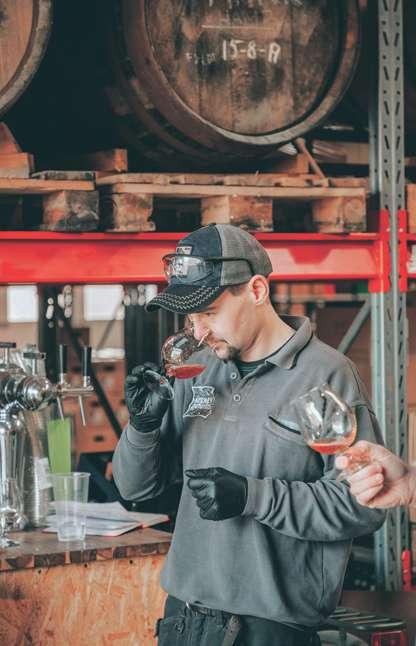


12. Mikkel Friis-Holm of Roskilde chocolate by the same name

WINE AND SPIRITS ON AARØ ISLAND
To end the trip on a high note, you can plan a stop in a wild place, the island of Aarø, where the Årø Winery has been operating since 2004, producing wine, gin and cider. Here Jakob Lei, after training in San Francisco, decided to go back home and create his own labels of fresh white Villaris; a red made from the blend of Leon Millet, Rondo and Regent, and also an interesting classic method sparkling wine. The cellar with annexed artisan distillery is located a few hundred yards from the small ferry port that will take you back to the Danish "continent" in ten min utes, and where you can stay overnight in the an cient Aarøsund Badehotel , whose dinner amid paintings, large windows and crystals, will prove even more that it has never been so satisfying to pedal and dedicate oneself to the pleasures of the table.
11 10 12
JULY-AUGUST 2022 97 GAMBERO ROSSO TRIP TO DENMARK WITH GAMBERO ROSSO CHANNEL
in 2004 when farmer Tore Jørgensen started organic beer brewing produc tion on his farm. The biodiversity of the landscape is masterfully bottled in rose hip and birch beers, wheat beers with asparagus, spontaneously fermented beers and even acid beers aged in wood. Beer is rich in minerals and is perfect for rehydrating after a bike ride, and if wholesome and well done it is even more perfect!
IN THE CITY OF HANS CHRISTIAN ANDERSEN
The race continues across the Great Belt Bridge and arrives in Nyborg, but for the more daring it does not end here because only half an hour's drive away is the hometown of Hans Christian Ander sen, Odense, waiting for them. It's worth the detour not only for the beautiful new museum that celebrates the writer's
works but also for enjoying lunch at De ilig, a café in the heart of the interactive H C Andersens Hus. What's more, for those who decide to stay overnight in Denmark's third city, Storms Pakhus Street Food is the right attraction for gourmands, open every evening in an old industrial warehouse. There is every thing and anything: in addition to stalls selling beer, wine and cocktails, you can try steamed Greek pita, chicken in but ter and spiced samosas, wood-fired piz zas, delicious chips fried in duck fat, succulent burgers, tacos and Tandoori Chicken.
LAST LEG TOWARDS SØNDERBORG
The third leg includes the ancient hiking trails where nature reigns, from the chal lenging hills of Vejle to the historic rune stones of Jelling, up to Christiansfeld,


Unesco heritage, before the final sprint to the finish in Sønderborg with the bridge of King Christian X specially cov ered for the occasion in yellow. Within the last stage of the tour, venues and un missable dishes for every self-respecting cycle-gastronomist are manifold. Note worthy is the Bind restaurant in the ex pert hands of the French chef Christian Bind and his wife Pia: «I was born in the kitchen with my mother, in Alsace - says the chef - My father took care of the vines, the vegetable garden and raised chickens, rab bits and pigeons.» Having moved from the kitchens of the Haeberlin brothers' Auberge d'ill, then to the Charles Bar rier in Tours, he then arrived in Den mark, first at Falsled Kro in Funen, then in Flensburg where he opened his Chez Paul and since 2008 in the Sønderhav restaurant in a 1900 villa rich in atmo sphere and romantic views of the Flens
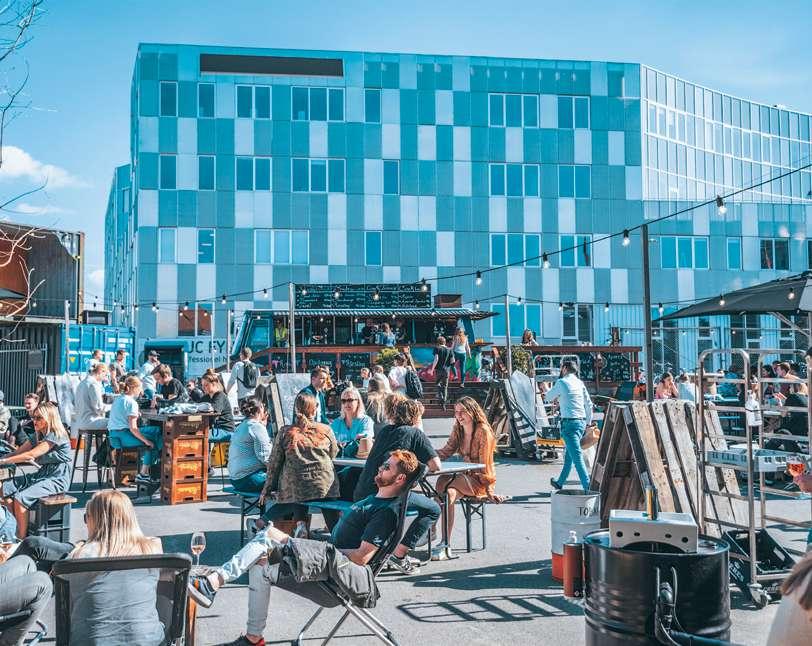
15 14 13 JULY-AUGUST 2022 98 GAMBERO ROSSO STORIES
TRIP
GAMBERO ROSSO CHANNEL
burg fjord: French school and touch but with the finest Danish ingredients.
THE BEST SMØRREBRØD IN THE LAND OF OYSTERS
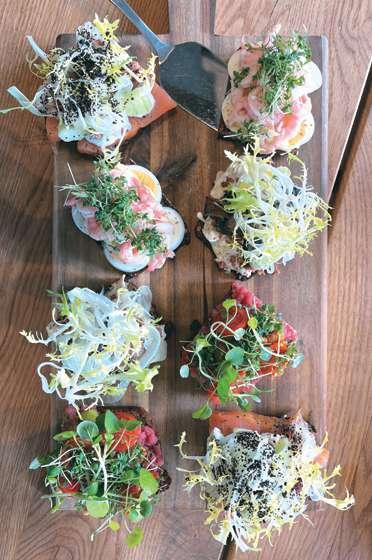
16 18
15. A dish from the Bind restaurant in Kruså
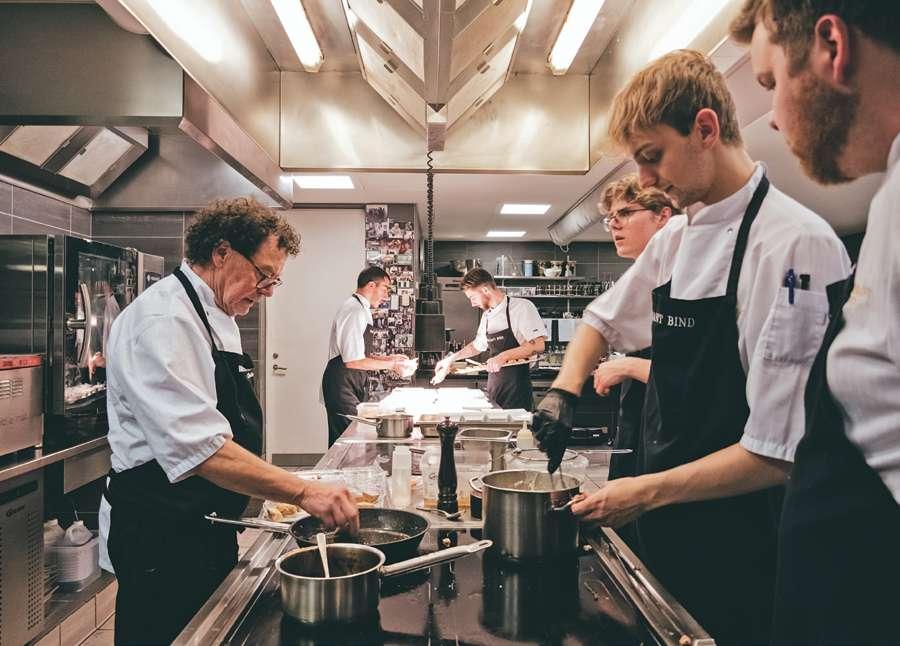
16. Christian Bind and the brigade at work in the restaurant that bears the name of the chef
17. Steffen Snitgaard at Marsk Restaurant: in hand he holds the solæg, the typical pickled eggs
18. Marsk Restaurant in Skærbæk: smørrebrød

A must visit is also the recent restaurant at the foot of the new Tower Marsk where guests can enjoy traditional solæg, a typical dish of pickled eggs served by Steffen Snitgaard, and some of the best smørrebrød around. Located in the land of oysters, the fleshy mol lusks have hints of hazelnut from the Wadden Sea National Park in Jutland. Not far away, in the radiant Sønderjyl land region, those with a sweet tooth can also take part in the Sønderjysk Kaf febord, a traditional festival born during the German occupation where travellers can taste as many as 21 types of cake, now offered in different venues such as the Gram Castle. JULY-AUGUST 2022 99 GAMBERO ROSSO
17 TO DENMARK WITH
13. Storms Pakhus in Odense (photo by Jannik Meier Sørensen)
14. Street food at Storms Pakhus (photo by Noa Sophie Stoustrup)
CHIARA PAVAN & FRANCESCO BRUTTO by Clara
– photos by Valeria Necchio BORN IN Chiara: Verona Francesco: Treviso AGE C: 37 F: 34 RESIDENT IN C: Verona F: Treviso KITCHEN BRIGADE Nicola Plebani Eva Bottosso Samuele Nepitella Matteo Quaggiotto Gianpietro Pezzoni Aurora Binato IN THE DINING ROOM Gabriele Iacobucci SOMMELIER Francesco Tamaro BELOVED INGREDIENT C: Artichoke F: Butter LEAST LOVED INGREDIENT C: Cockles F: None THE DISH OF A LIFETIME C: Chilled carbonara soup by Vissani according to Massimo Bottura F: White rice, cypress version by Piergiorgio Parini GRAND MAESTRO WORSHIPPED C: none F: Piergiorgio Parini MOST ESTEEMED COLLEAGUE C: Alessandra Del Favero and Oliver Piras F: Oliver Piras OUR CUISINE Attentive to the environment and the expression of a place, the Venice lagoon FAVOURITE RESTAURANT ABROAD C: Restaurant Passerini in Paris F: Mugaritz in Errenteria Gipuzkoa (Spain) ONE WINE ABOVE ALL OTHERS C: Pinot Grigio 2007 by Gravner F: Tresor d’Anglepierre 2005 by Jean Marc Brignot LATEST ALBUM DOWNLOADED C: Magica Musica by Venerus F: Le Quattro Stagioni by Antonio Vivaldi LATEST BOOK READ C: Chi possiede i frutti della terra by Fabio Ciconte F: Tutto Zanardi by Andrea Pazienza DISHES: Canaletto Castraure, marinated yolk, artichoke coffee and black garlic Ravioli with mugwort butter, pine nuts and bitter herbs Vegan tart with rosemary and elderberry HAD WE NOT BEEN CHEFS... C: Teacher F: Writer OWNERS PARTNERS EMPLOYEES SEATS 24 PREVIOUSLY EMPLOYED AT C: Da Caino in Montemerano (GR) F: Undicesimo Vineriain Treviso RESTAURANT NAME Venissa RESTAURANT CONTACTS: Venice Isola di Mazzorbo fondamenta Santa Caterina, 3 041 5272281 - venissa.it JULY-AUGUST 2022 100 GAMBERO ROSSO RECIPES
Barra
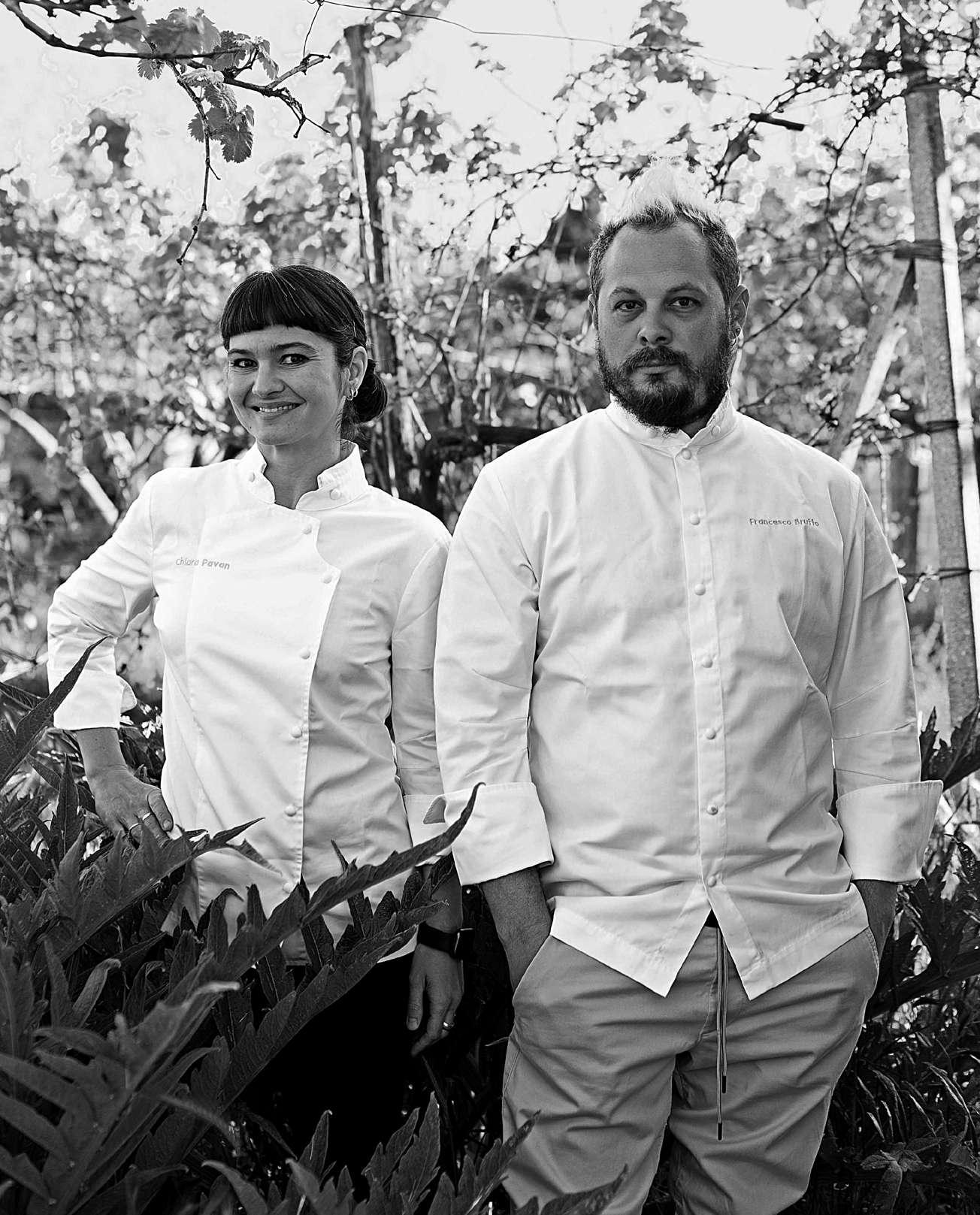
JULY-AUGUST 2022 101 GAMBERO ROSSO
CHIARA PAVAN & FRANCESCO BRUTTO - VENISSA
Canaletto
ingredients for 4
2 kg blue crab
1 kg mussels (to obtain 200 g of cream)
8 oysters
60 g “00” flour
40 g eggs 40 g peanut oil 20 g fresh milk
2 carrots
1 onion extra virgin olive oil kudzu (vegetable thickener) laver (aka sea lettuce) alga dulse sea purslane glasswort
For the crab cream, cut the carrots and onion into mirepoix, brown them in a pan with extra virgin olive oil, then add the crabs and sear. Cover with cold water and cook for 1 hour. Drain the broth through a fine mesh sieve, reduce it to a syrupy consistency, then thicken it with kudzu (proportions: 100 g of broth, 10 of kudzu) and finally let it cool.
For the mussel sponge, remove the beard filament, place them in a pan with a lid and steam them until they open, then remove each meat from the shell and filter the water left in the pan.
With a mixer, blend the mussels to gether with the water to obtain a pu ree. Using the mixer again, combine 200 g of the puree with the eggs, flour, peanut oil and fresh milk. Blend, then place the mixture in a syphon with two charges, syphon the contents into a perforated plastic cup and cook in the microwave for 45 seconds.
Open the oysters and cut them into quarters, peel the herbs and all sea weed.
Spread a layer of crab cream on each plate, place the oysters, lagoon herbs and seaweed and pieces of mussel sponge.
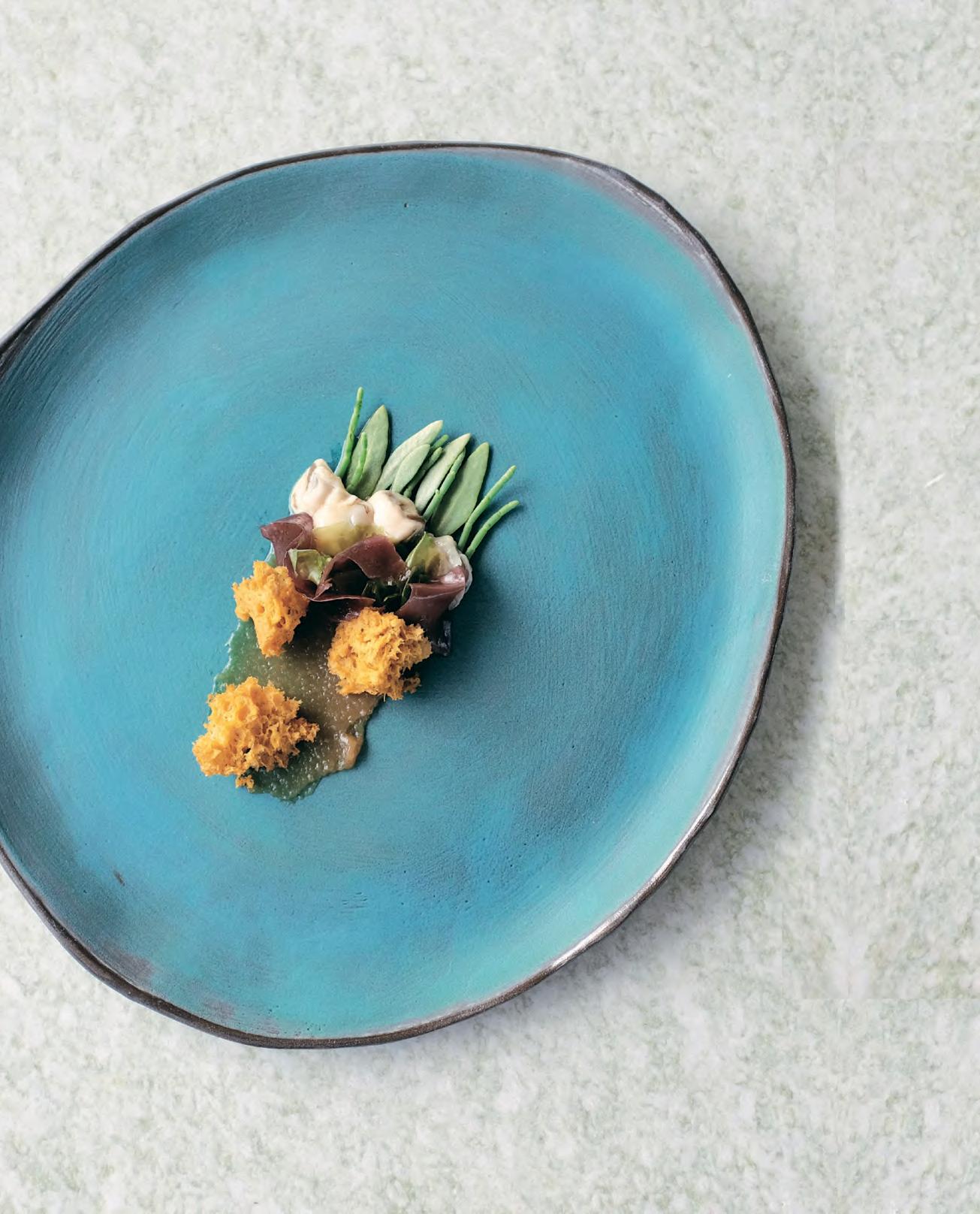
JULY-AUGUST 2022 102
ROSSO RECIPES
GAMBERO
Castraure, marinated yolk, artichoke coffee and black garlic
ingredients for 4
5 castraure (violet artichokes from the island of Sant’Erasmo)
2 regular artichokes
500 g salt
500 g sugar
100 ml extra virgin olive oil
100 g soy milk
5 yolks
2 black garlic bulbs
1 lemon grapeseed oil butter
savoury plant
Mix the sugar with the salt and place half of the mixture in a pan, arrange the egg yolks spaced from each other and cover them completely with the rest of the mixture. Leave to marinate for 5 days, then drain the egg yolks and rinse with water. Blend add ing a little water and emulsify with grape seed oil. Clean the castraure by removing outer leaves, peel the stems, cut the tips and soak in water and lem on to avoid oxidation. Dry the scraps in the oven at 180°C for 20 minutes.
Preheat the steam oven and cook 4 halved castraure for 10 minutes, cool immediately.
Blend the dried wastes with water. Bring to a boil and leave to infuse for 1 hour. Drain through a fine mesh chinois, reduce the obtained liquid (coffee) to the desired consistency and taste.
Chop the 2 artichokes into pieces and toss in a saucepan, adding the olive oil. Cook very slowly for 3 hours. Blend everything and let save the ar tichoke oil.
Peel the black garlic and cook it in soy milk for 25 minutes. Purée everything with an immersion blender and emulsify with grape seed oil.
Brown the castraure in butter on the cut side, flip, brown the other side and lightly salt. Finely chop the remaining raw castraure and season with salt and the artichoke oil.
Place the artichokes on the plate, arrange the yolk and black garlic mayonnaise in dots, mix the coffee with the artichoke oil and pour onto the plate, ar range the raw castraure in a pile. Finally garnish with fresh savoury.

JULY-AUGUST 2022 103
GAMBERO ROSSO
CHIARA PAVAN & FRANCESCO BRUTTO - VENISSA
Ravioli with mugwort butter, pine nuts and bitter herbs
INGREDIENTS FOR 4
For the pasta
500 g flour
4 eggs
75 g egg yolks
15 g extra virgin olive oil 15 g spinach flour 10 g salt
For the filling
500 g butter 250 g mugwort 15 g salt
For the pine nut shio koji
500 g pine nuts 200 g koji 15 g salt
To complete Curly lettuce chicory
Bitter herbs Balsamic herbs flowers Fresh pine nuts extra virgin olive oil salt
Soak the pine nuts in water overnight, then blend them with part of their vegetable water to create a cream. Add the koji and salt, mix well, place in an airtight jar and let it brew for 2 days, then pass through the fine-mesh chinois. Prepare the fresh pasta by mixing the two flours, add extra virgin olive oil and salt. Add the eggs, egg yolks and knead, then leave to rest in the refrigerator for 3 hours.
Blanch 150 g of mugwort in boiling water for 2 minutes, cool in iced water, drain and wring out excess liquid. Cut the butter into cubes. Using a thermomix, blend the blanched mugwort. Set the temperature to 40°C, add the butter a little at a time and blend for about 8 minutes. Add the remaining 100 g of raw mugwort, previously chopped, and continue to blend for 3-4 minutes. Drain through a fine mesh chinois into a boule. Prepare a second bowl with water and ice, place the bowl with the butter in the latter. Whip the butter with a whisk until it solidifies. Place in a pastry bag.
Roll out the fresh pasta, slice with a 7 cm diameter pastry cut ter. Pipe the mugwort filling and clasp in the shape of ravioli. Cook the ravioli in boiling water, drain and stir in a little butter, then season with salt.
Season the salads, previously washed and dried, with extra vir gin olive oil and salt.
Place the pine nut shio koji and the salad at the base of each plate. Arrange the ravioli, complete with squirts of shio koji. Garnish with fresh pine nuts, flowers and herbs.

JULY-AUGUST 2022 104
ROSSO RECIPES
GAMBERO
Vegan tart with rosemary and elderberry

INGREDIENTS FOR 4
For the vegan shortcrust 375 g 00 flour
150 g confectioner’s sugar 105 g chestnut flour 100 g water 75 g almond flour 65 g peanut oil 4,5 g vinegar 3 g yeast 3 g salt
For the walnut and rosemary frangipane 250 g margarine 250 g sugar 250 g walnuts 150 g eggs 50 g inverted sugar 30 g cornstarch 20 g rum
Fresh rosemary, blended
For the meringue
250 g sugar 125 g egg whites 50 g water elderflower powder
To complete Vanilla gelato
For the vegan shortcrust pastry, pour all the powders into a bowl and mix. Combine all the liquids in the mixer, dissolve the salt, then add the powders all at once. Operate the stand mixer and knead with the paddle hook to obtain pastry crust consistency. Cover with plastic wrap and refrigerate for 3 hours. For the frangipane, blend the walnuts with the cornstarch. Whip the margarine with the sugar in the mixer, add the eggs one at a time, add the invert sugar, the powders, the rum and continue kneading. Finally add the rosemary. For the meringue, put the egg whites in the stand mixer and start whipping. Separately in a saucepan, combine the sug ar and water and bring to 121°C. Before the egg whites are whipped, add the sugar slowly. Whip until the egg whites cool. Add the elderberry powder and mix with the help of a rubber spatula.
Grease 4 single-portion 10 cm ramekins. Roll out the pastry very thin in each one, first place a disk for the base, cut a strip and arrange it to create the edge, then trim the excess. Fill each tartlet with frangipane, then bake in a convection oven, previously heated to 180°C, for 35-40 minutes. Remove the tartlets, cool them slightly. Put the meringue in a pastry bag and pipe to decorate each tartlet. Flame with a torch. Serve warm with vanilla gelato.
JULY-AUGUST 2022 105
GAMBERO ROSSO
CHIARA PAVAN & FRANCESCO BRUTTO - VENISSA
WORLD WINES
Foreign labels tasted, explained and evaluated by the Gambero Rosso wine tasters
by Marco Sabellico, Gianni Fabrizio, Giuseppe Carrus, Lorenzo Ruggeri, William Pregentelli
FRANCIS COPPOLA – Diamond Collection Chardonnay ‘18
California, Stati Uniti thefamilycoppola. com euro 26.00 Distributed in Italy by Meregalli
A few years ago we had the opportunity to visit the winery of famous American director Francis Ford Coppola on his estate in Sonoma County, California. Even back then we tasted the Chardonnay from the Diamond Collection. It convinced us then as this 2018 version convinced us today: fragrant aromas of Saturn peach, medlar, lemon drop candy and white honey blend with a sweetly spicy component; the mouth is creamy but not heavy thanks to rich citrus nuances in the finish.
FRANCOIS ROUSSET-MARTIN – Terres Blanches Chardonnay ‘18
Jura, France euro 53.00 Distributed in Italy by Les Caves de Pyrene
We were simply enthralled after tasting this Chardonnay from the Jura region, the result of a very small 40-year-old vineyard on grey marl, aged in oak barrels. The nose is a marvel of mountain butter, hazelnut, oysters and shishito sensa tions. The mouth is impressive with its depth and layering of flavour, alternating peaty and salty nuances: it is fatty but also super dynamic, with a very long final savoury trail. It closes with a slender hint of marine rocks and Asian spices. Not to be missed.
LOUIS BOUILLOT – Crémant de Bourgogne Brut Rosé Perle d’Aurore


Borgogna, France louis-bouillot.com euro 19.00 Distributed in Italy by Premium Wine Selection
The drinkability of this Crémant is linear and continuous, the result of a blend of chardonnay, pinot noir and gamay, which mature for about 12 months on the lees. The scents are intense and immediate, ranging from the floral edge of violets and roses to small fragrant red fruits. The mouth is soft, progressive, with a dosage that gives roundness to the sip, but without weighing it down. The finish is quick on pleasant fruity returns.
MARGUET – Champagne Brut Nature Sapience ‘11

Champagne, France champagne-marguet. fr euro 238.00

Distributed in Italy by Les Caves de Pyrene
It is difficult to find in all of Champagne a cuvée capable of varying so much in the glass. Sapience is the result of the collaboration between some of the greatest Champagne artisans, from Benoit Marguet to Vincent Laval, from David Leclapart to Benoit Lahaye. The toasty profile is evident, halfway between peat and iodine of an Islay whiskey and a Saturday morning walk in a souk. Opening decidedly toasted, it suffers to death from fridge temperature, then horseradish, rhubarb and grain mustard. After 20 minutes it becomes even darker, licorice and hazelnut, after four hours it has changed its outfit and combines opulence and richness with a wonderful sense of balance. Enchanting.
106 GAMBERO ROSSO TOP CHARTS JULY-AUGUST 2O22
MOULIN TOUCHAIS – Coteaux du Layon ‘79
Valle della Loira, France touchais.fr euro 82.00
Distributed in Italy by Vino & Design
The balance between sweet, savoury and spicy notes of this pearl of a wine pro duced in the Loire Valley in 1979 from Chenin Blanc grapes is subtle and very nuanced. The colour is amber, but certainly still bright and luminous for a wine of its vintage. The nose offers hints of dried apricot, hazelnut, iodine and black pepper. The mouth is spicy, with toasted notes of cigar and licorice reviving a ripe, still fruity and iridescent sip. The finish with Mediterranean maquis is sublime, light and pressing.
RAMOS PINTO – RP.LBV ‘15
Valle del Douro, Portugal euro 25.00 Distributed in Italy by Sagna

Adriano Ramos Pinto founded his company in 1880. The hectares of vineyards to day are 187 and are located in the Alto Corgo and Douro Superior areas. The blend that gives life to this Late Bottled Vintage is quite classic: alongside touriga nacion al, we find touriga franca and small quantities of vinhas velhas, barroca, and sousão. The blend was developed in May 2019 and bottling took place in October. The result is a Port that displays clear sensations of ripe cherries and sour cherries that blend with aromas of coffee powder, cinnamon and cloves. Definitely fruity also in the mouth, on the palate it is endowed with a velvety tannic texture.
R&L LEGRAS – Champagne Grand Cru Cuvée Hommage


Champagne, France champagne-legras.fr euro 115.00

Distributed in Italy by Vino & Design
The homage of this selection goes to Gérard Barbier, who was the soul of the mai son. It is a wonderful Champagne from vineyards in the village of Chouilly, in the Côte des Blancs, which matures for ten years on its own lees. A multi-vintage that is appreciated on different levels. Let’s start with scents of truly captivating rich ness: mountain butter, oysters, toasted almonds and white pepper. The mouth is wide, fatty, very salty, deep, with an unforgettable finish between references of wheat, citrus fruits and a sapidity that makes it irresistible.
TARLANT – Champagne Zéro Brut Nature
Champagne, France tarlant.com euro 59.00 Distributed in Italy by Teatro del Vino
We are before one of the best quality-price ratios in all of Champagne. A cuvée (pi not noir, chardonnay and pinot meunier in equal parts) that perfectly combines freshness and pleasure, without losing in terms of complexity and tactile joy. The long ageing on the lees, almost seven years, gives a fine and infiltrating efferves cence that accompanies a vibrant acid spine, to say the least. The very dry mouth has a truly remarkable energy and electrical tension, with a long finish of fresh almonds, mint and lime. Extreme drinkability.
VALENTIN ZUSSLIN – Crémant d’Alsace Brut Zero ‘14

Alsazia, France zusslin.com euro 35.00 Distributed in Italy by Balan
For 13 generations, the Zusslin family has cultivated vineyards along the coteaux d’Orschwihr, in Alsace, following the dictates of biodynamics. This cuvée, to which no sulphites are added, is the result of an assembly of pinot auxerrois, pinot grigio and riesling that mature for 40 months on the lees. The colour is intense and concentrated, with hints of dried fruit, quince and coriander dominating the nose. The mouth is creamy, vinous, with hints of ripe pear and honey, while the finish is dry and biting, with a notable sapid boost. To be consumed not below 12 degrees C.
107 GAMBERO ROSSO WORLD WINES JULY-AUGUST 2O22
tastings by William Pregentelli and Lorenzo Ruggeri
The advanced logistic solution for Wines & Spirits


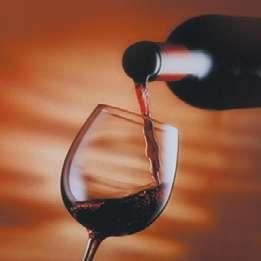
Wine & Spirits Logistic Macrosystem Solution is a logistics package designed specifically for the beverages industry. Giorgio Gori has achieved truly superlative standards in this sector in terms of expertise, partnerships, resources, organization and technology. Secure, modular transport systems, contracts with the most dependable carriers, excellent transport rates and optimum storage conditions will smooth the way for your products, from the bottling line to the consumer’s table. Easily accessible web-enabled options combined with effective monitoring and forecasting instruments can provide real time information on the entire logistics process.

www2.ggori.com
TASTING NOTES
Tre Bicchieri and Due Bicchieri Rossi are the pride of Vini d’Italia. Small productions up against prestigious best sellers, in a review that involves the best labels tasted from our experts: we share them in this new column with our tasting notes
PIEDMONT Clemente Cossetti
LOMBARDY Ferghettina
FRANCIACORTA EXTRA BRUT ERONERO ‘13
via Guardie, 1
Castelnuovo Belbo (AT) 0141 799803 cossetti.it
In 1891 Giovanni Cossetti trans formed the family farm into a wine making cellar. Today it is an all-fe male company, led by Clementina Cossetti and her sister Giulia. The main grapes present in the estate’s vineyards are barbera and moscato, with small quantities of albarossa, brachetto, chardonnay, cortese and dolcetto. Alongside the labels that come from the company’s vineyards, Cossetti offers a range of wines from the most important Piedmontese ap pellations.
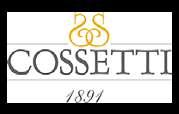
BARBERA D’ASTI SUP. LA VIGNA VECCHIA ‘18


The Barbera d’Asti Superiore La Vigna Vecchia ‘18 is truly fascinating, with tones of raspberry and red fruit, with floral and under growth notes on the nose and a fine and harmonious palate, with a fresh finish.
via Saline, 11 Adro (BS) 030 7451212 ferghettina.it
The adventure of Ferghettina began in 1990, when Roberto Gatti and his wife Andreina took over the first four hectares of vineyard in Erbusco. From then on there has been contin uous growth, up to the approximate ly 200 hectares currently managed. In the meantime, in 2002 the con struction of the new company head quarters began in Adro, completed in 2005, while in 2016 the expansion works began, which ended two years later. In short, it certainly cannot be said that the Gatti - now flanked by their children Laura and Matteo, oe nologists - rest on their laurels.
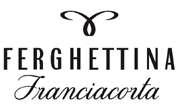
FRANCIANCORTA BRUT ROSÉ ‘17
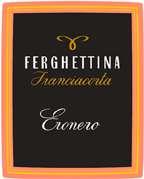
Franciacorta Rosé ‘17 is fresh in its tones of small berries, orange peel and water melon, with a fragrant and very pleasant balsamic character.

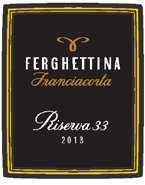
The Eronero Extra Brut ‘13, made from Pinot Noir grapes only, comes in a great version: it has a deep flavour and shows off a long and harmonious finish.
FRANCIACORTA DOSAGGIO ZERO RISERVA 33 ‘13
The Franciacorta Riserva 33 ‘13 stands out, endowed with a sparkling gustato ry tension, still very young but capable of tracing a texture of fruit and delicate herbaceous and spicy sensations, dictated by a very fine bubble that supports and prolongs a multifaceted and complex palate.
109 GAMBERO ROSSO TASTING NOTES JULY-AUGUST 2022
N. 1308/2013 1308/
CAMPAGNA
FINANZIATA AI SENSI DEL REG. UE
FRIULI VENEZIA GIULIA Sirch
TUSCANY
Sensi – Fattoria di Calappiano
via Fornalis, 277/1 Cividale del Friuli (UD) 0432 709835 sirchwine.it


The notable process of expansion started a few years ago by the Sirch family has resulted in the acquisi tion of new vineyard areas that have reached a considerable extent on the Friuli hills. Now the company can count on a complete range of wines that represent the entire offer of the regional wine world. An ambitious project made possible by the involve ment of a giant in the importation of Italian wine overseas, the result of the precious collaboration of Feudi di San Gregorio which has been in the distribution of wines produced in Fri uli for some time.
FCO CHARDONNAY CLADRECIS ‘19

Chardonnay
Cladrecis ‘19 has a strong and com plex aroma that ranges from yel low fruit in syrup to toffee, from sweet spices to linden honey and then closes with smoky notes. The sip is warm, enveloping and well balanced.

fraz. Cerbaia, 107 Lamporecchio (PT) 0573 82910 sensivini.com
Integrated with one of the most rep resentative villas of the Medici dynas ty of Florence, Fattoria di Calappiano extends with vineyards, olive groves and woods in Montalbano, between the provinces of Florence, Prato and Pistoia. It belongs to the Sensi family that operates in various roles in the world of wine: Massimo and Roberta, representatives of the fourth gener ation, were able to lead the company towards modernity, starting projects based on the quality and enhancement of the typical grapes of the territory, not without digressions towards inter national ones, such as chardonnay and petit manseng.
COLLEGONZI SANGIOVESE ‘18
The Collegonzi Sangiovese ‘18 is very good, with an aromatic and in triguing bouquet in which mineral and blood notes can be recognised, alongside sensa tions of tomato leaf, cherry and straw berry. A lively entry into the mouth, with an important but agile structure, and with a prolonged finish on hints of spice.

TASTING NOTES
GAMBERO ROSSO
VINI D’ITALIA GAMBERO ROSSO JULY-AUGUST 2022
110
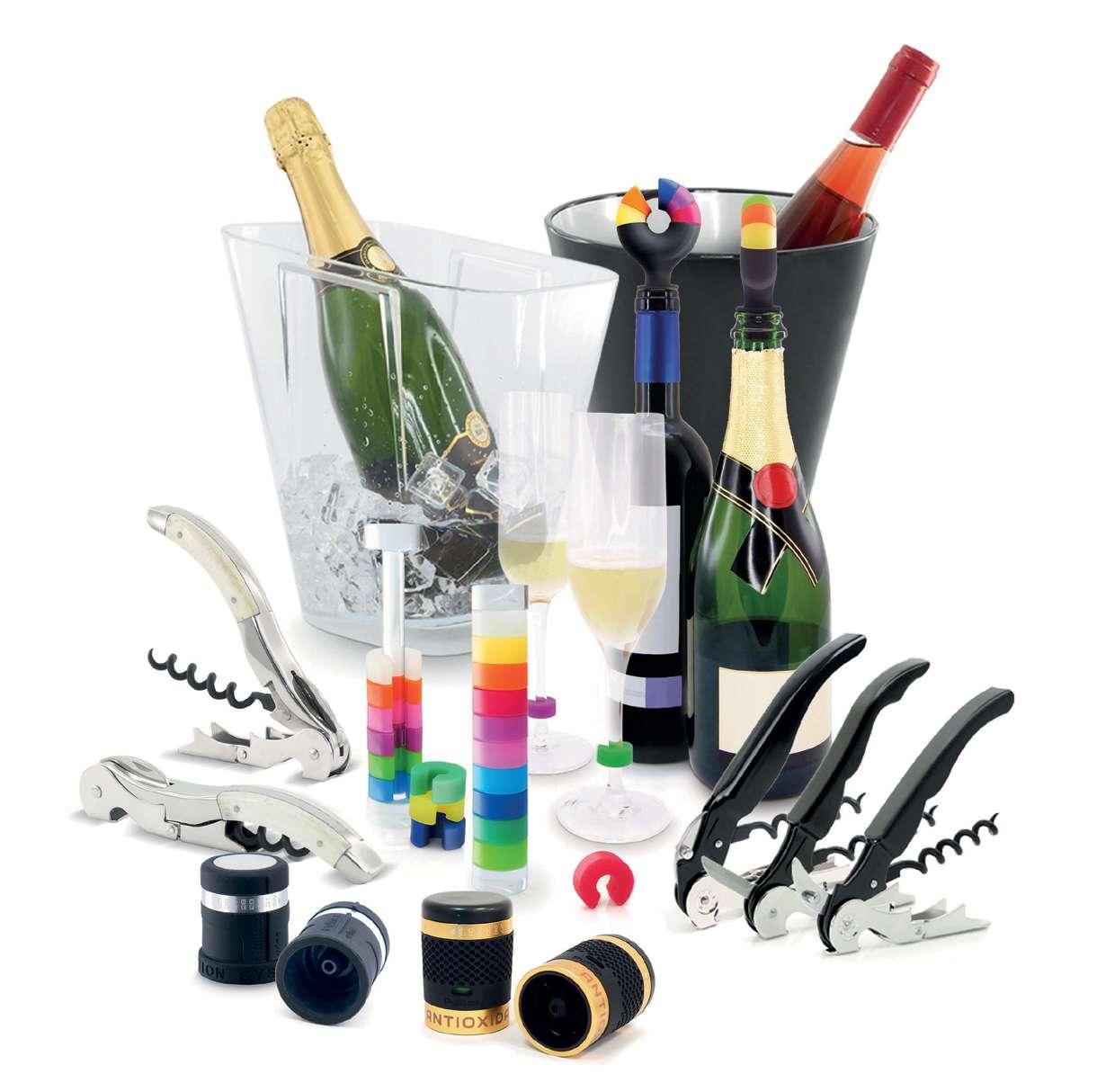
www.pulltex.com
GAMBERO ROSSO www.gamberorosso.it
SENIOR EDITOR Lorenzo Ruggeri
PHOTO EDITOR Rossella Fantina
LAYOUT

Chiara Buosi, Maria Victoria Santiago
CONTRIBUTORS
Giovanni Angelucci, Clara Barra, Giuseppe Carrus, Tommaso Costa, Antonella De Santis, Gianni Fabrizio, Paola Mencarelli, William Pregentelli, Massimiliano Rella, Marco Sabellico, Loredana Sottile, Alessio Turazza
PHOTOGRAPHS AND DRAWINGS
Roberto Pastrovicchio (cover) Alessandro Naldi, Valeria Necchio, Massimiliano Rella
GR USA CORP PUBLISHER & PRESIDENT Paolo Cuccia
Advertising Class Pubblicità SpA Milano, Via Marco Burigozzo, 5 - tel. 02 58219522
For commercial enquiries: kanchieri@class.it
Advertising director Paola Persi email: ufficio.pubblicita@gamberorosso.it
Gambero Rosso and are registered trademarks belonging to Gambero Rosso S.p.A. GAMBERO ROSSO is a Registered Trademark used under license by GR USA CORP Copyright by GAMBERO ROSSO S.P.A. 2022. All rights reserved. Nothing may be reprinted in whole or in part without written permission from the publisher.
GR USA CORP is not responsible for loss, damage, or any other injury as to unsolicited manuscripts, unsolicited artwork or any other unsolicited materials. july-august 2022
a www.gamberorossointernational.com ✉ international@gamberorosso.it f GamberoRossoInternational





























 SEASONAL COCKTAIL by Paola Mencarelli
Simone Pifferi, Mad Cocktail & Cucina, Riccione
by Paola Mencarelli
SEASONAL COCKTAIL by Paola Mencarelli
Simone Pifferi, Mad Cocktail & Cucina, Riccione
by Paola Mencarelli


































































 by Lorenzo Ruggeri and Gianni Fabrizio
by Lorenzo Ruggeri and Gianni Fabrizio
































 words by Alessio Turazza - infographics by Alessandro Naldi
words by Alessio Turazza - infographics by Alessandro Naldi












































 words and images by Massimiliano Rella
words and images by Massimiliano Rella





































 words by Giovanni Angelucci – infographics by Alessandro Naldi
words by Giovanni Angelucci – infographics by Alessandro Naldi






































































































